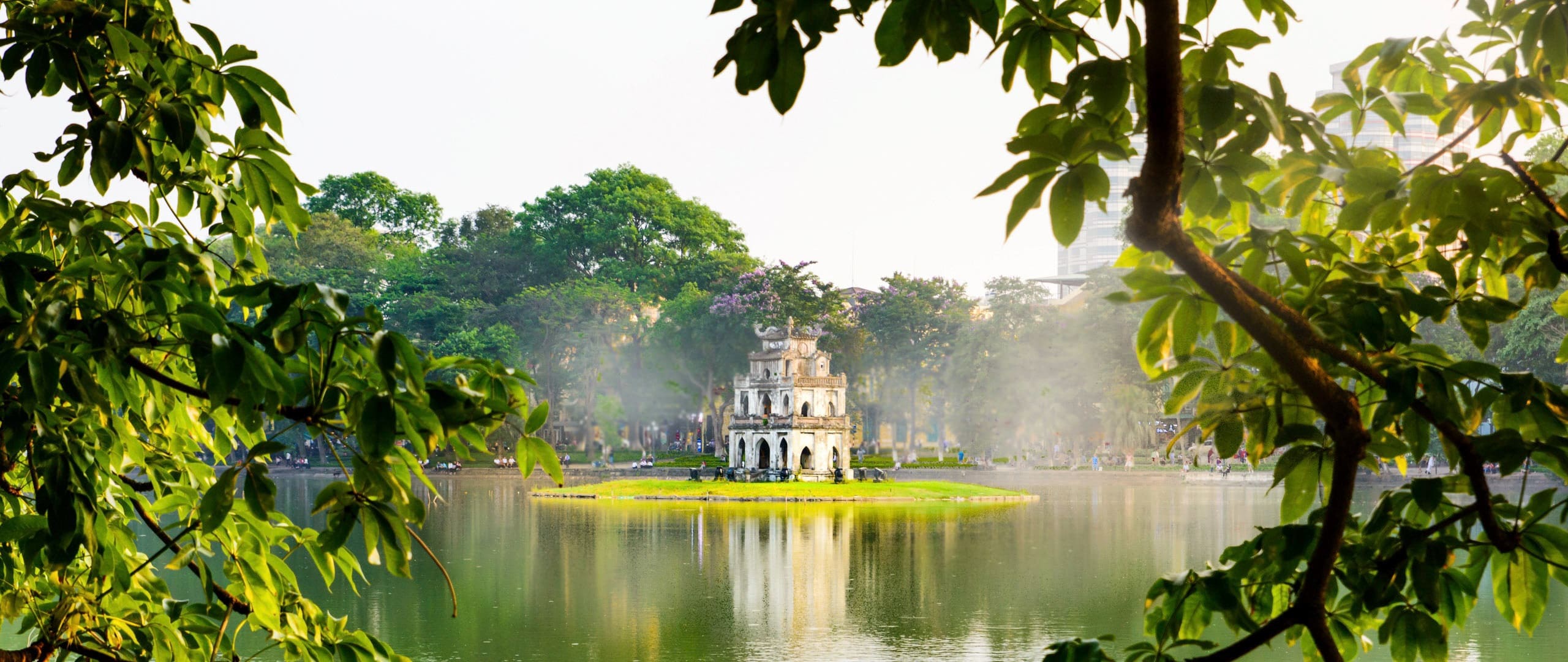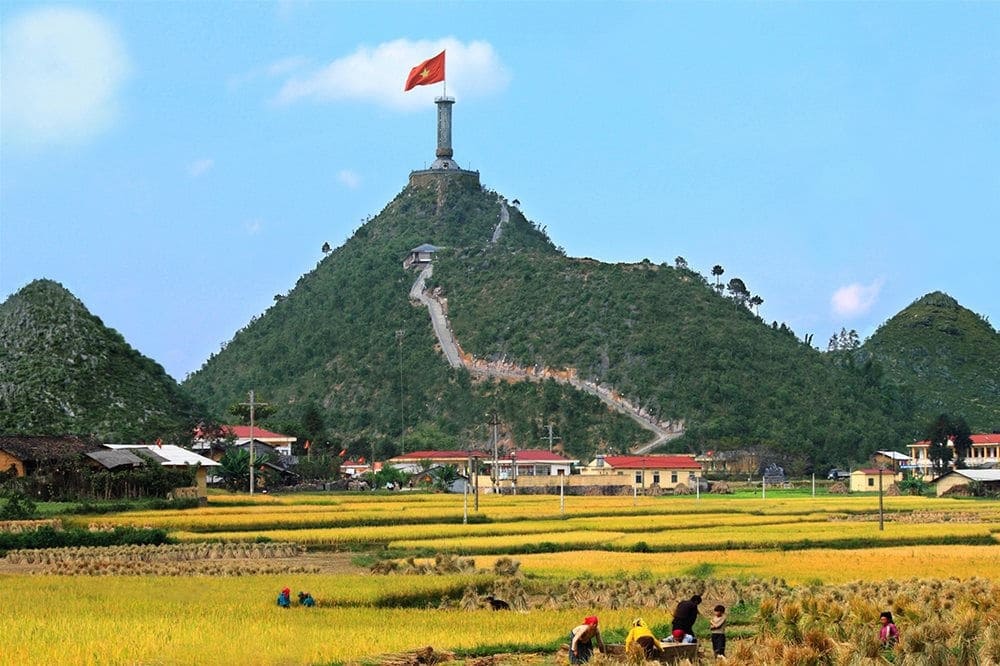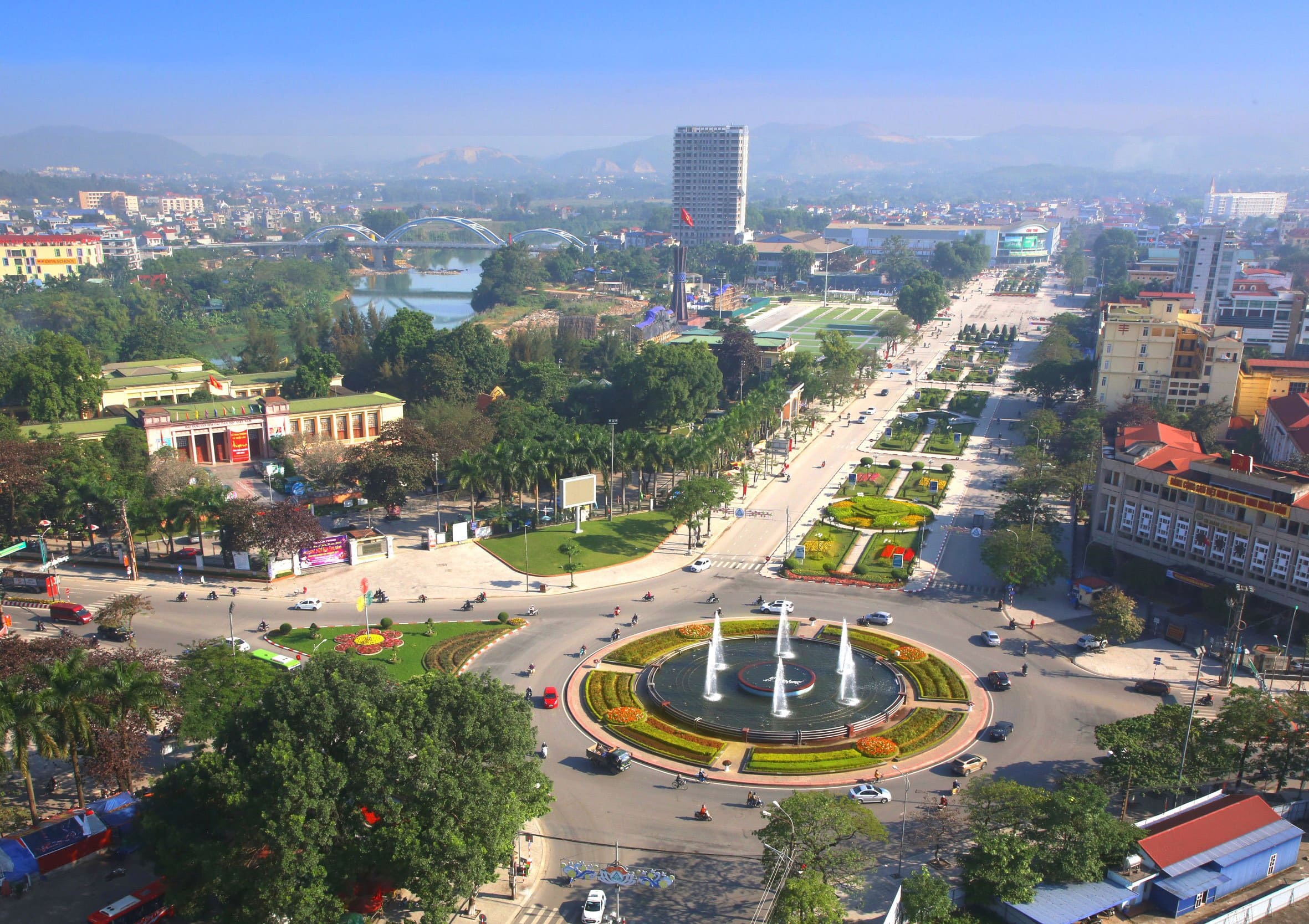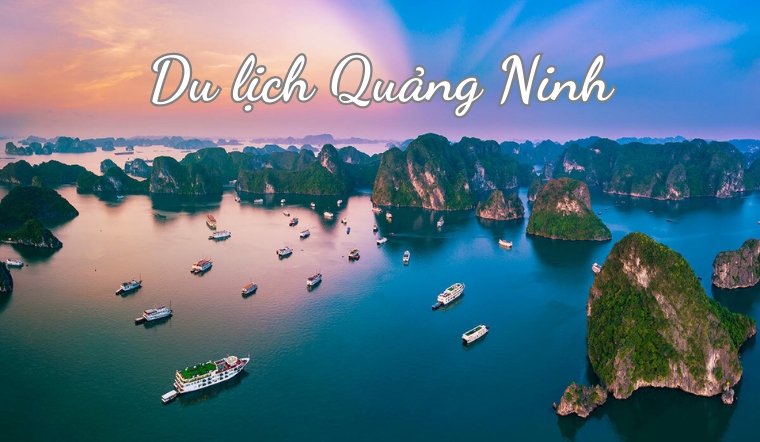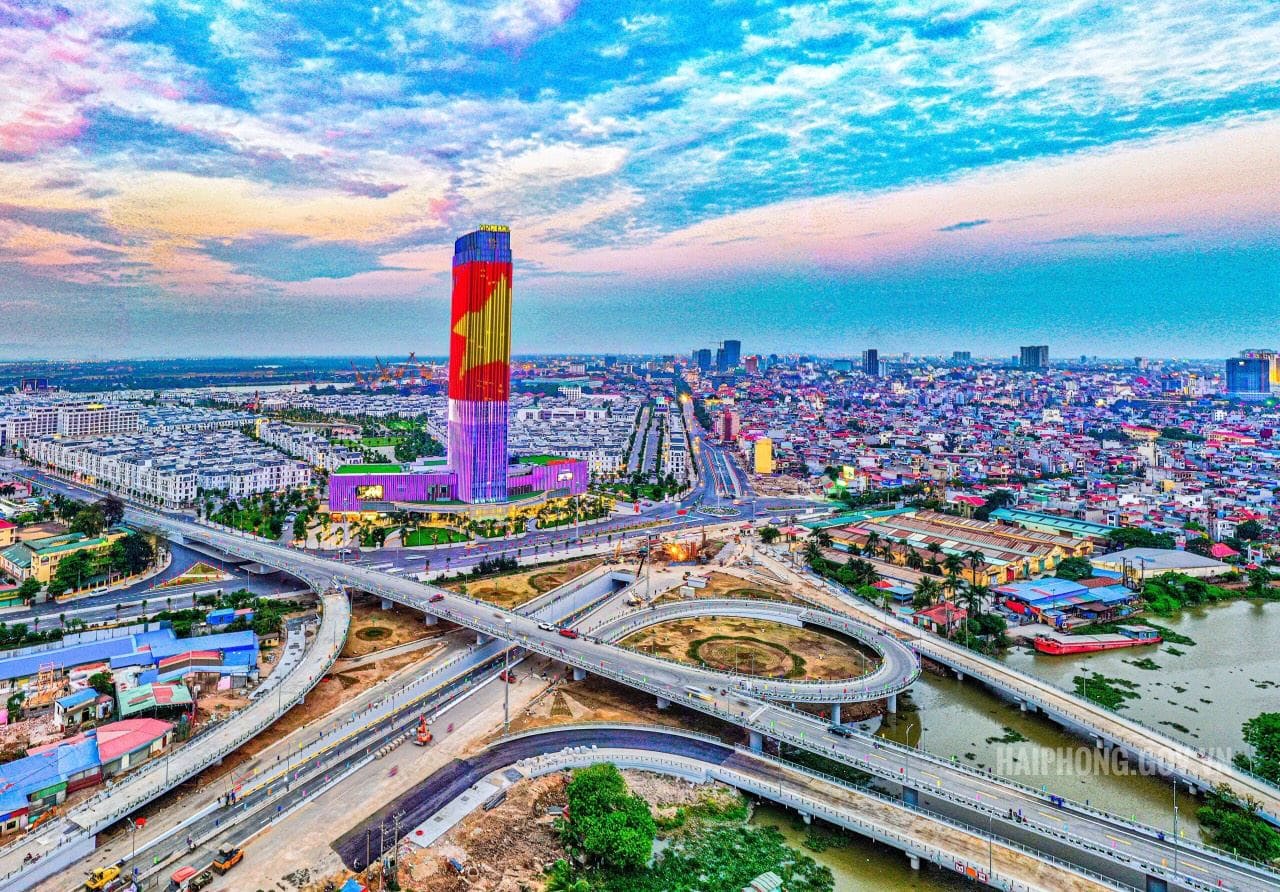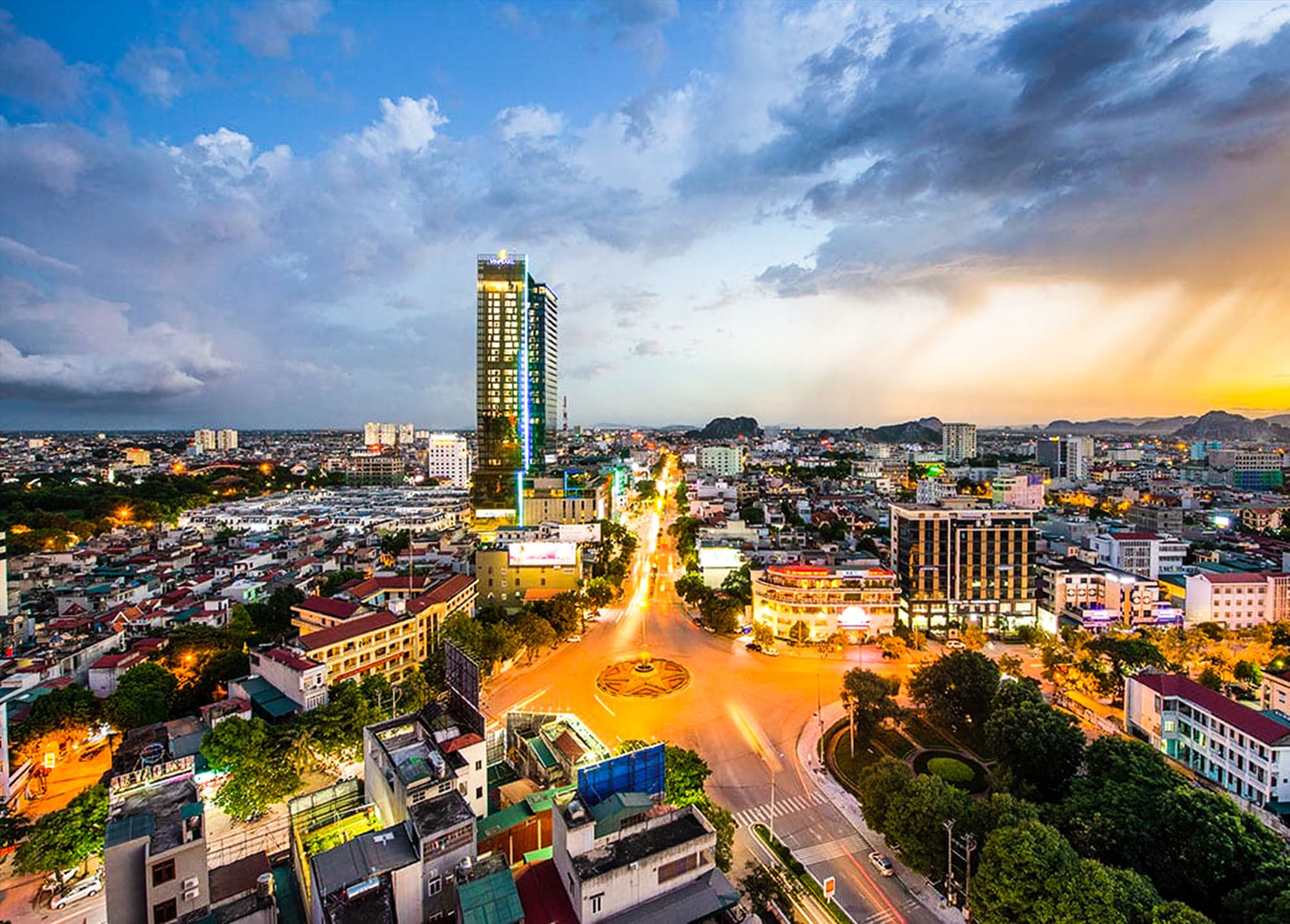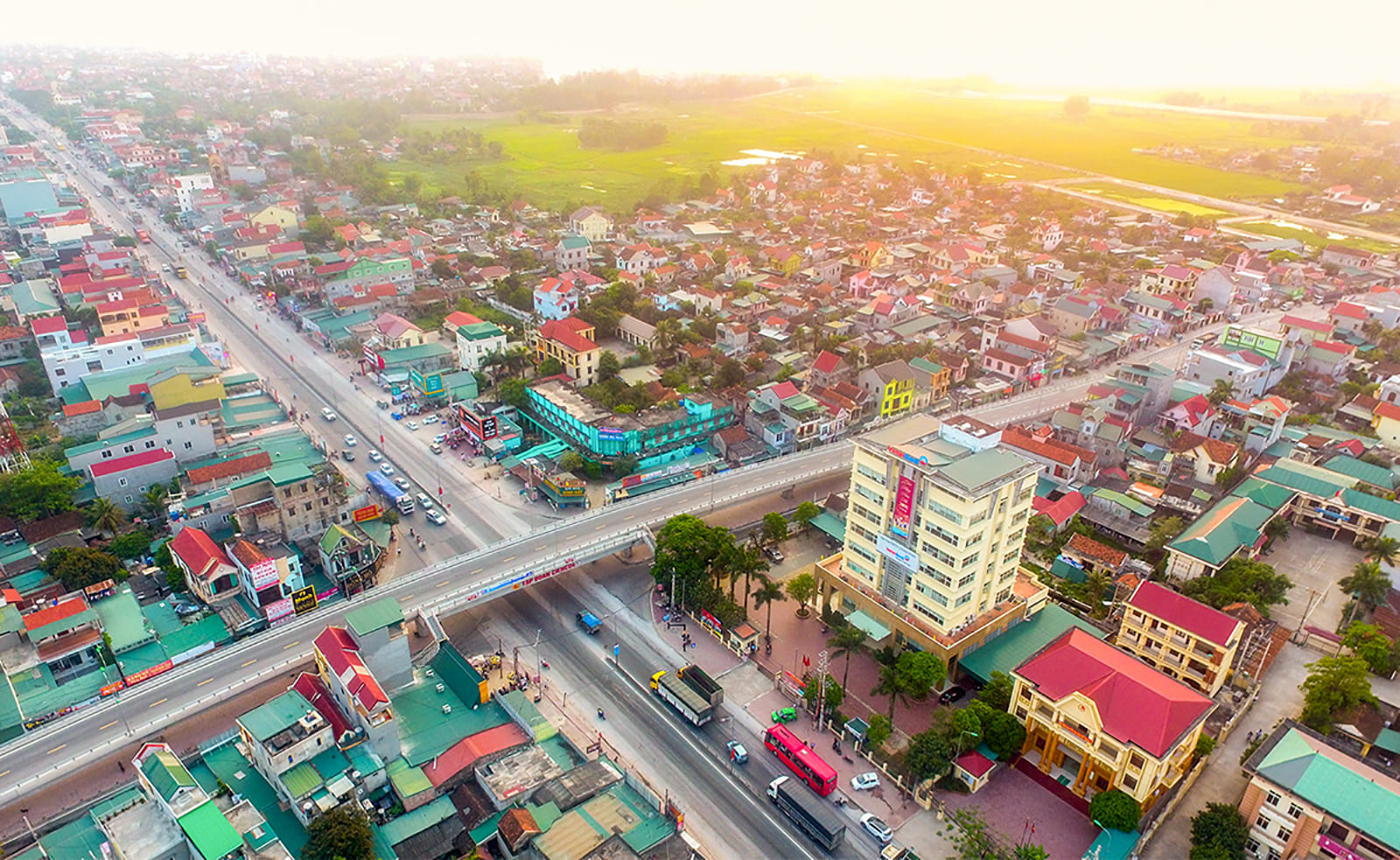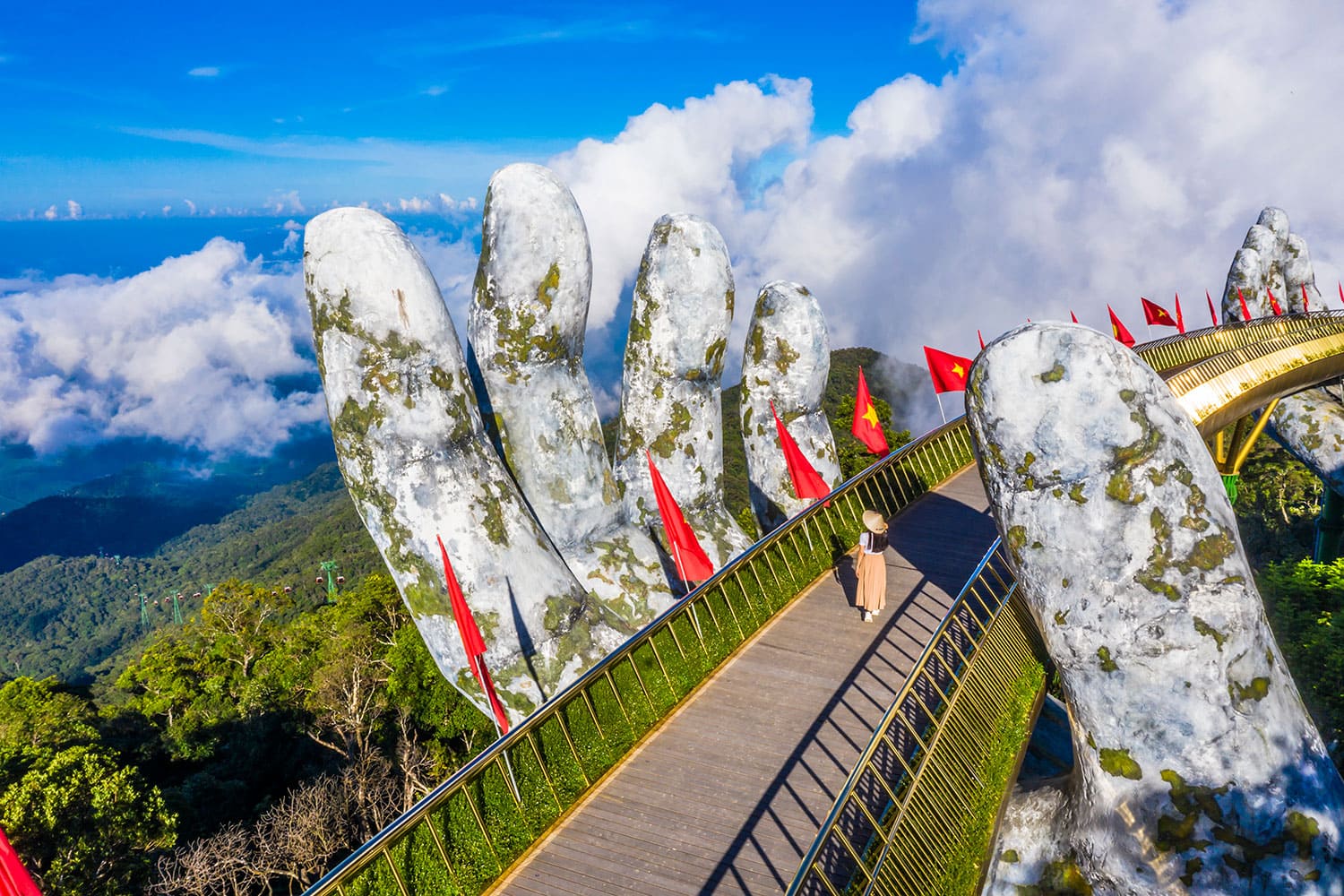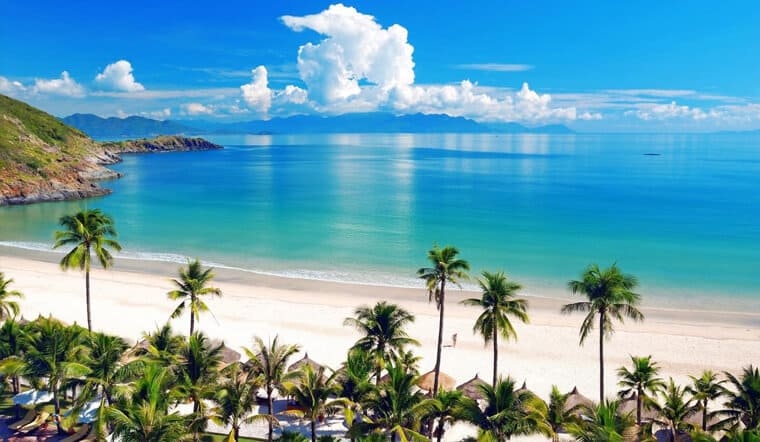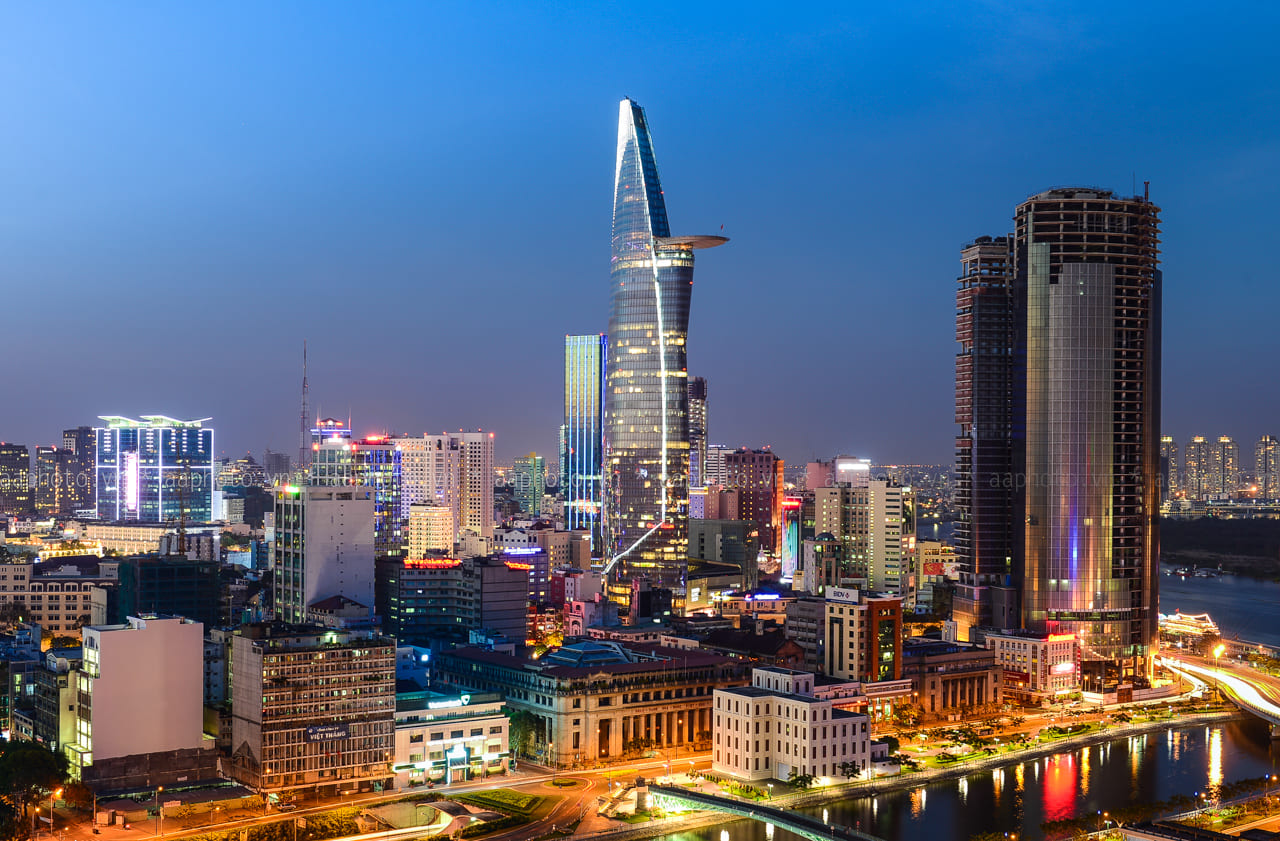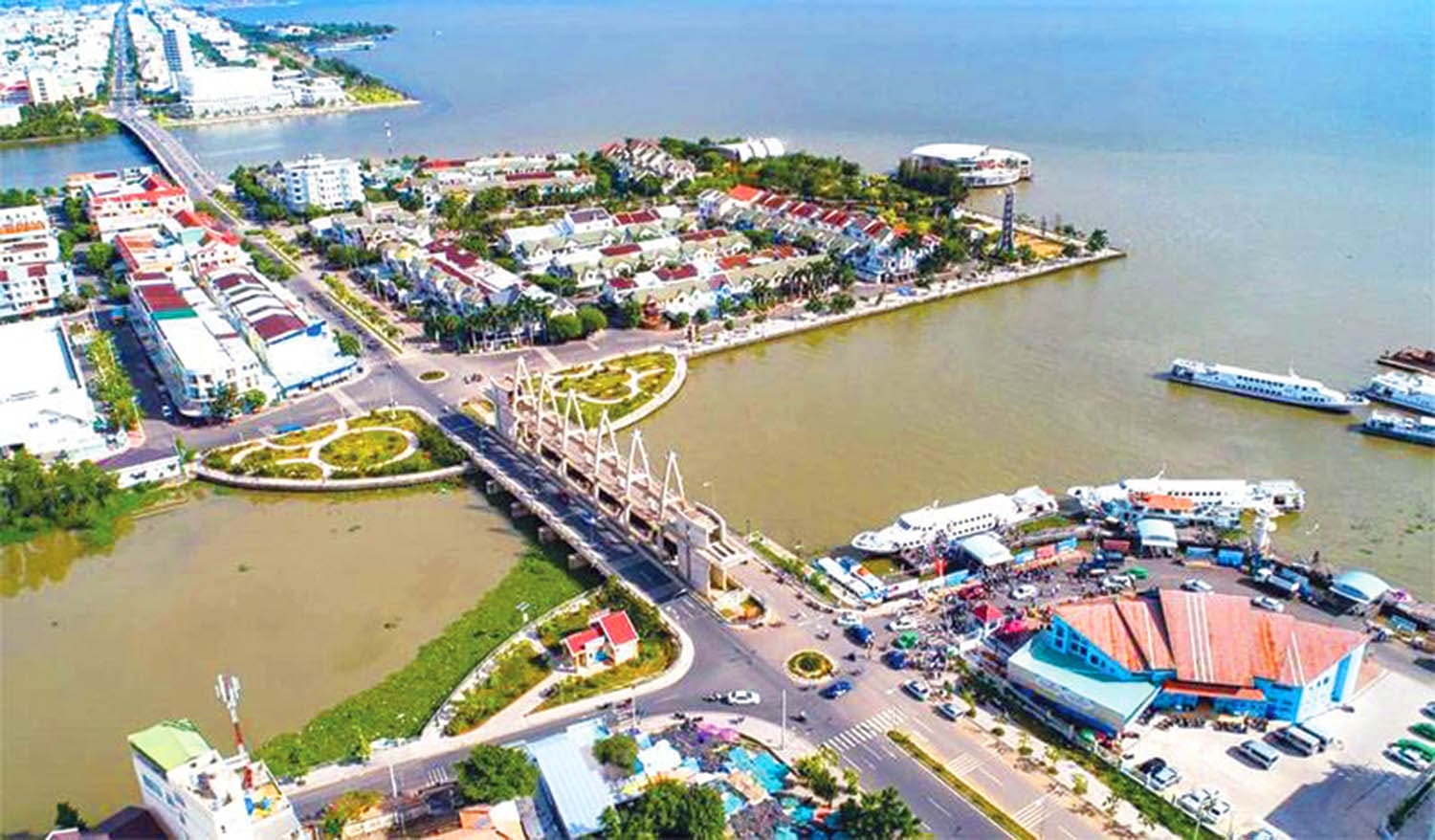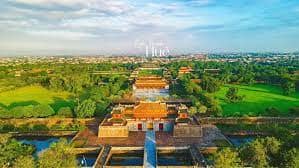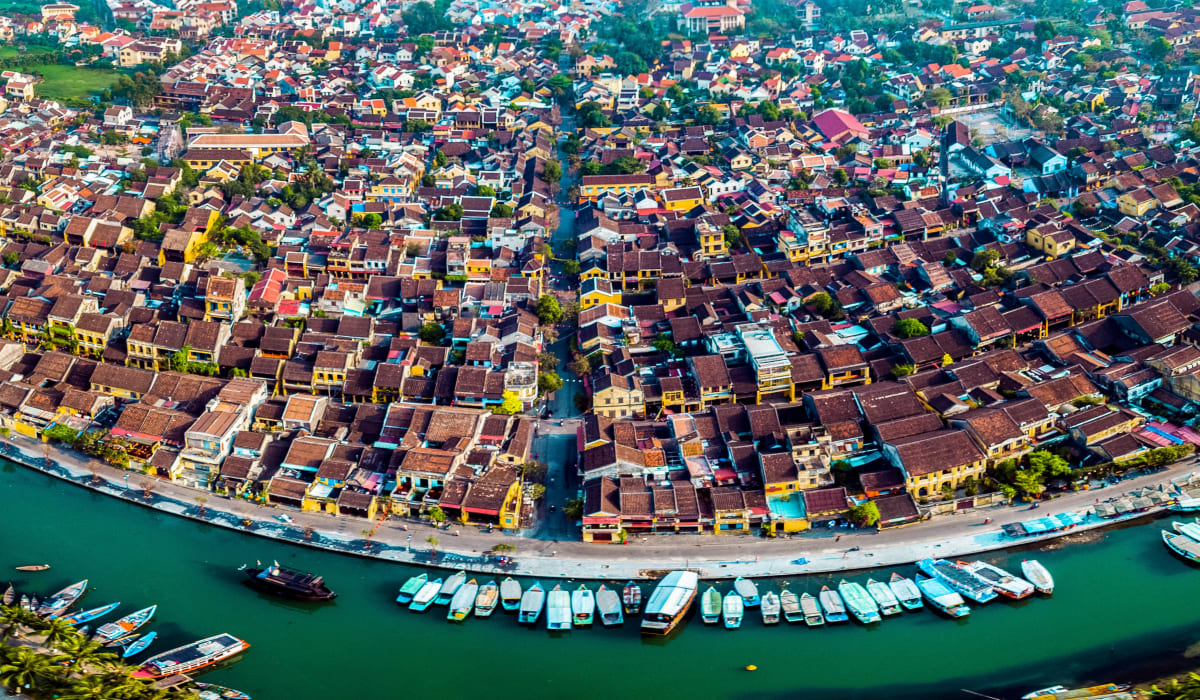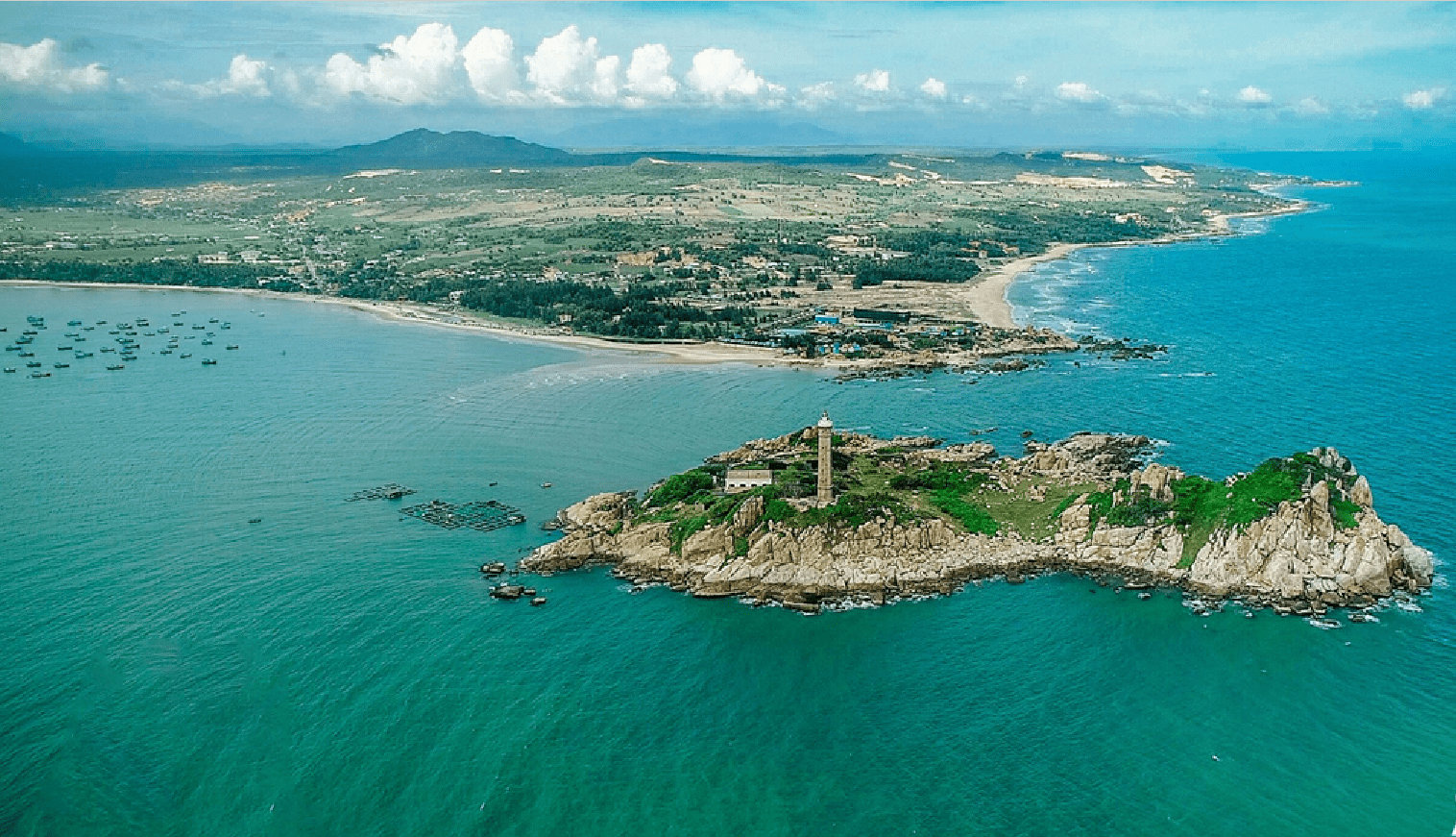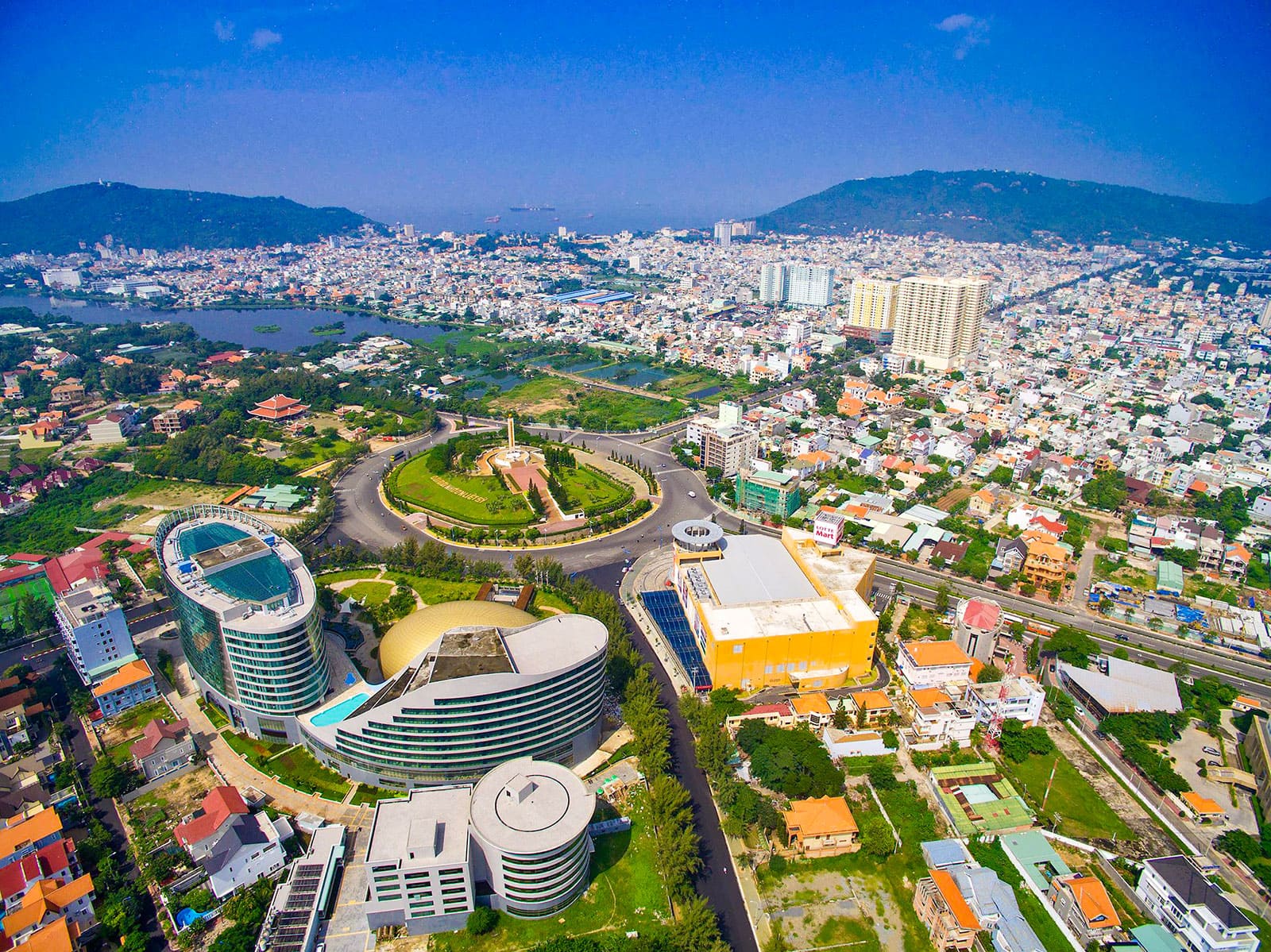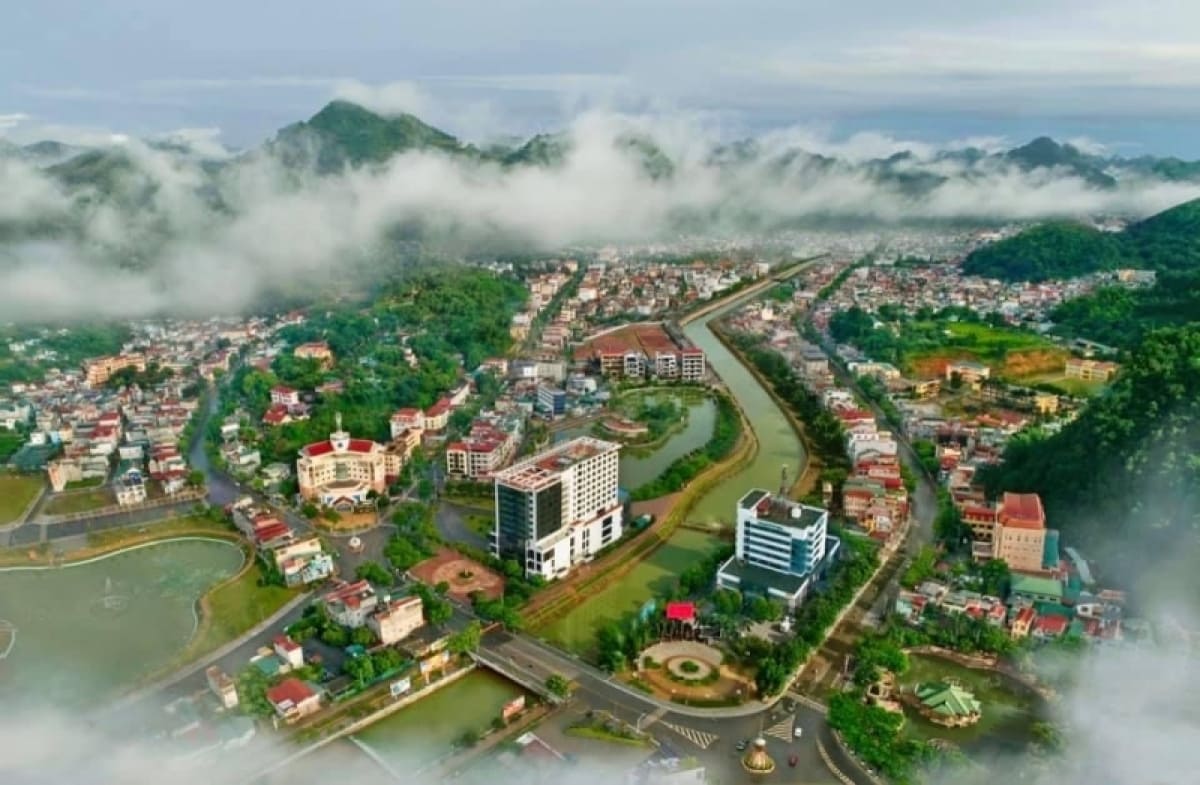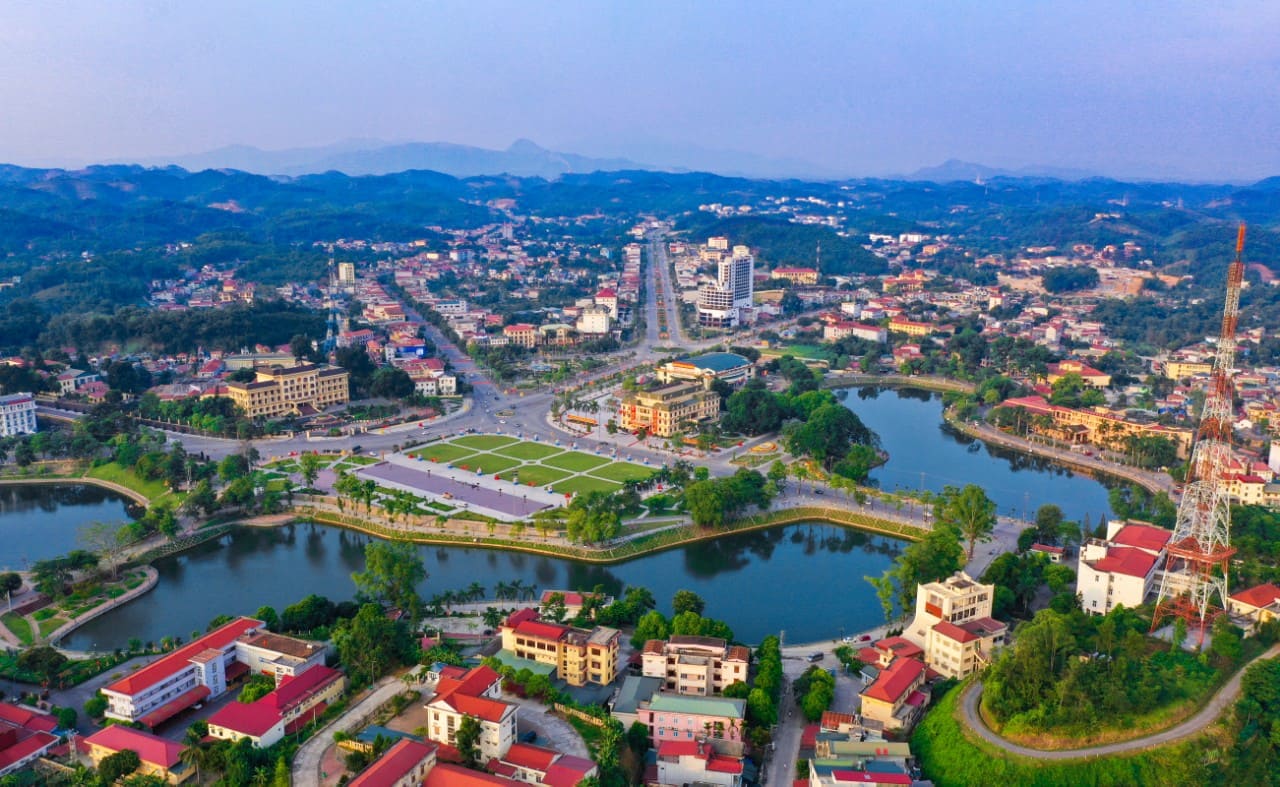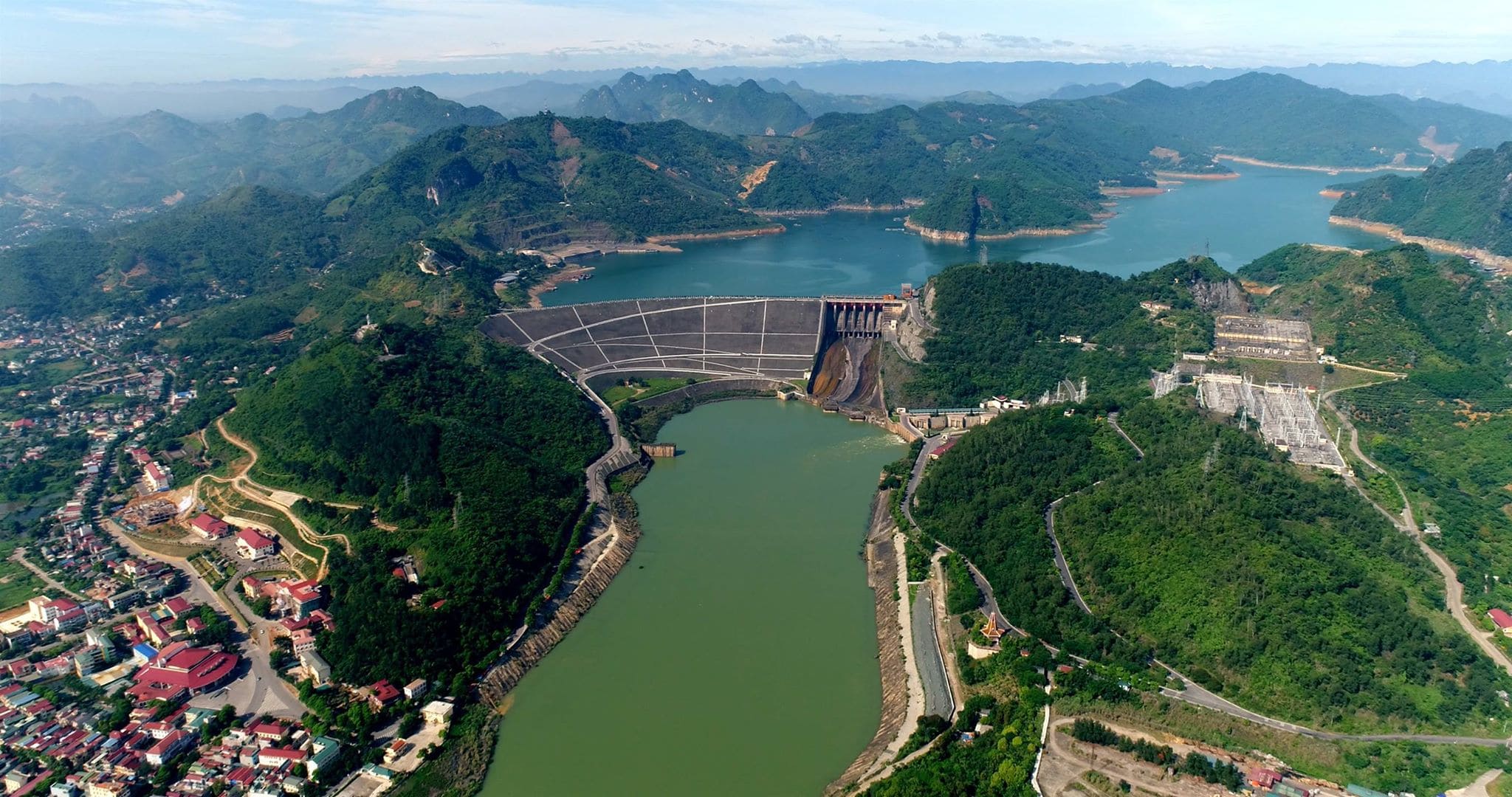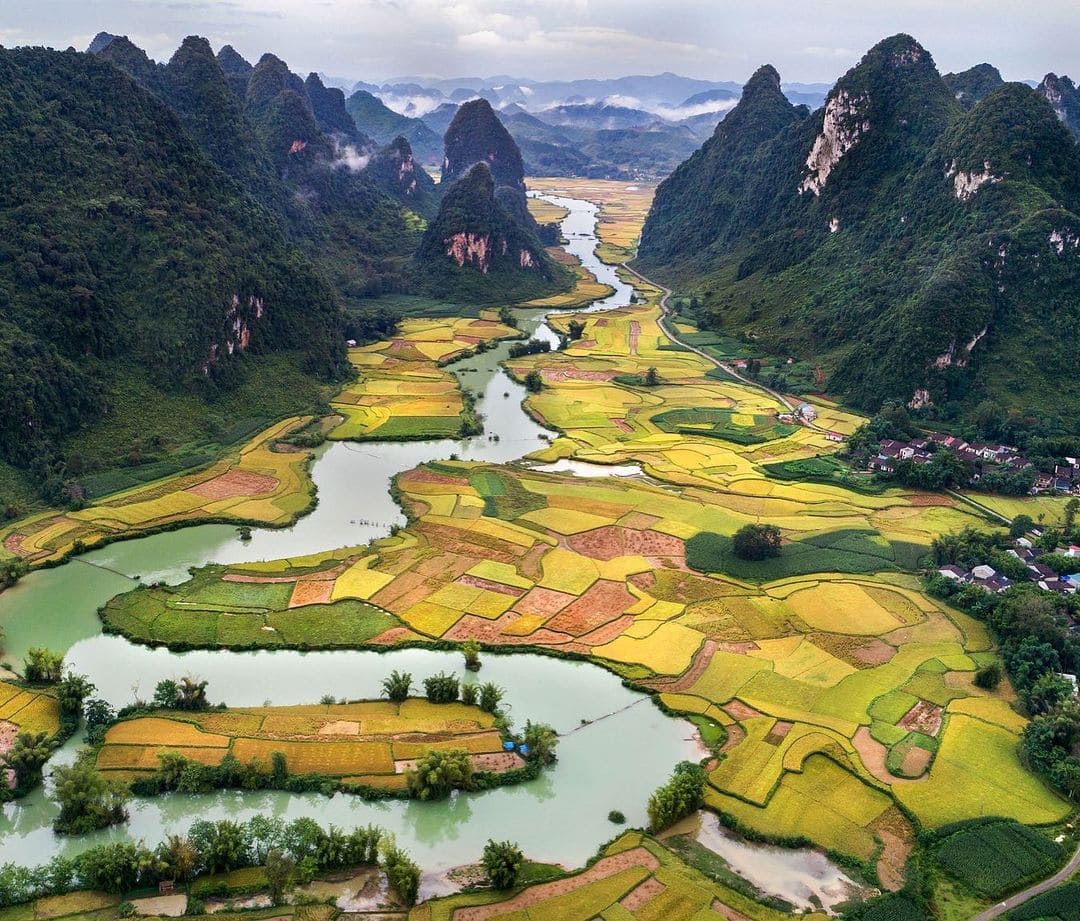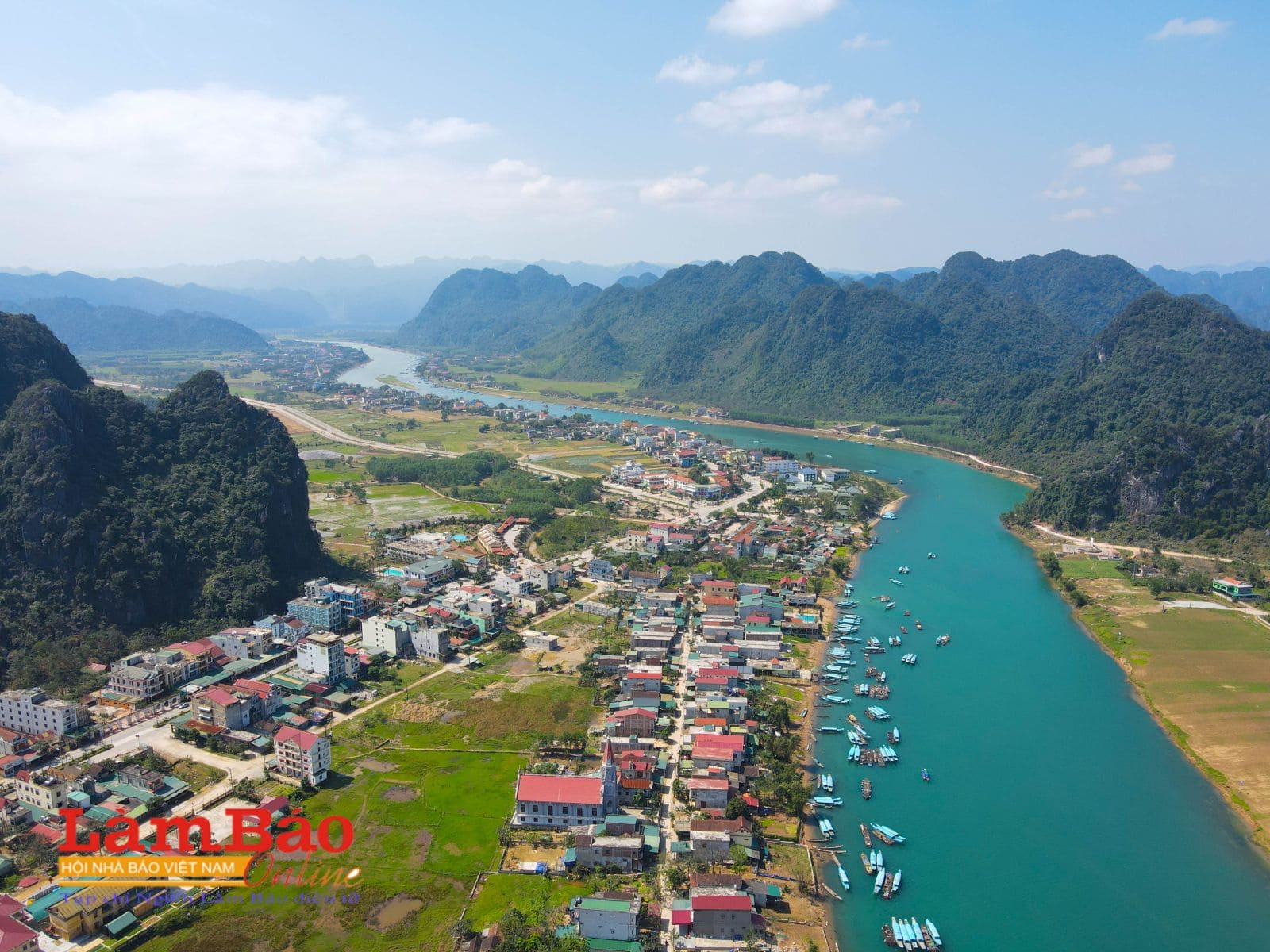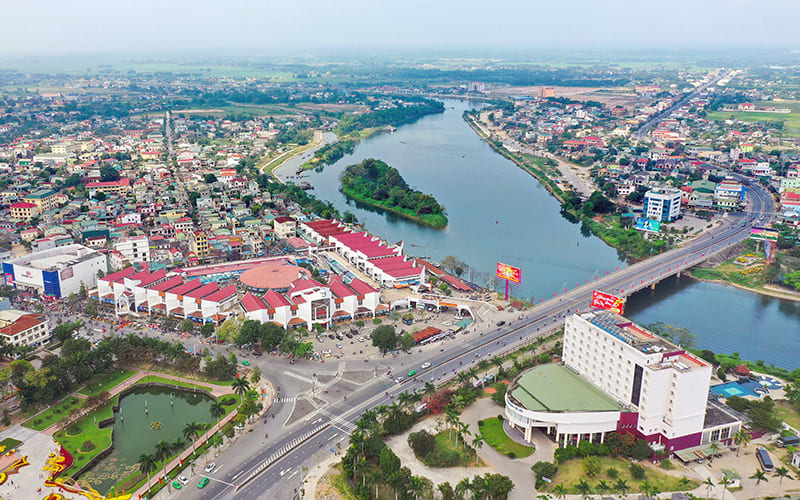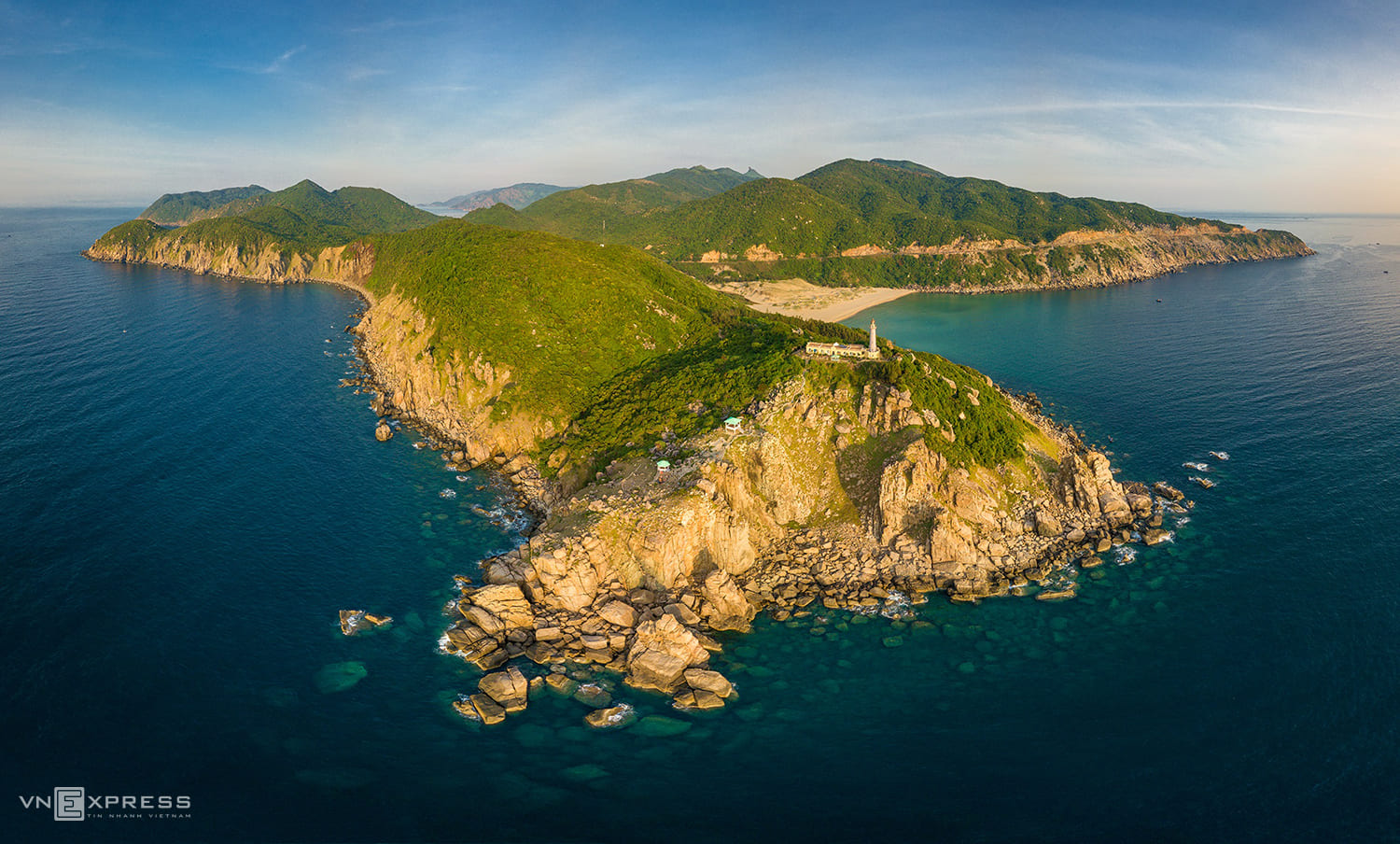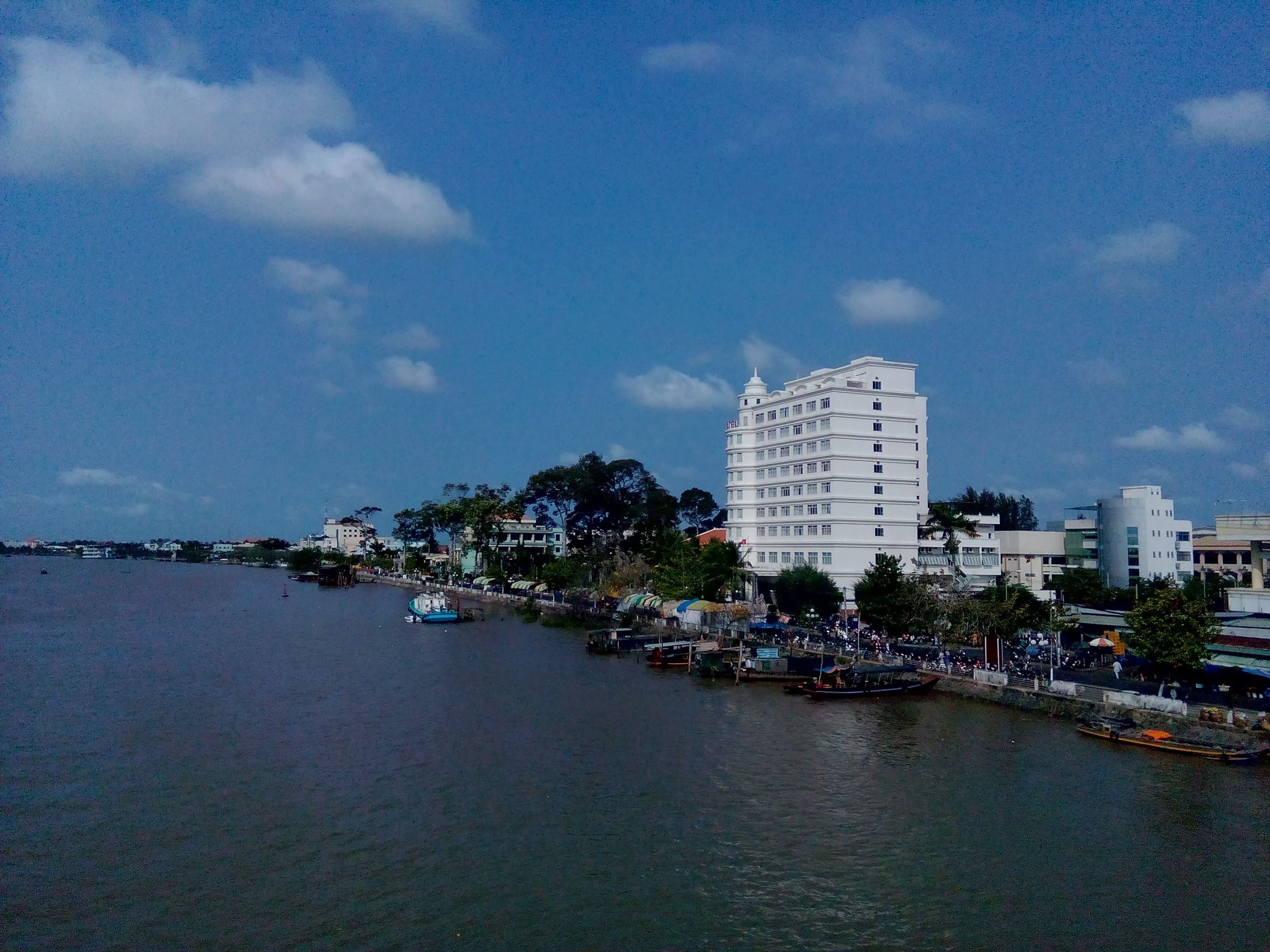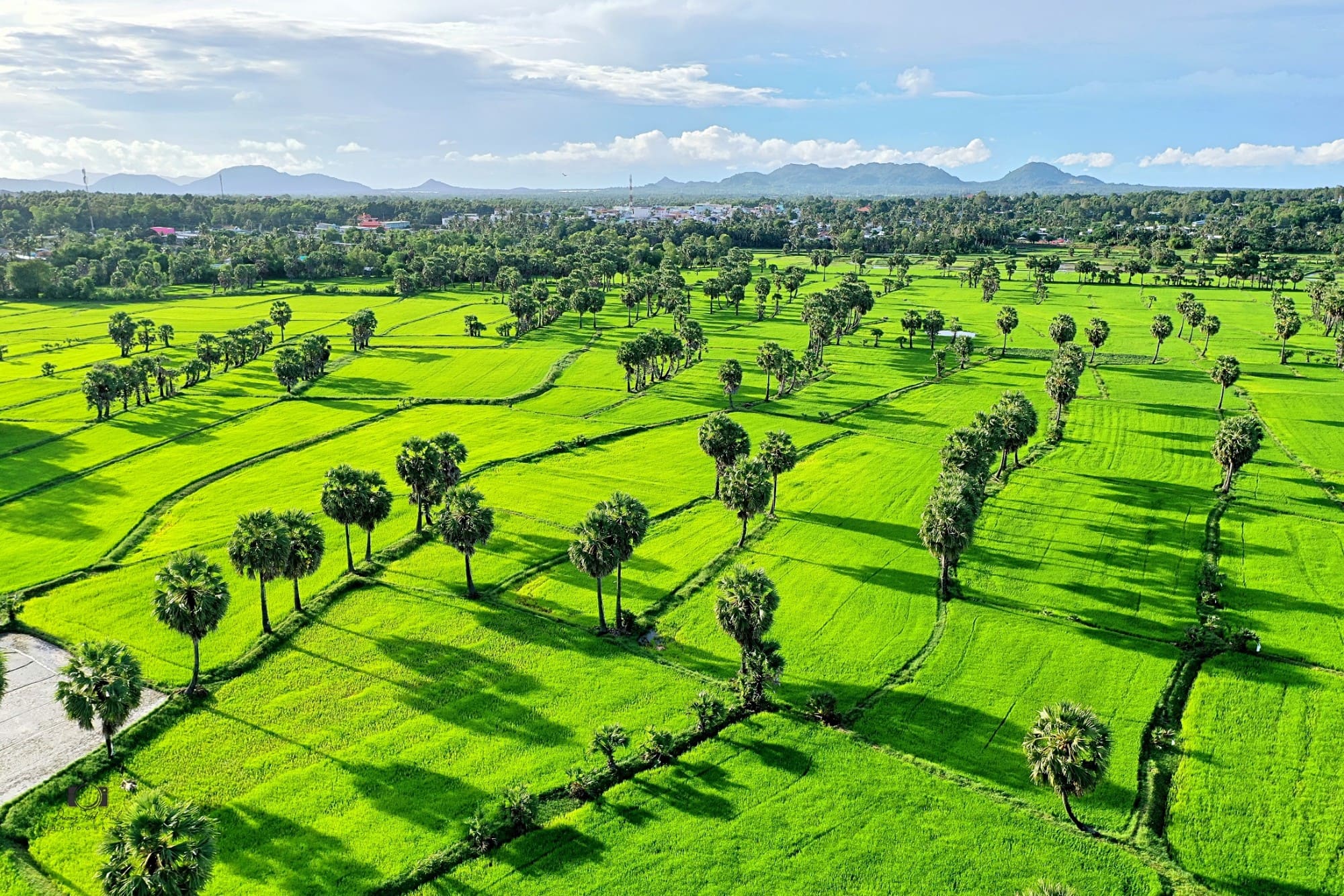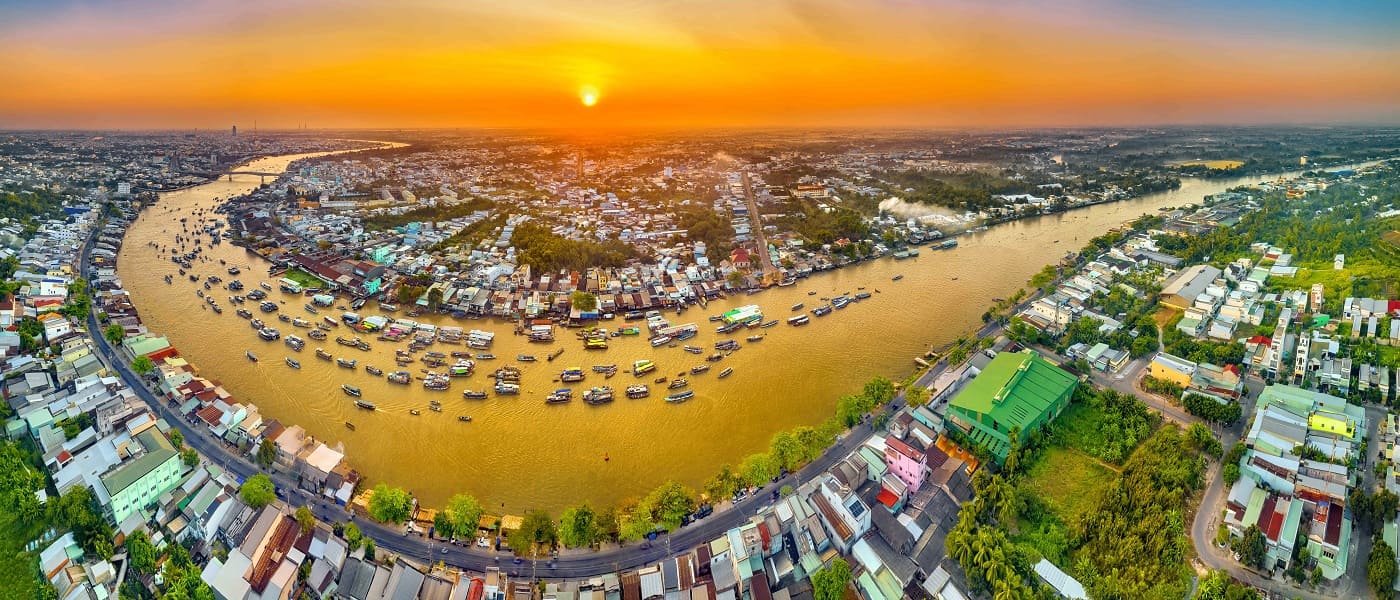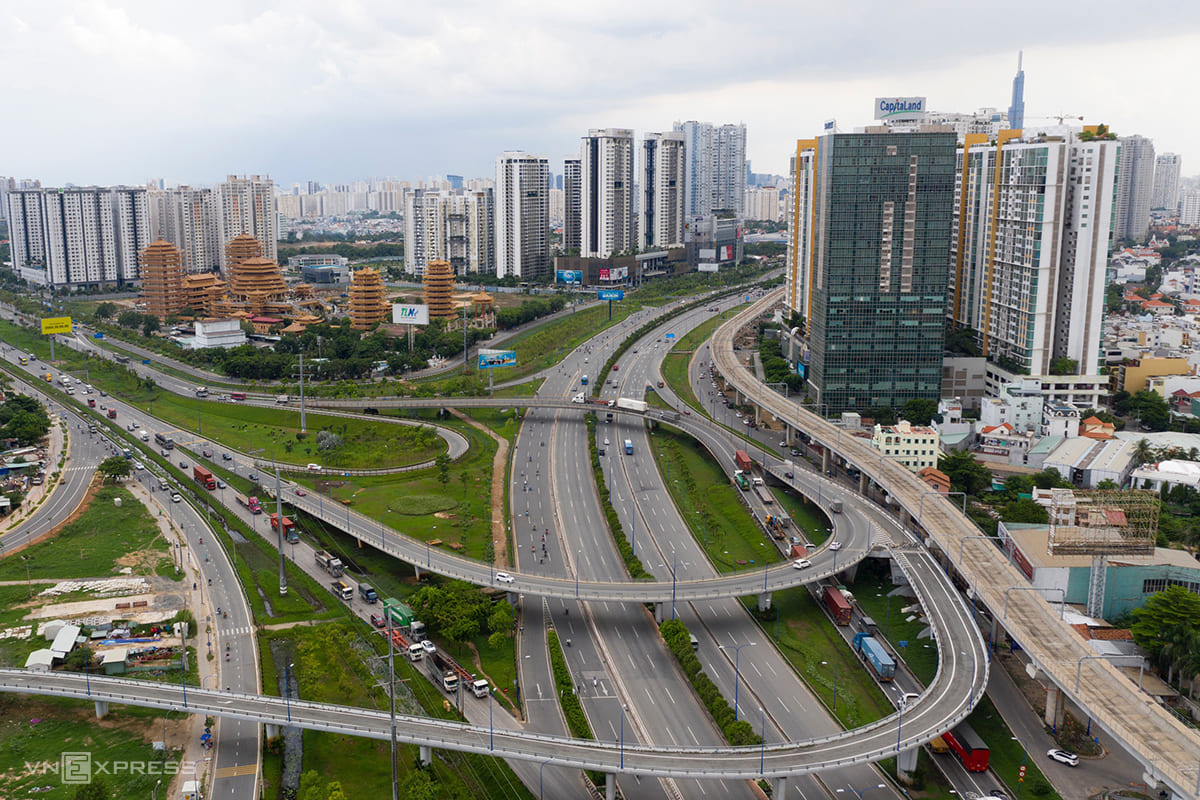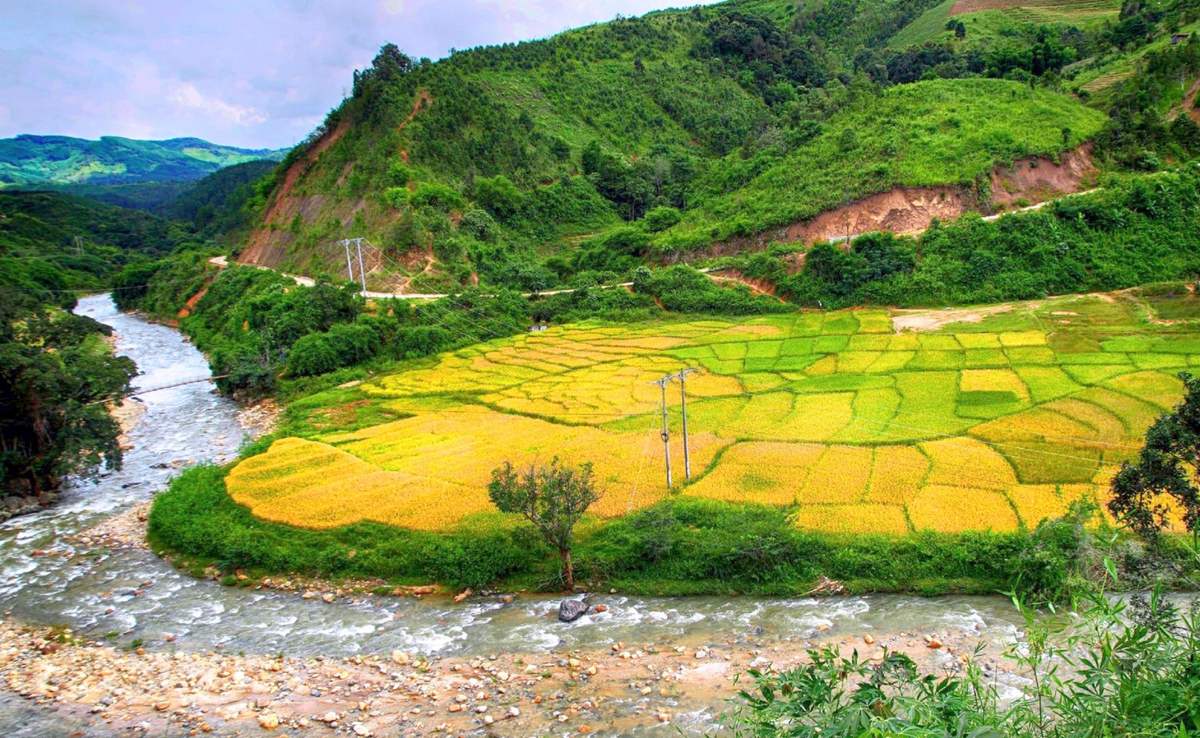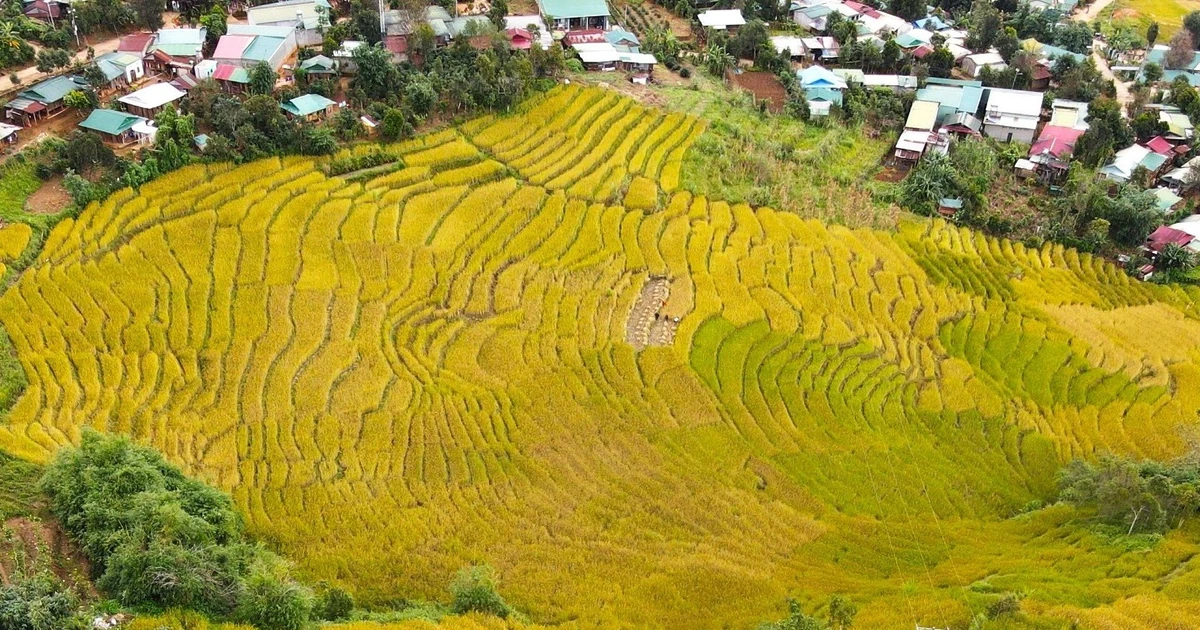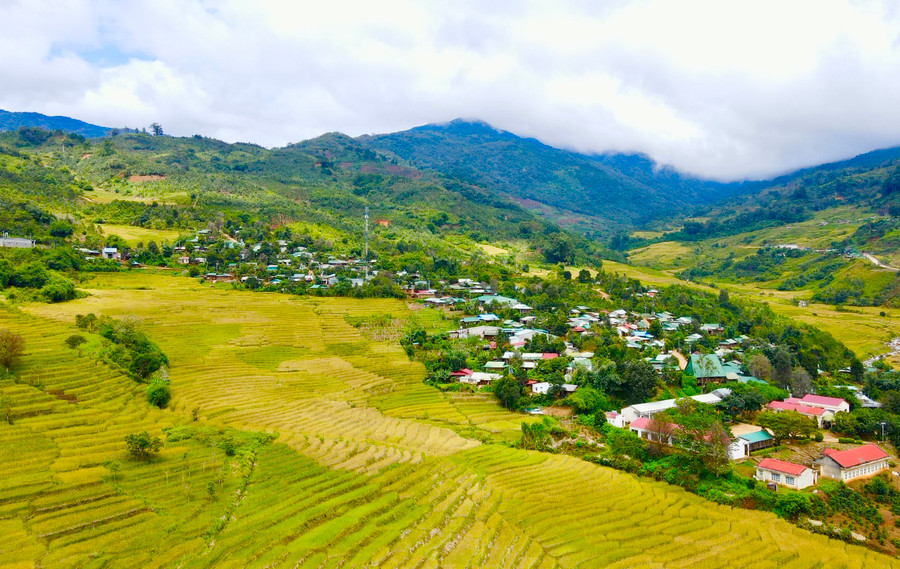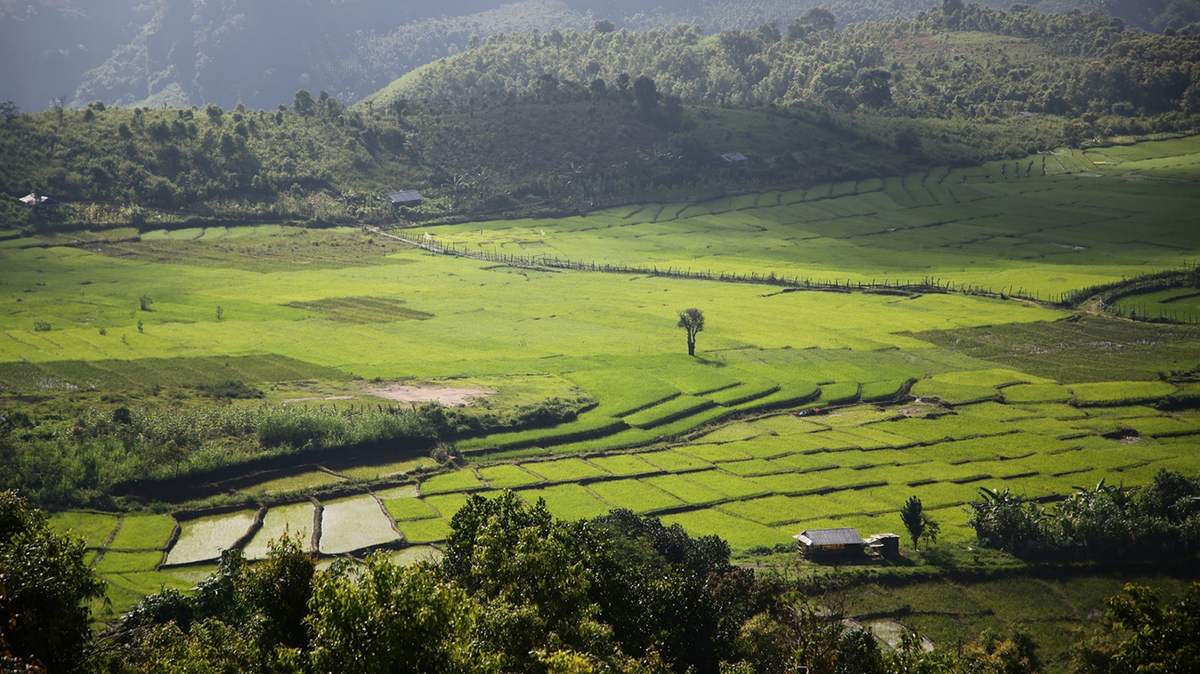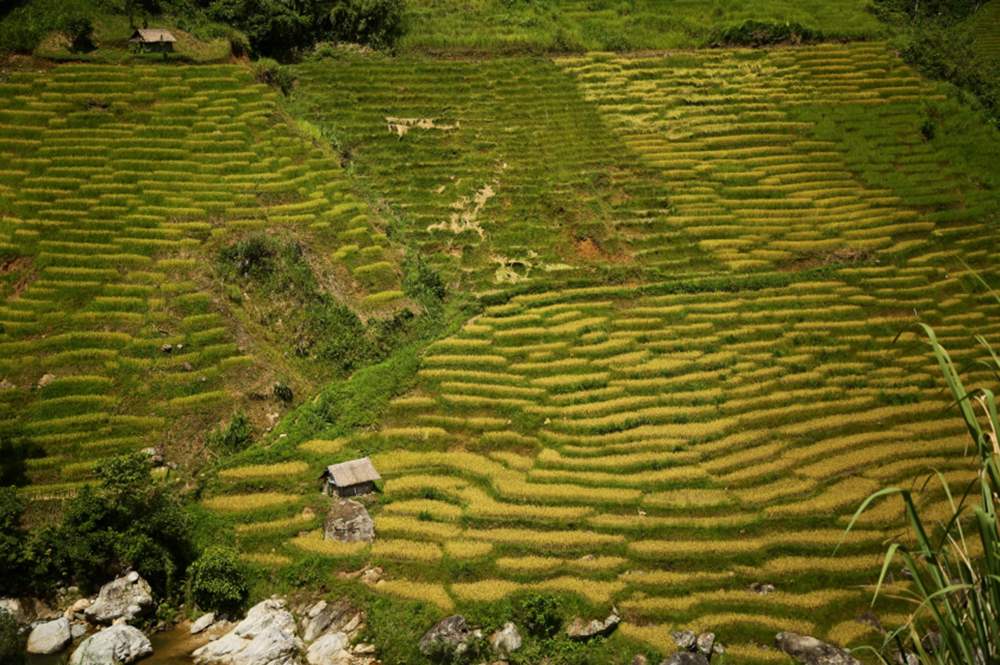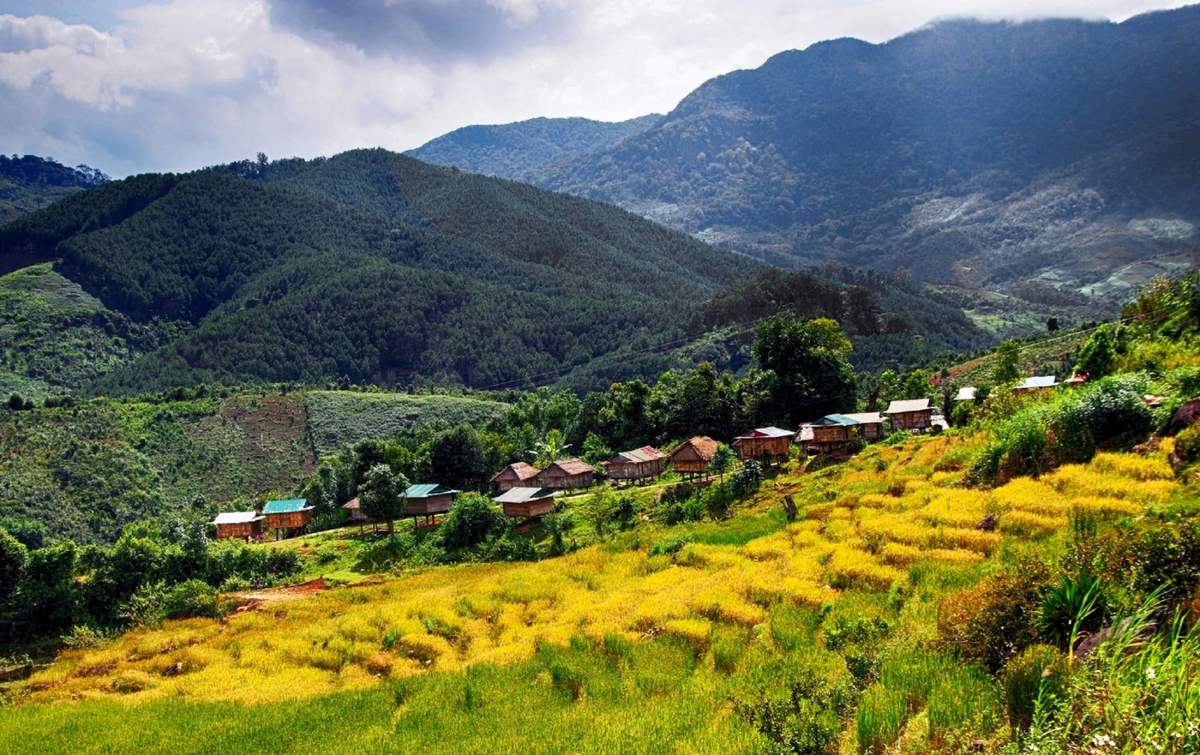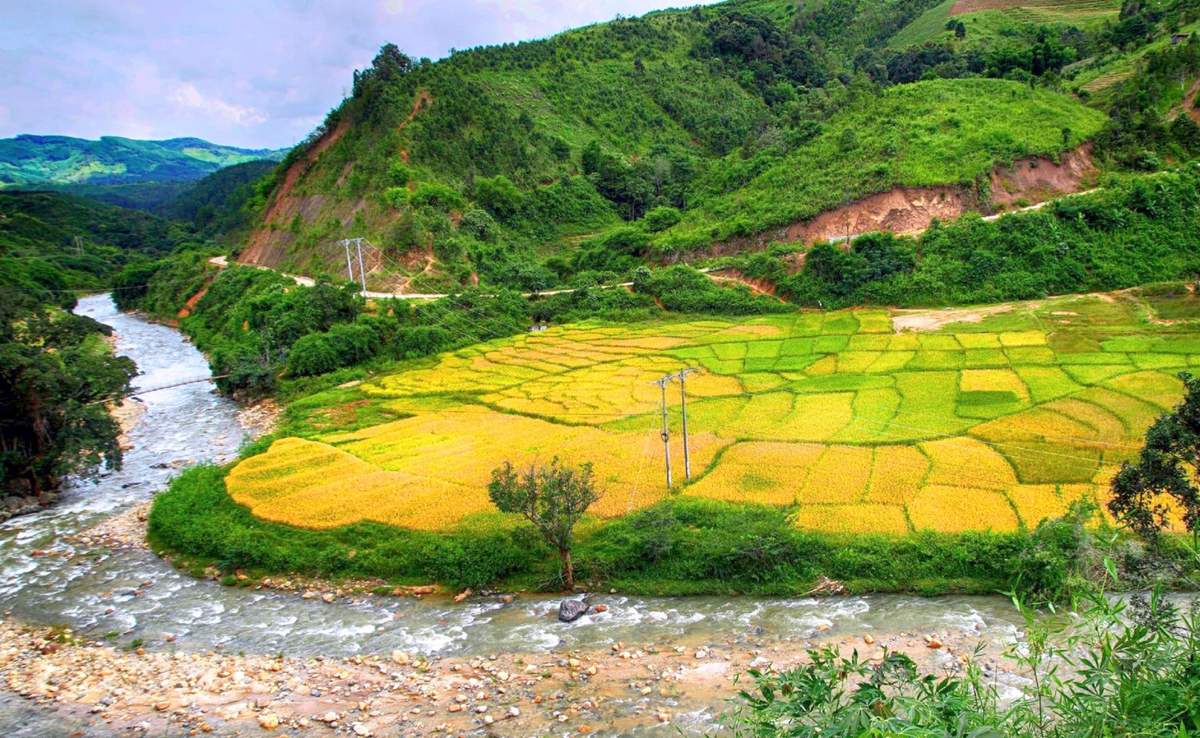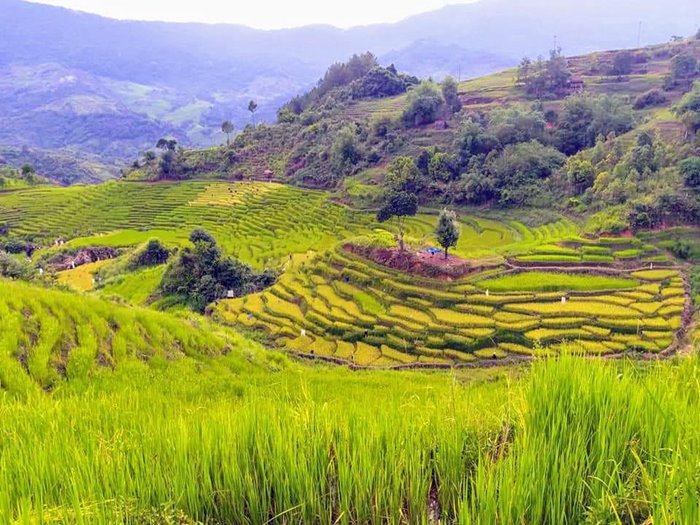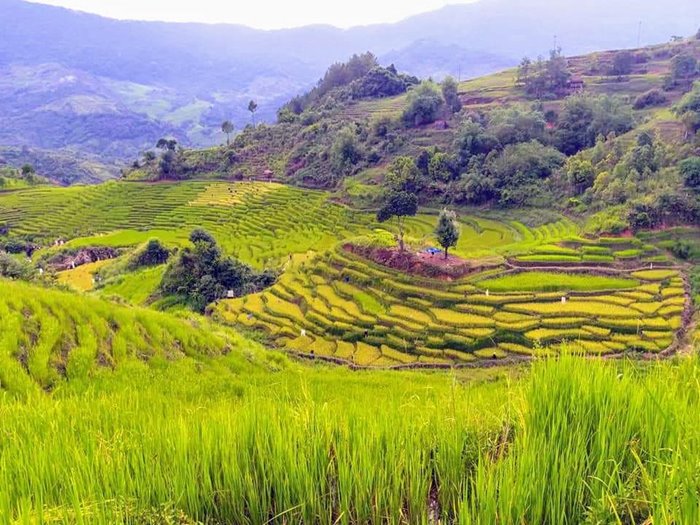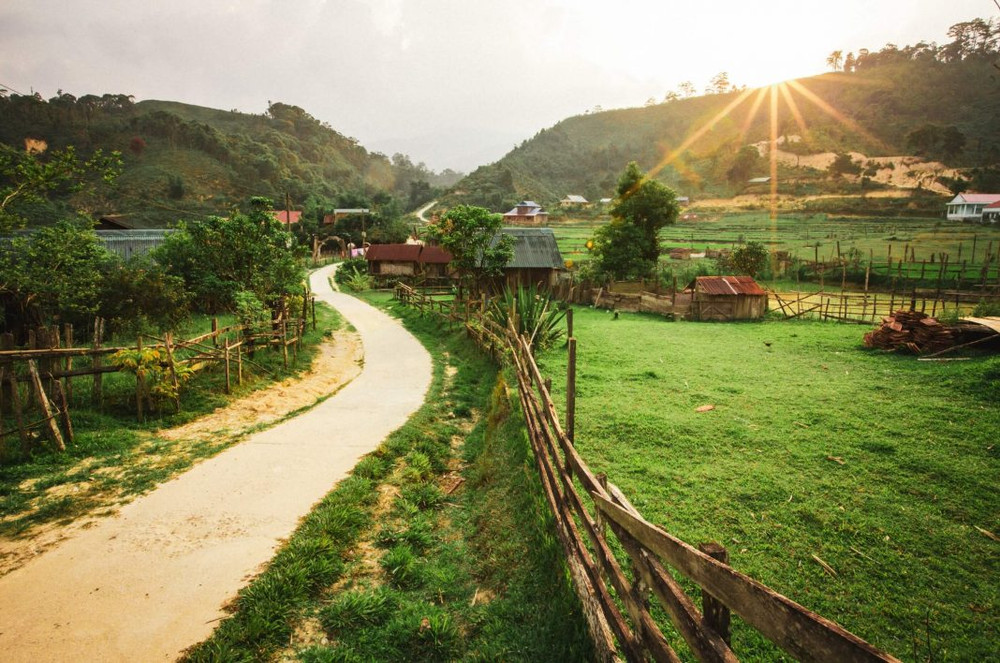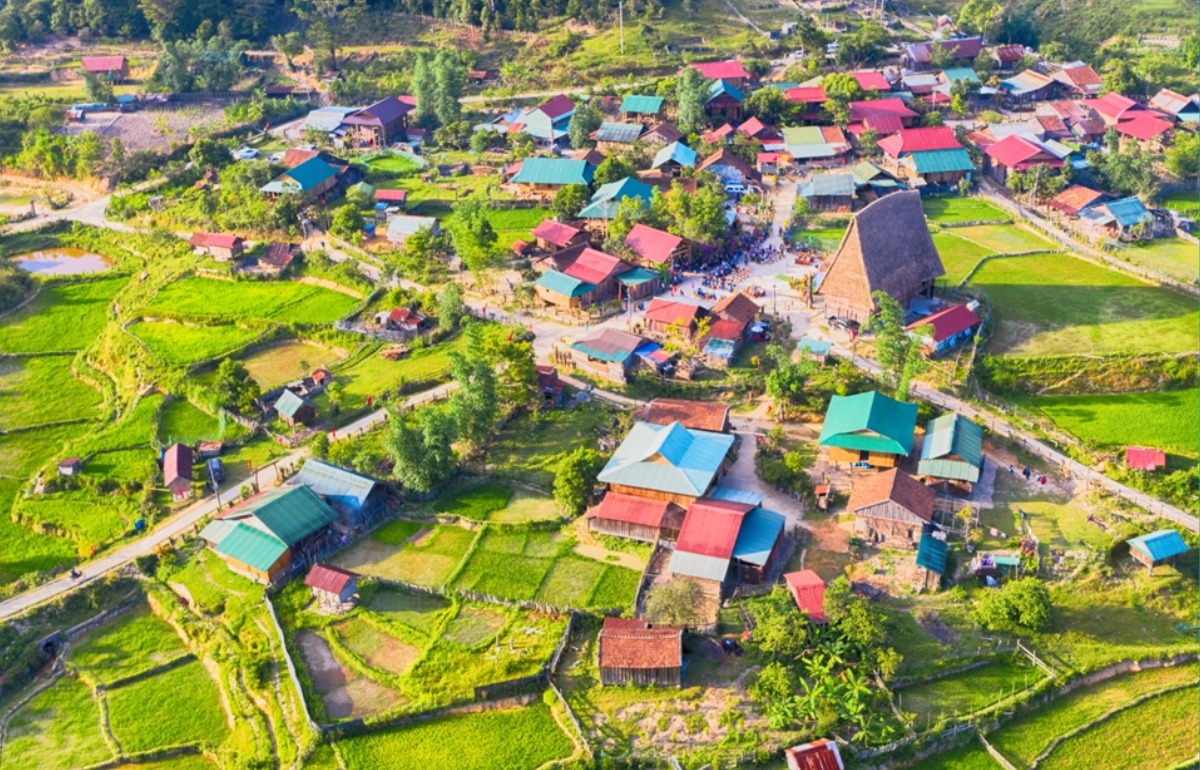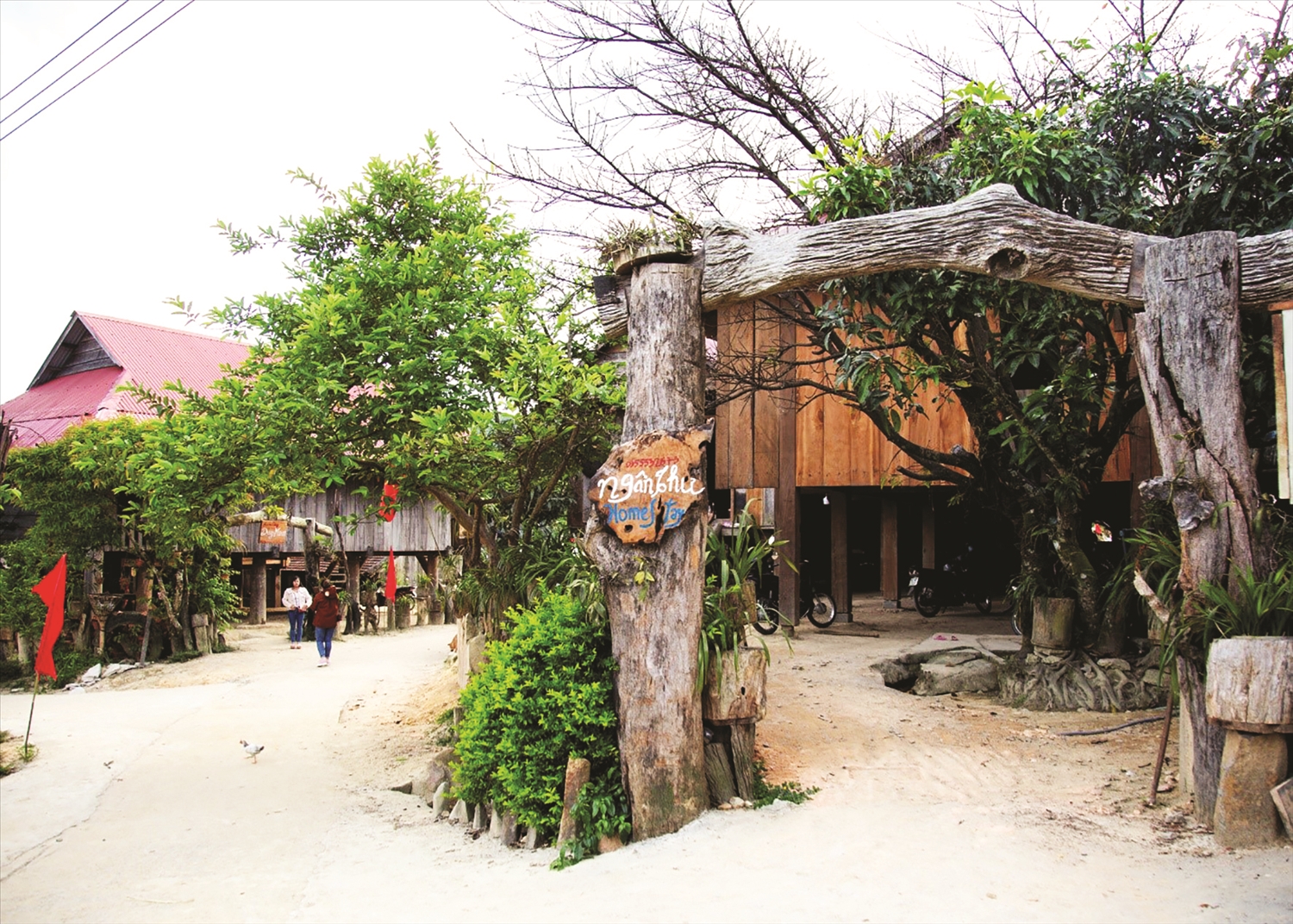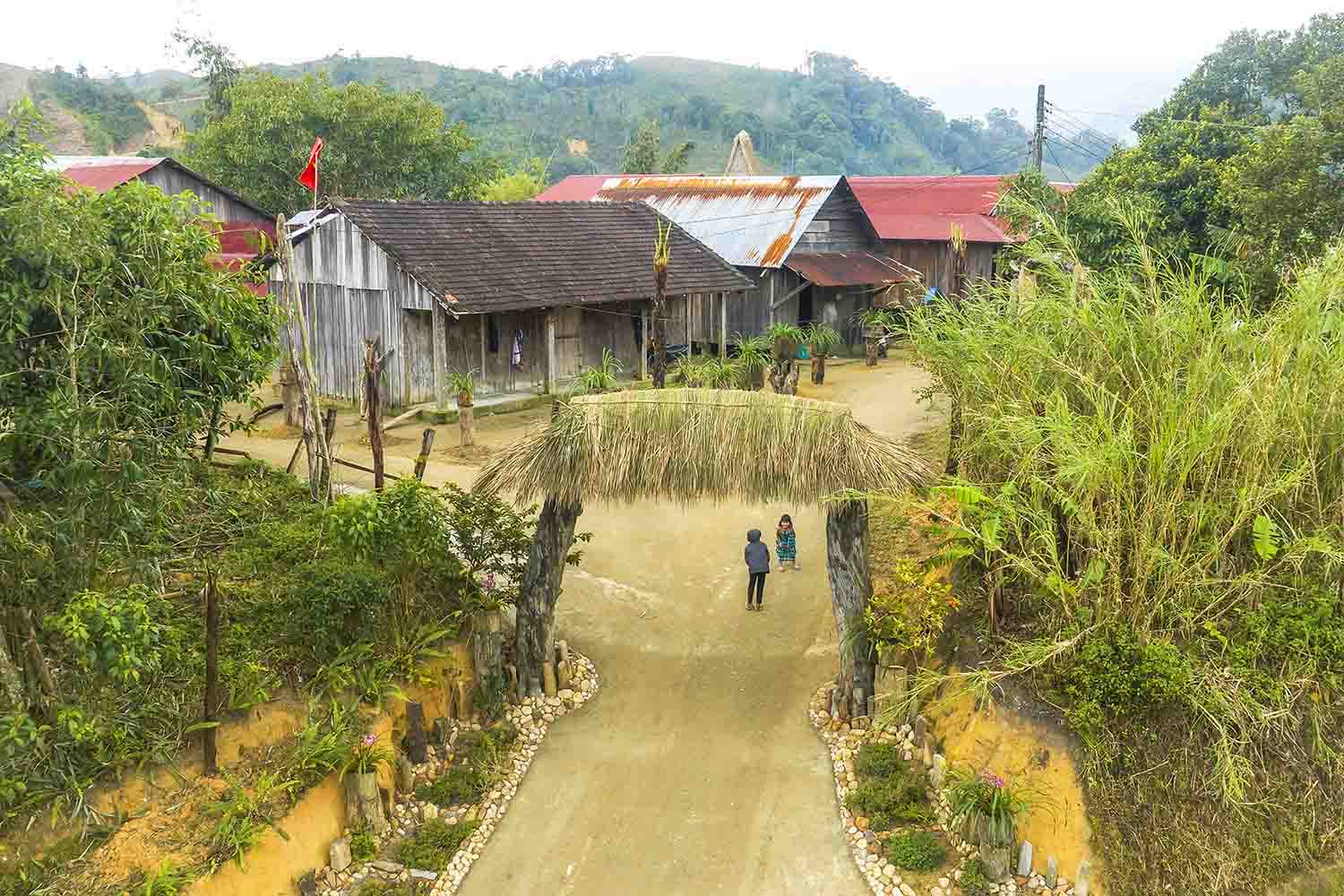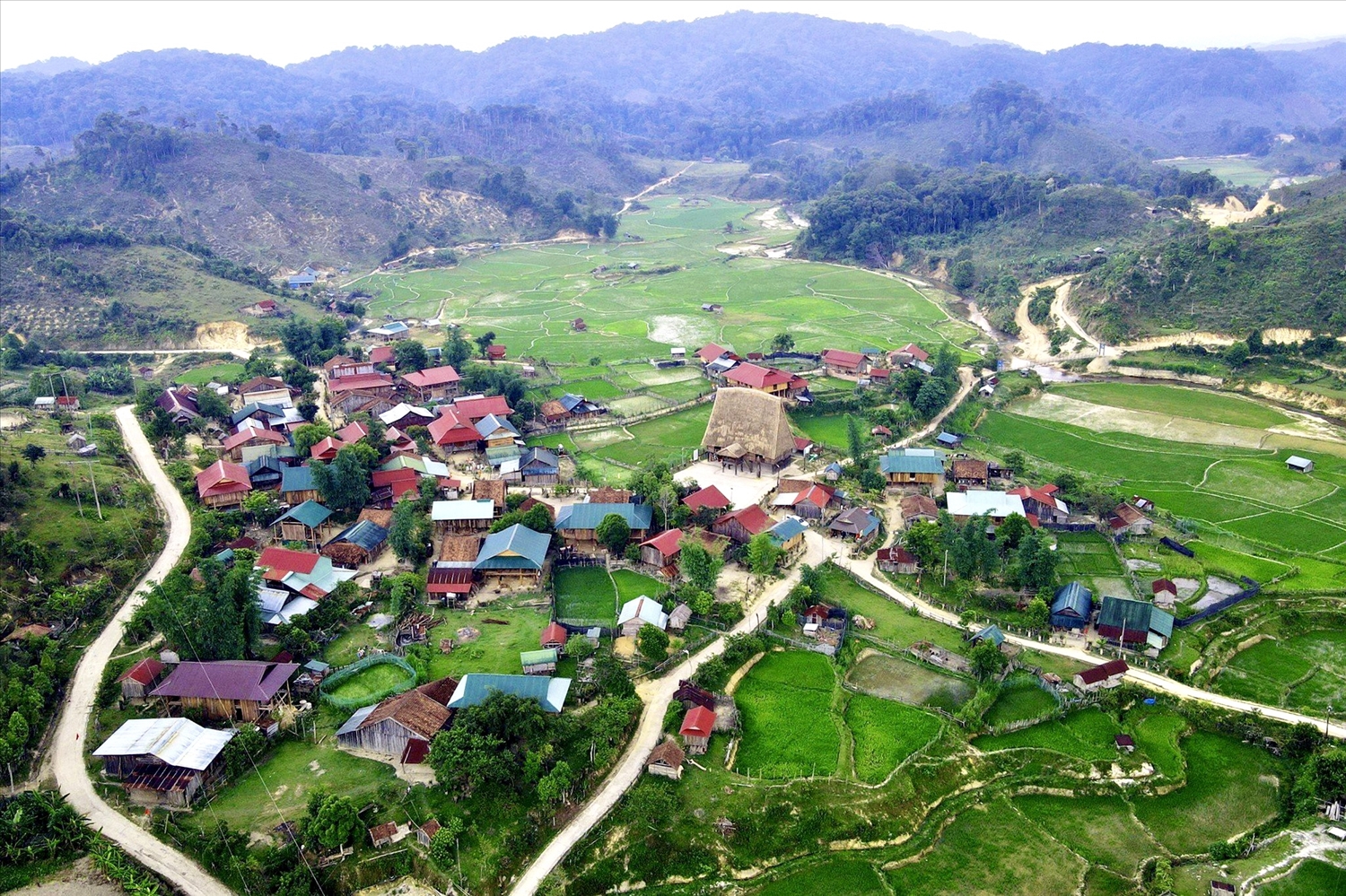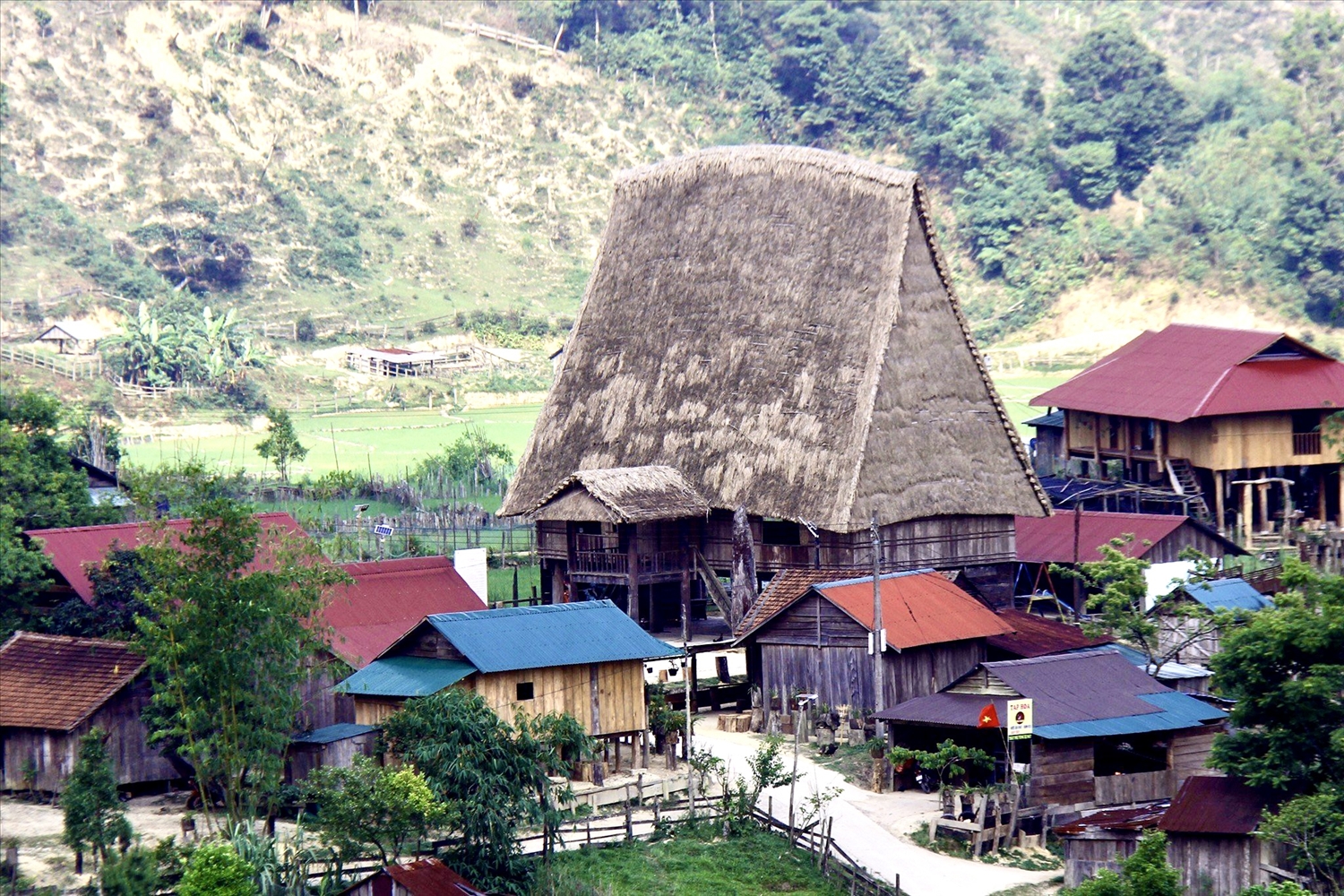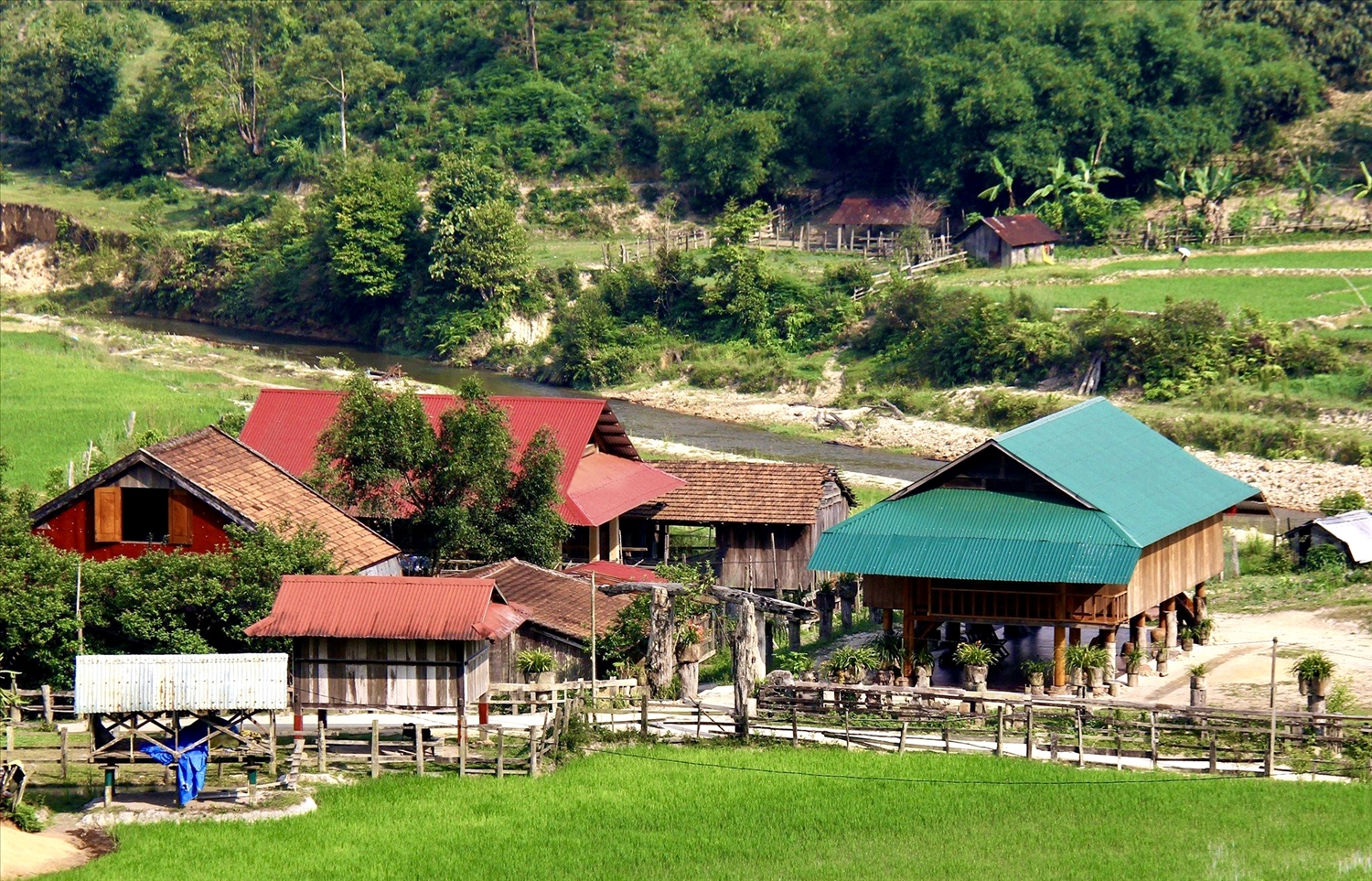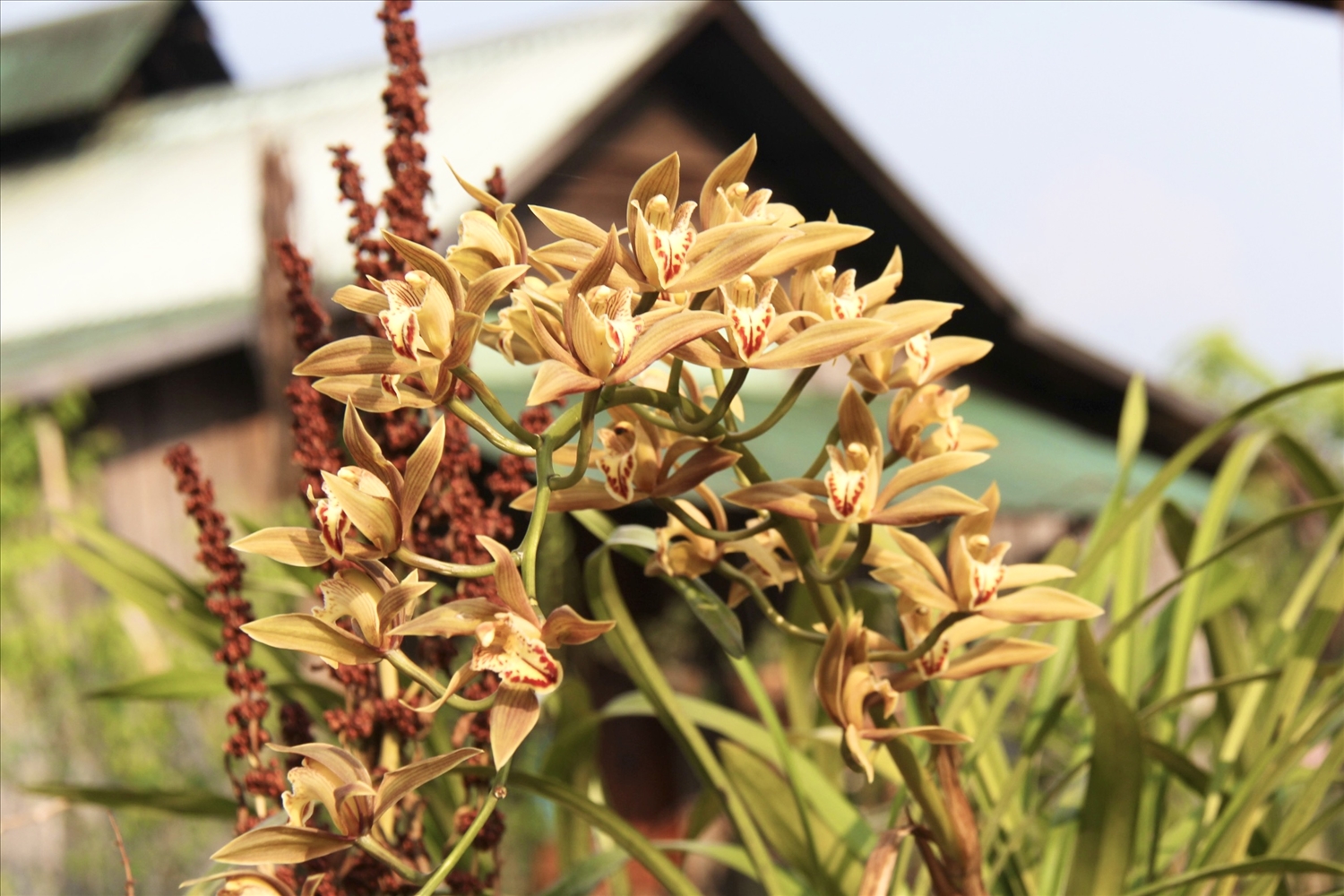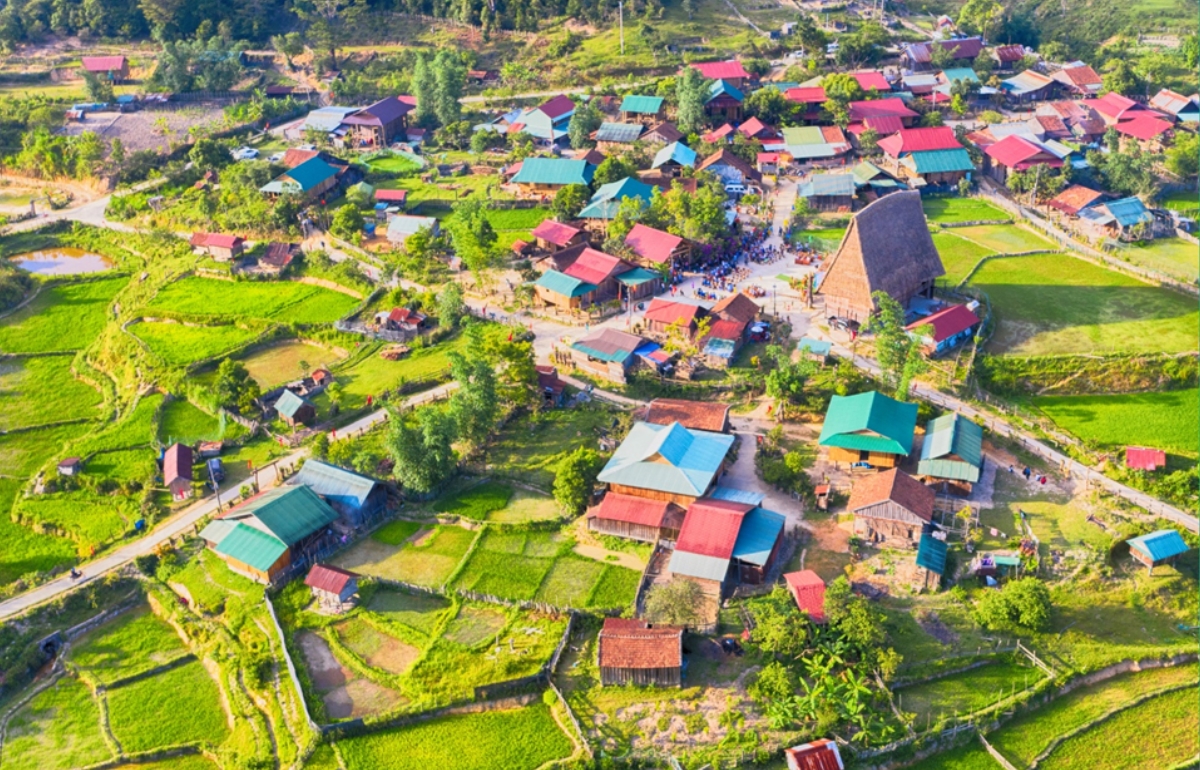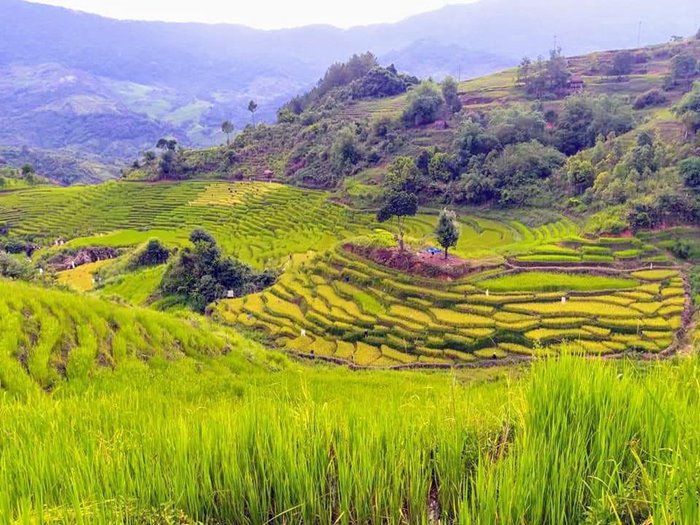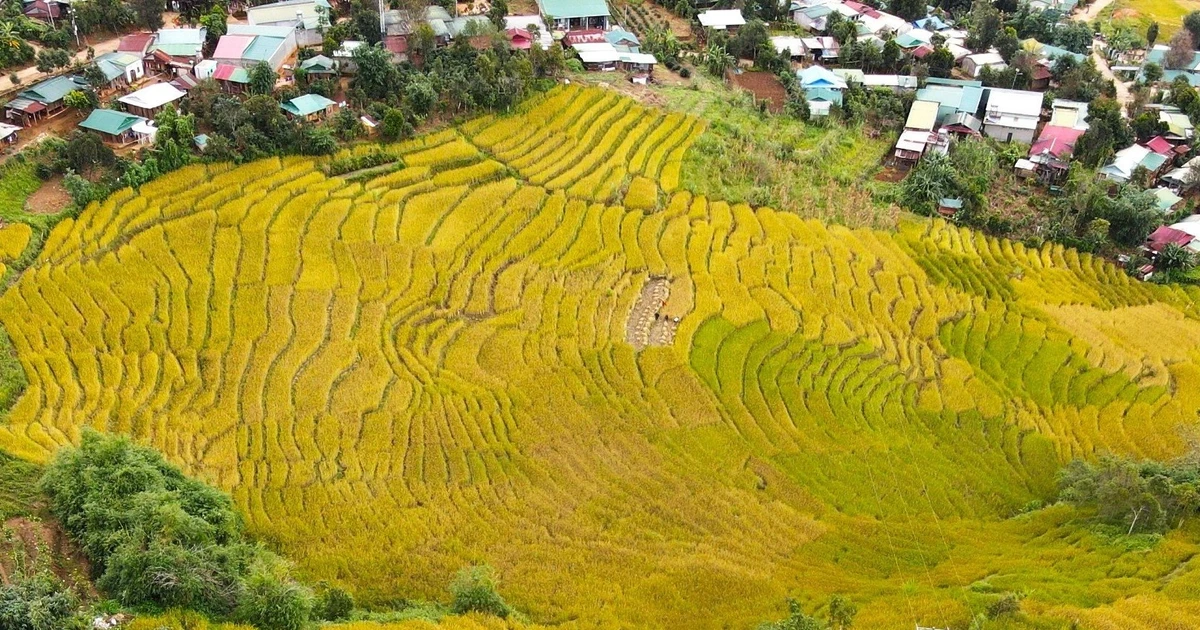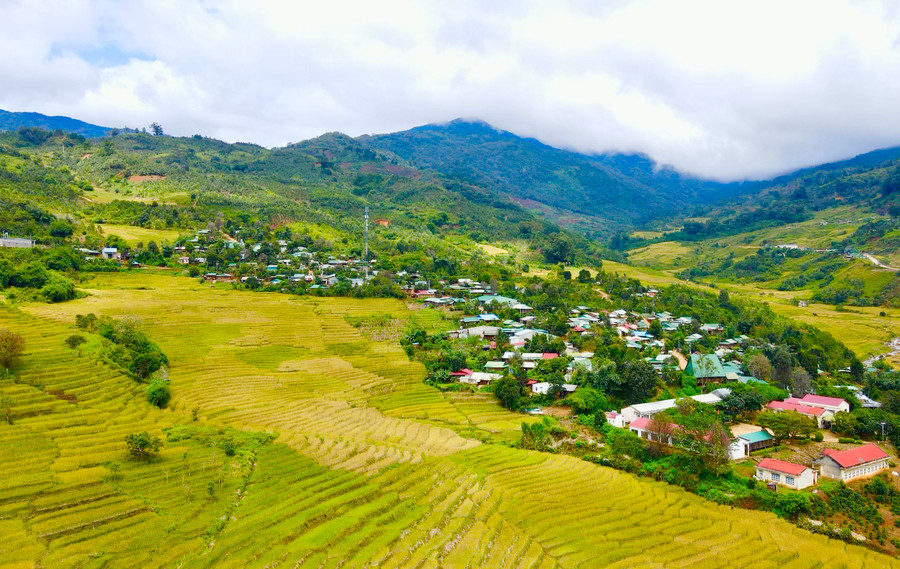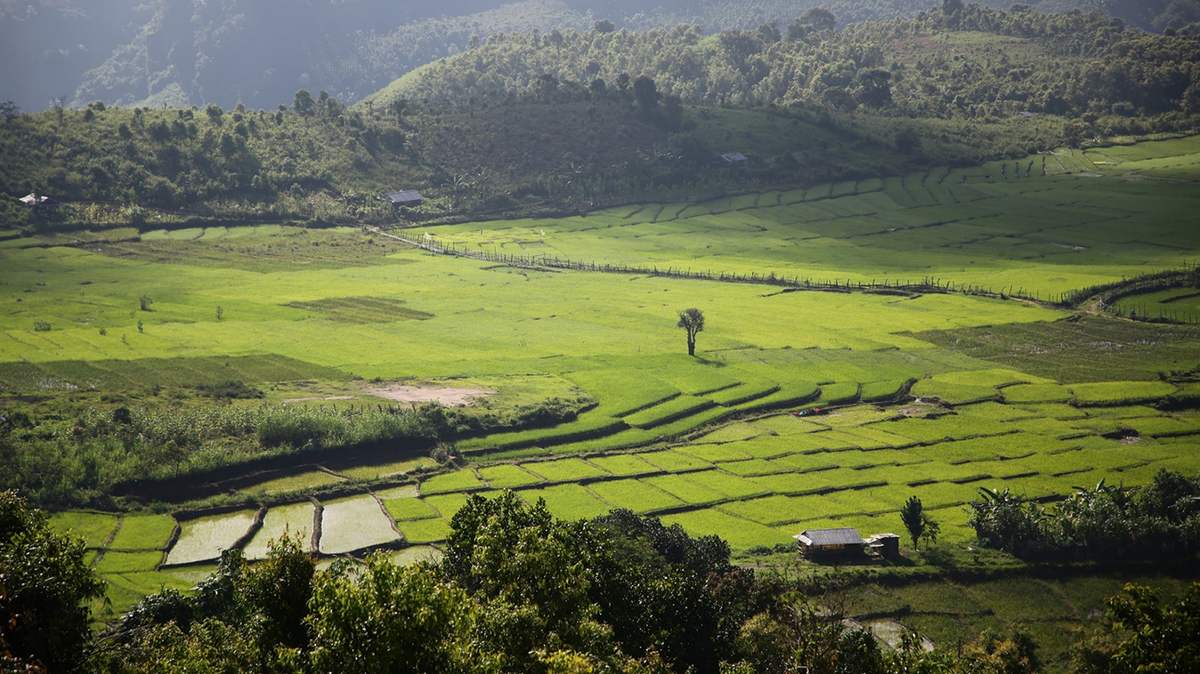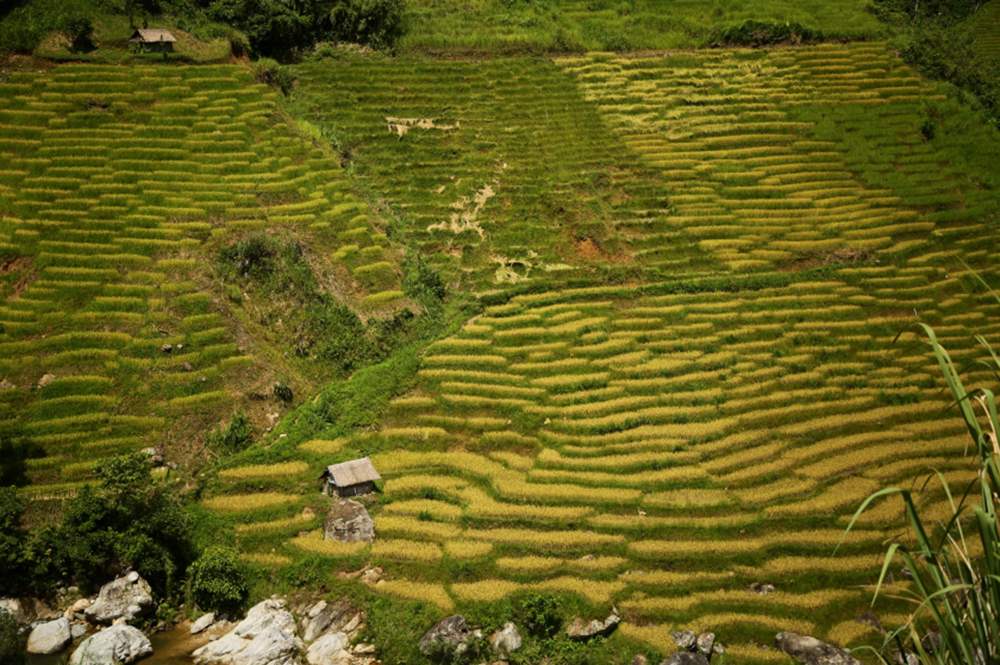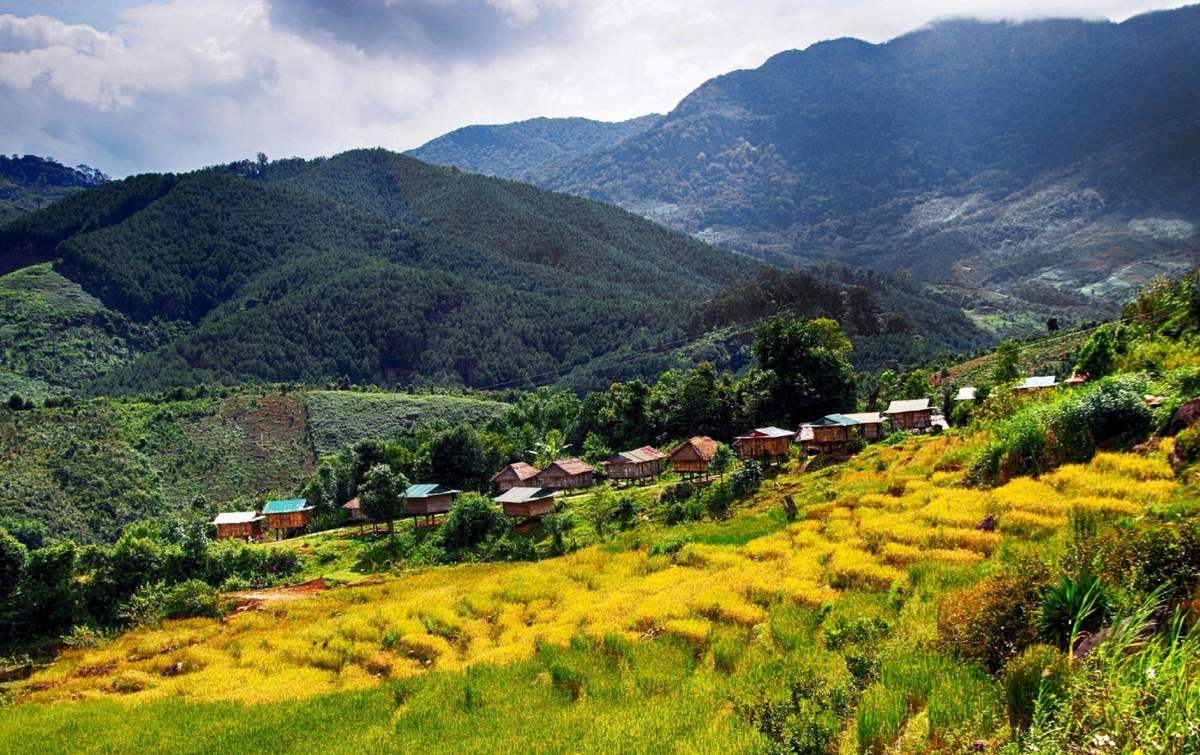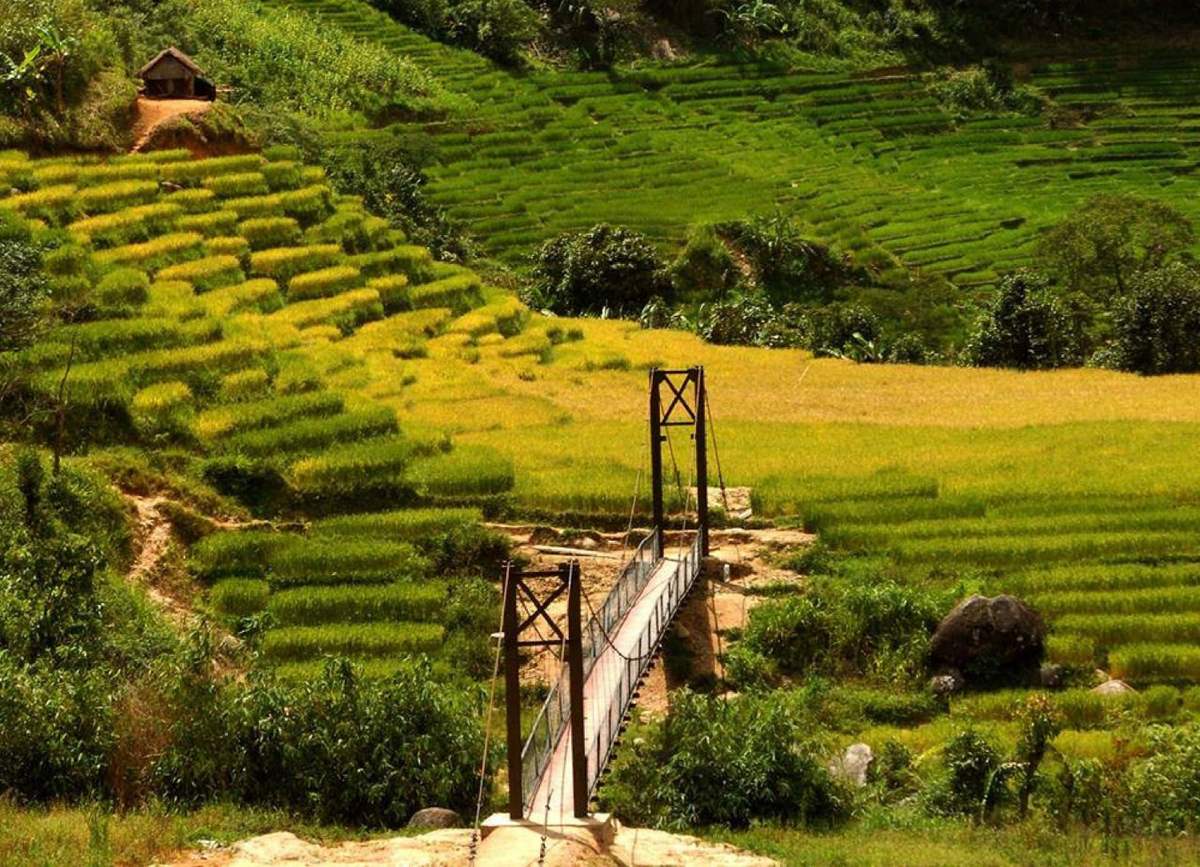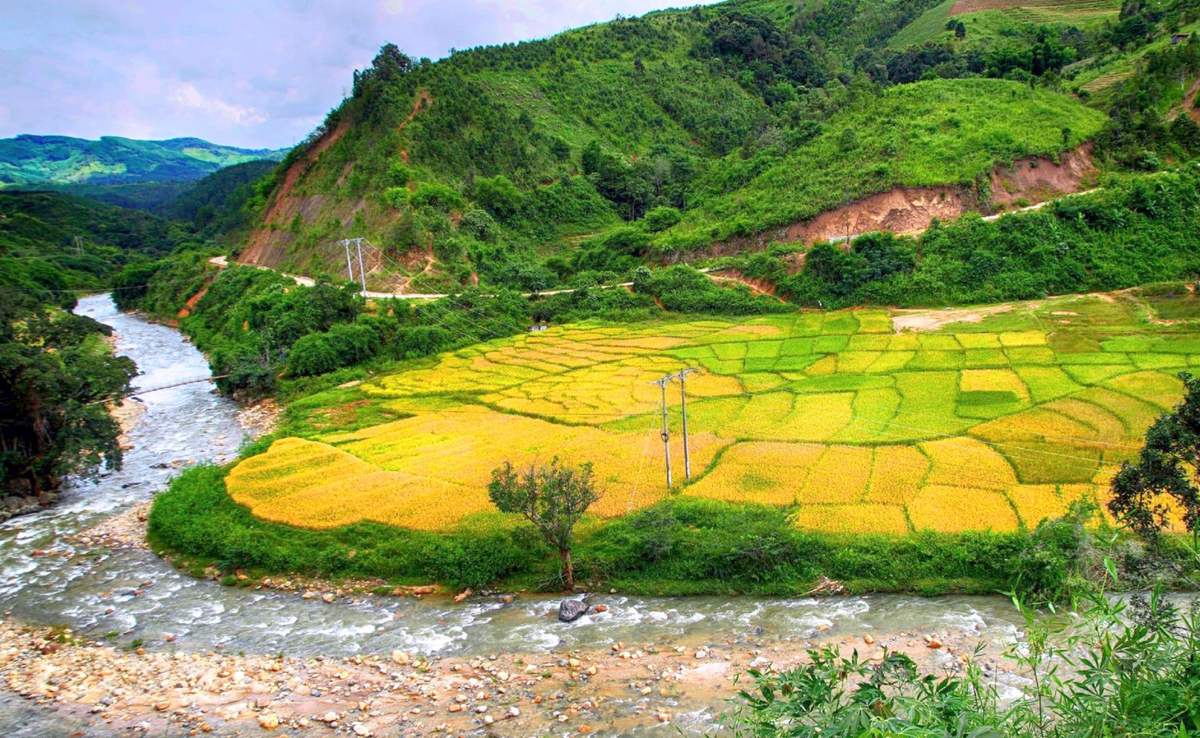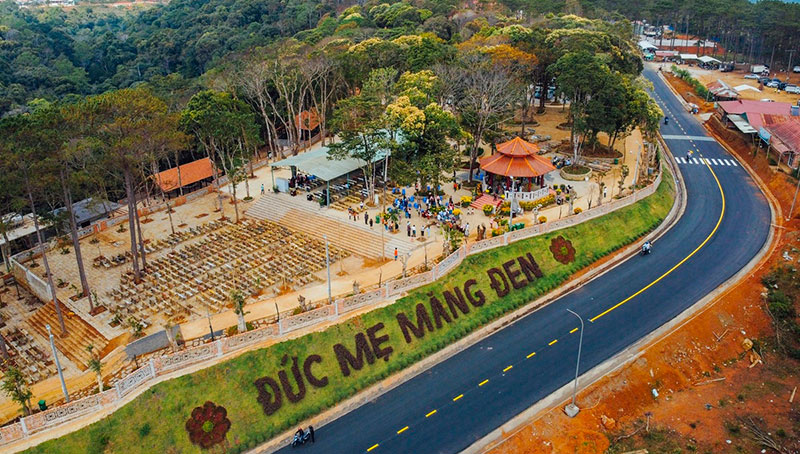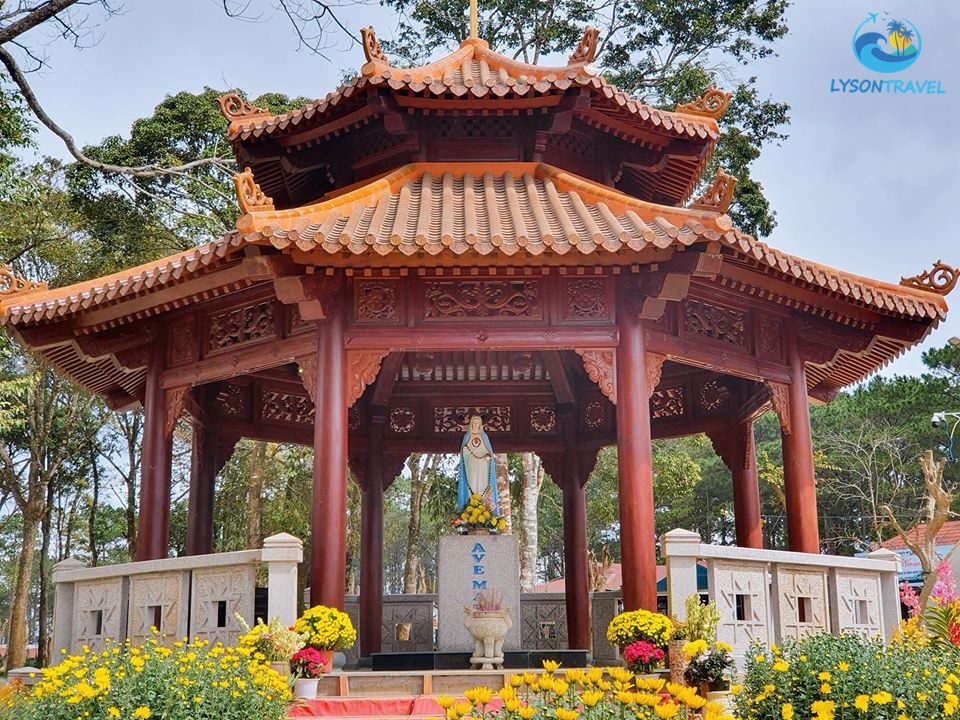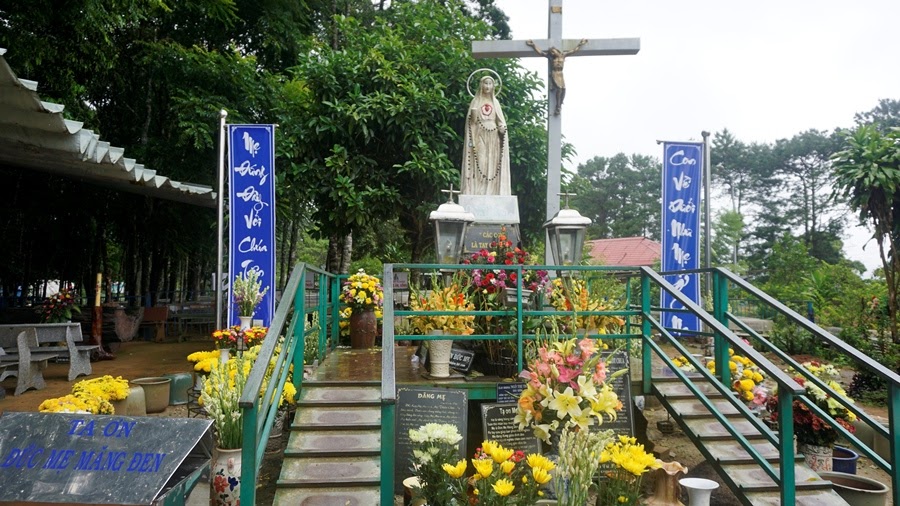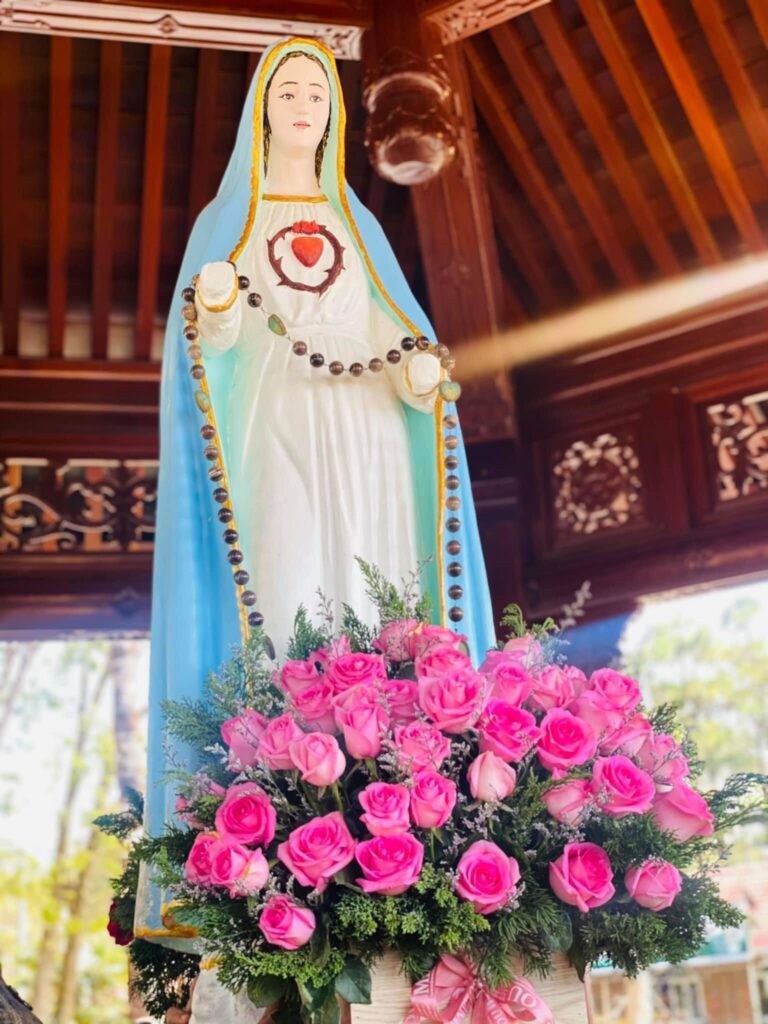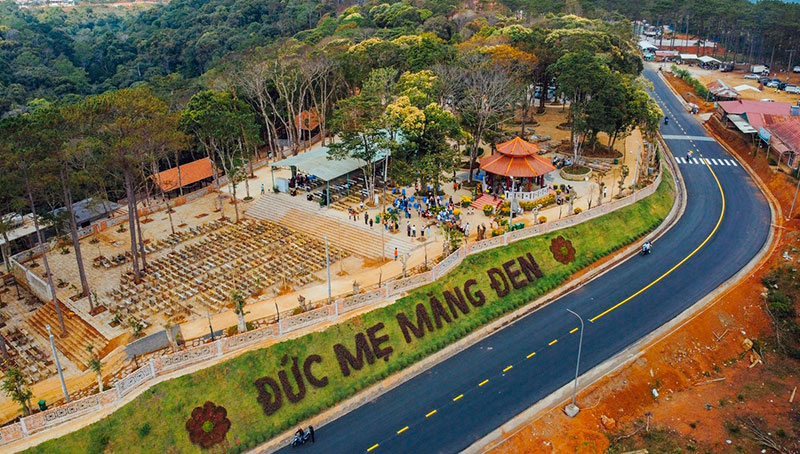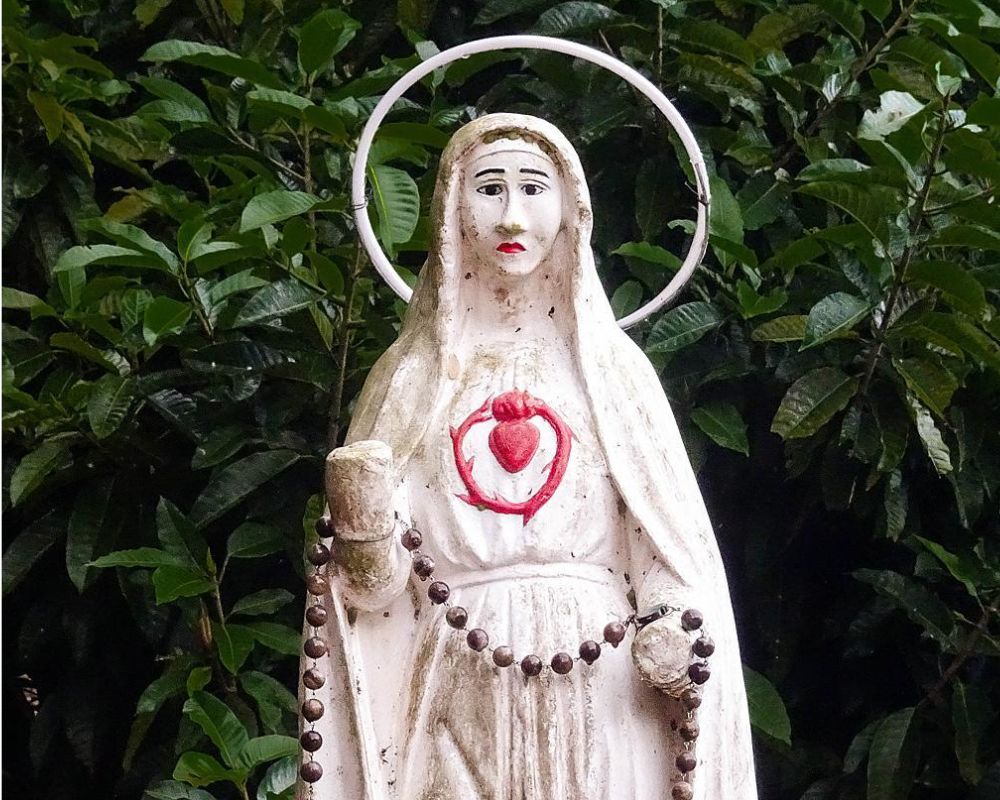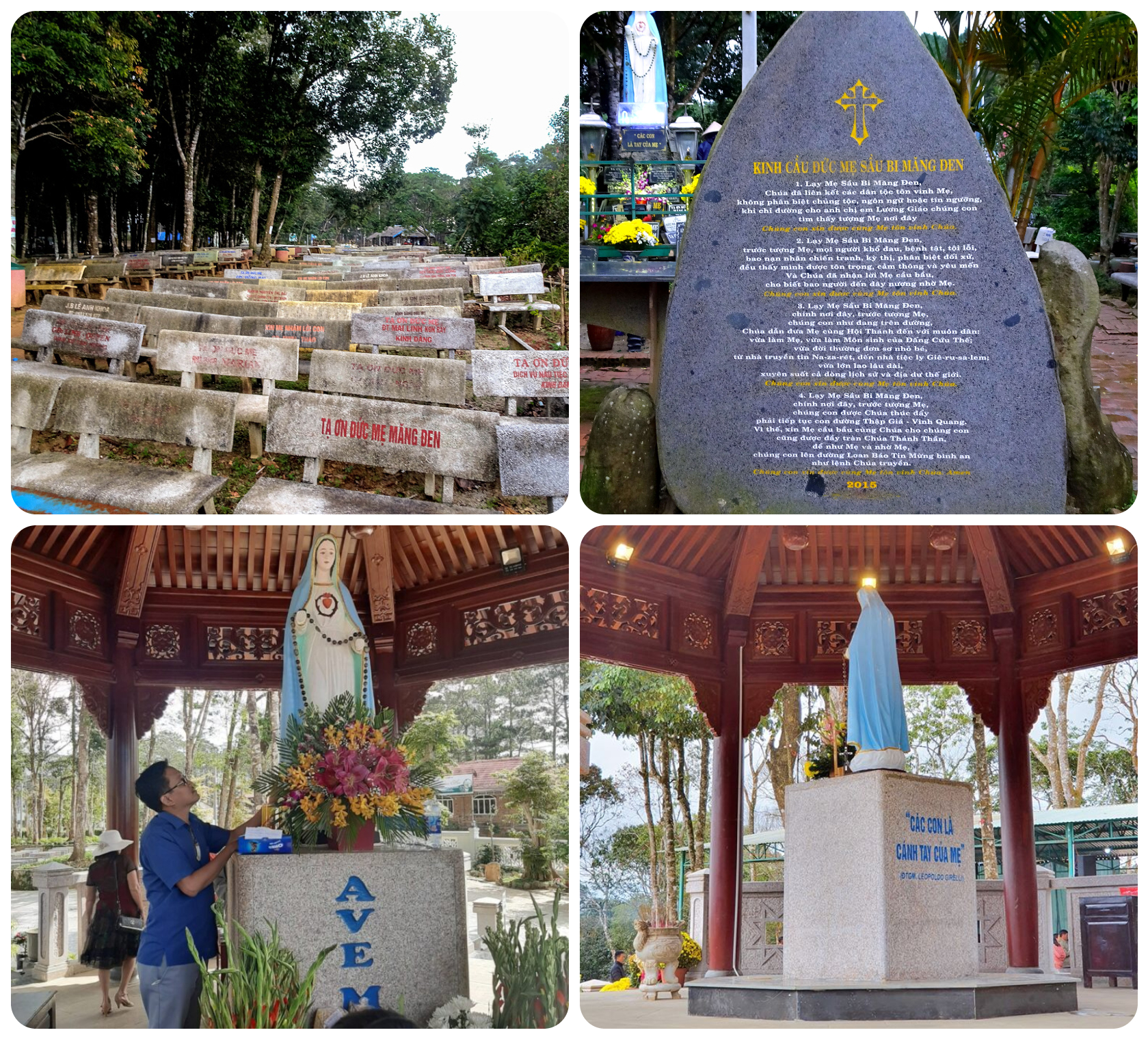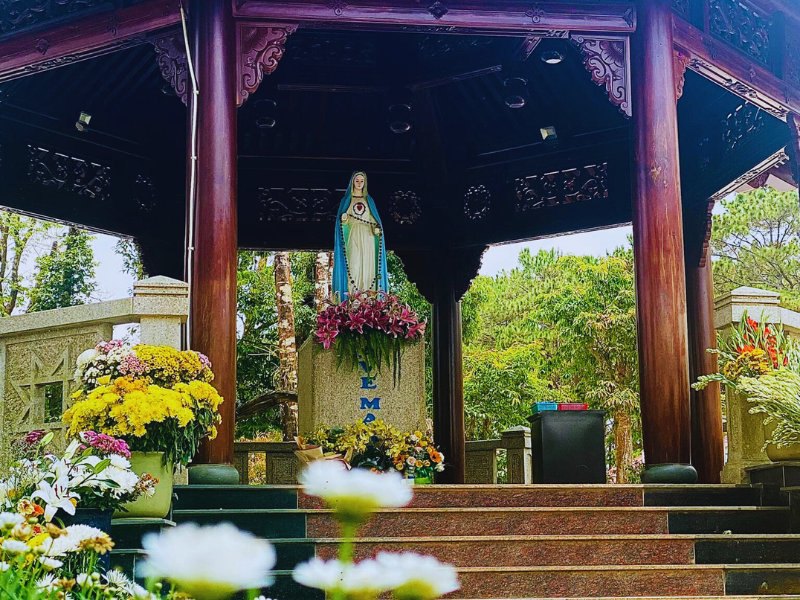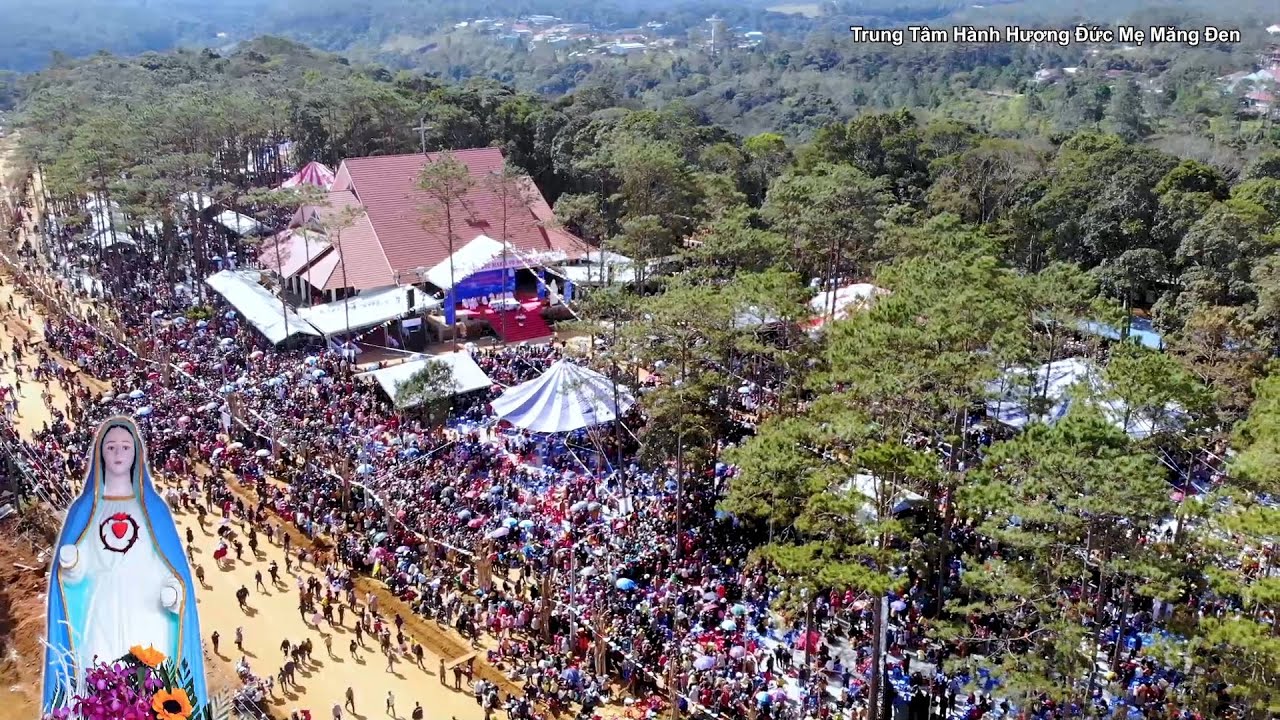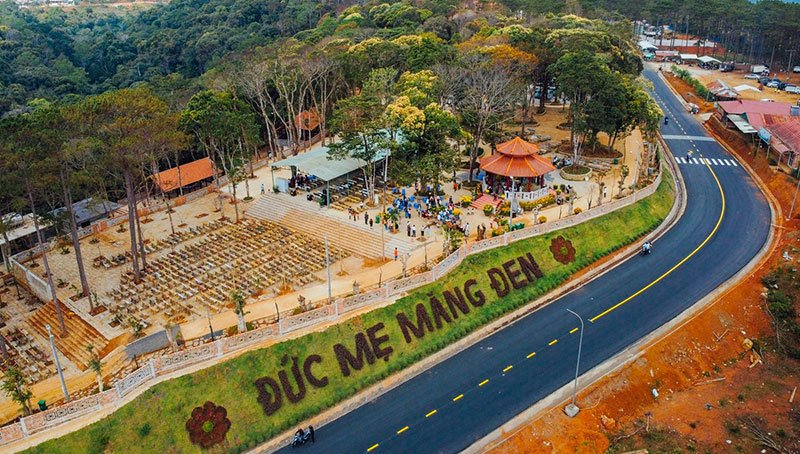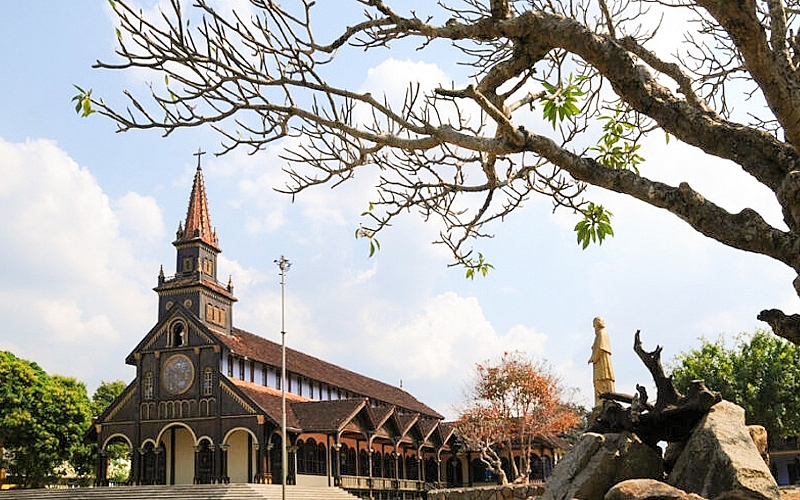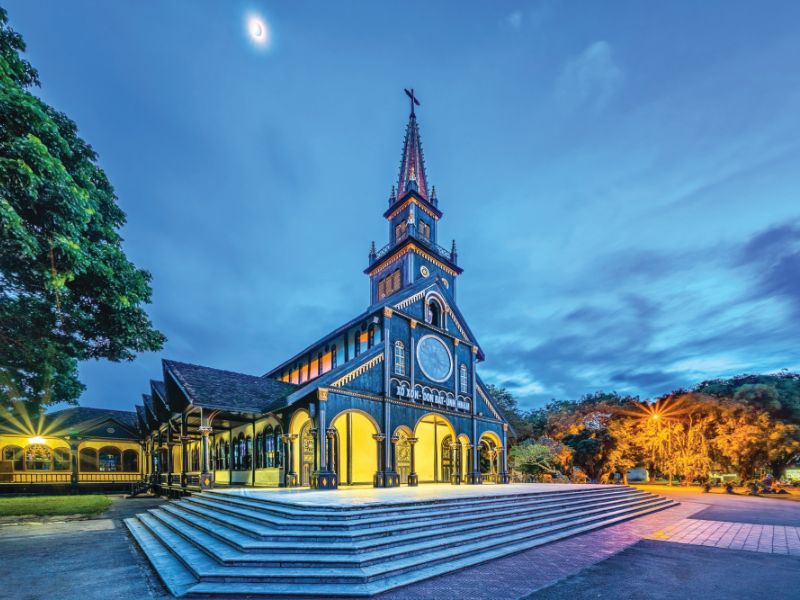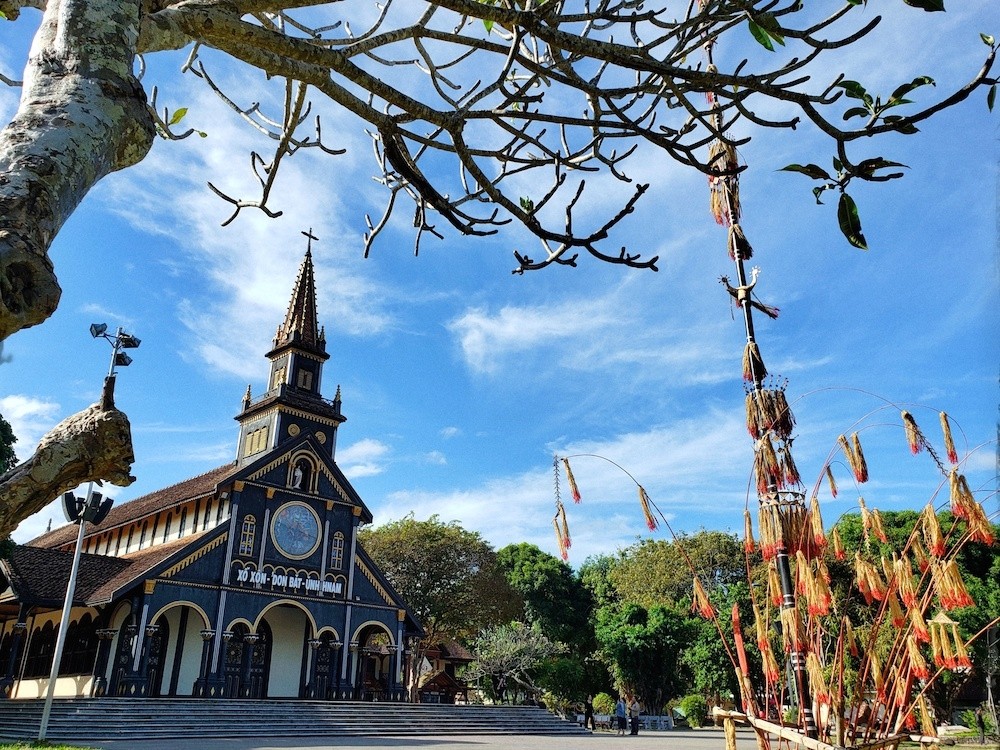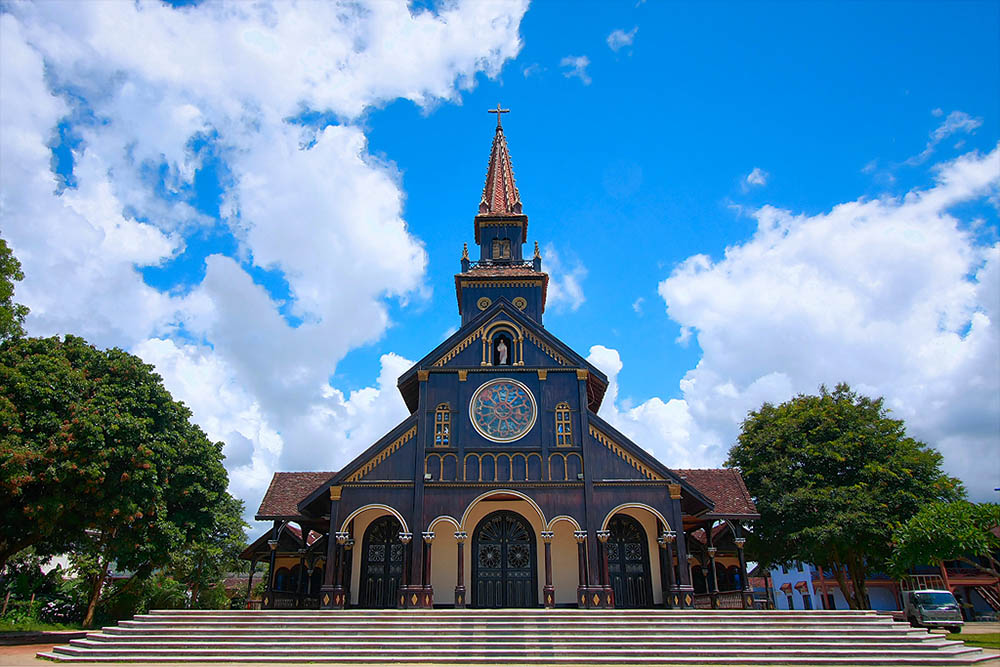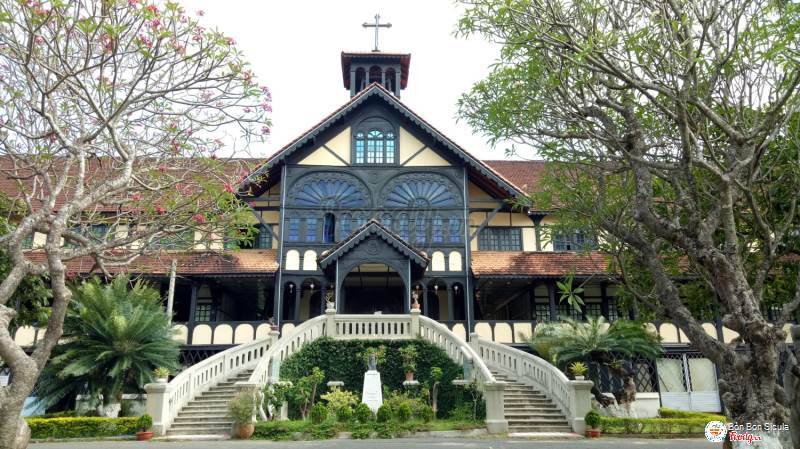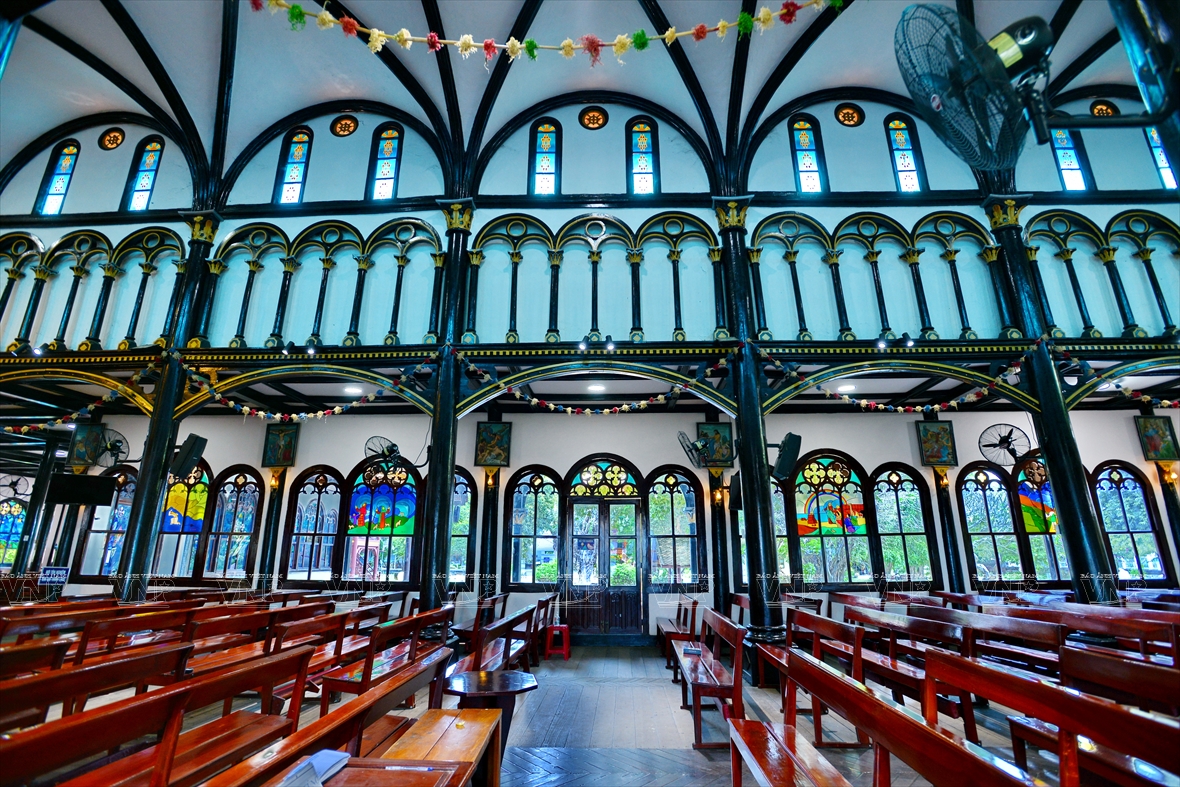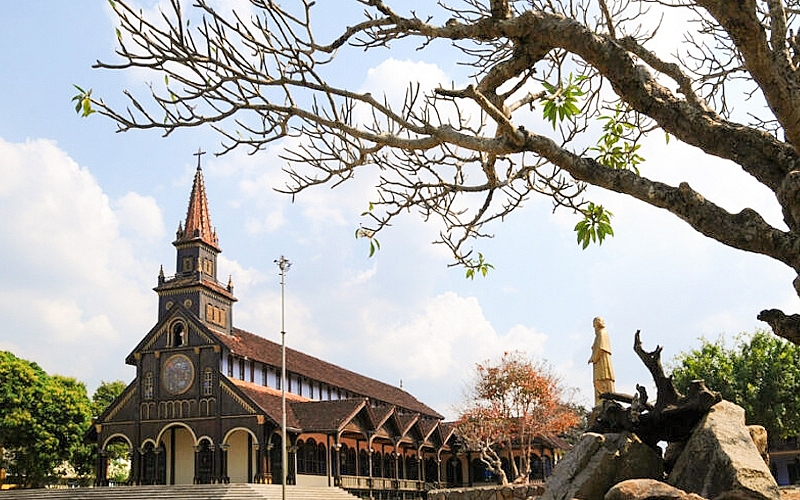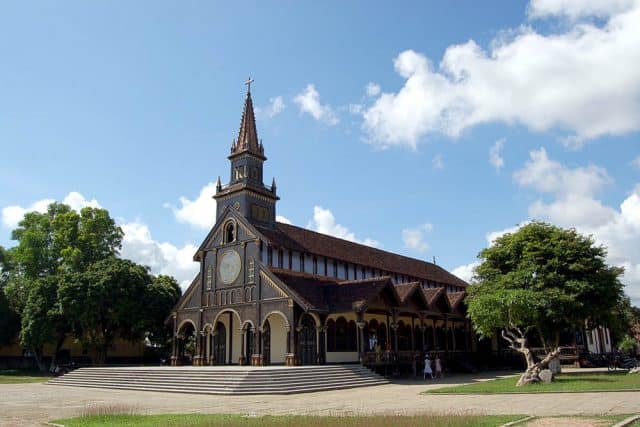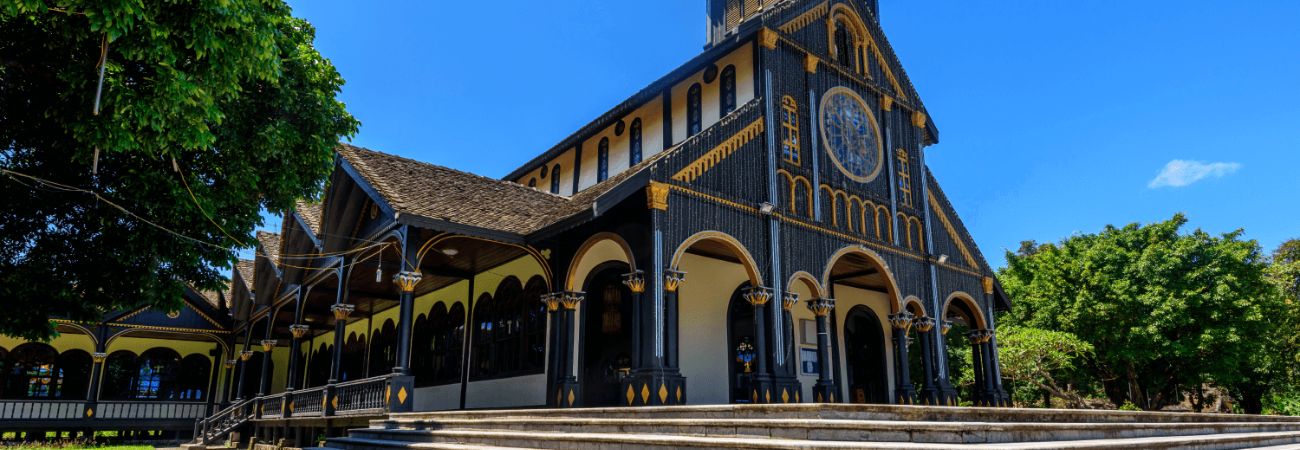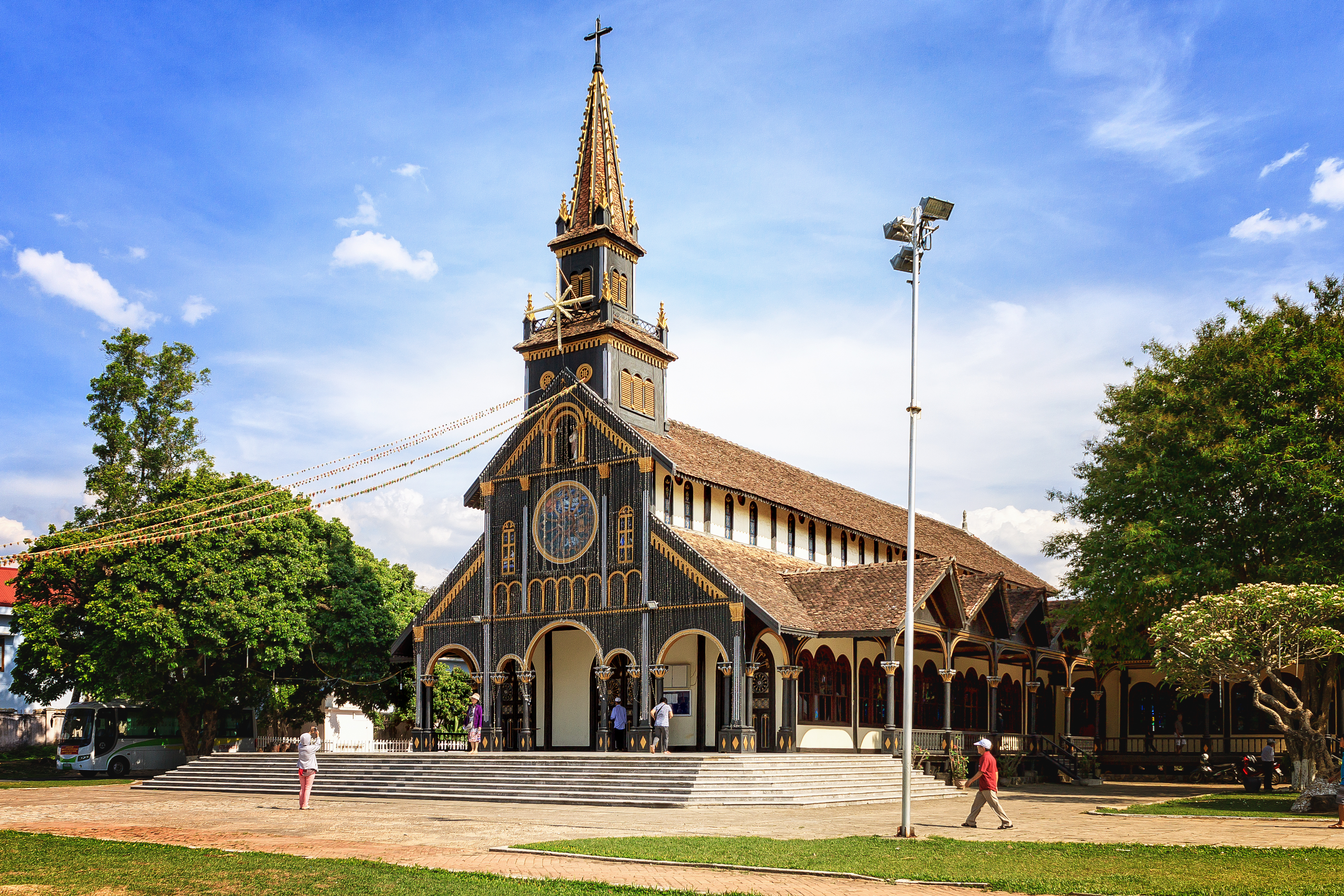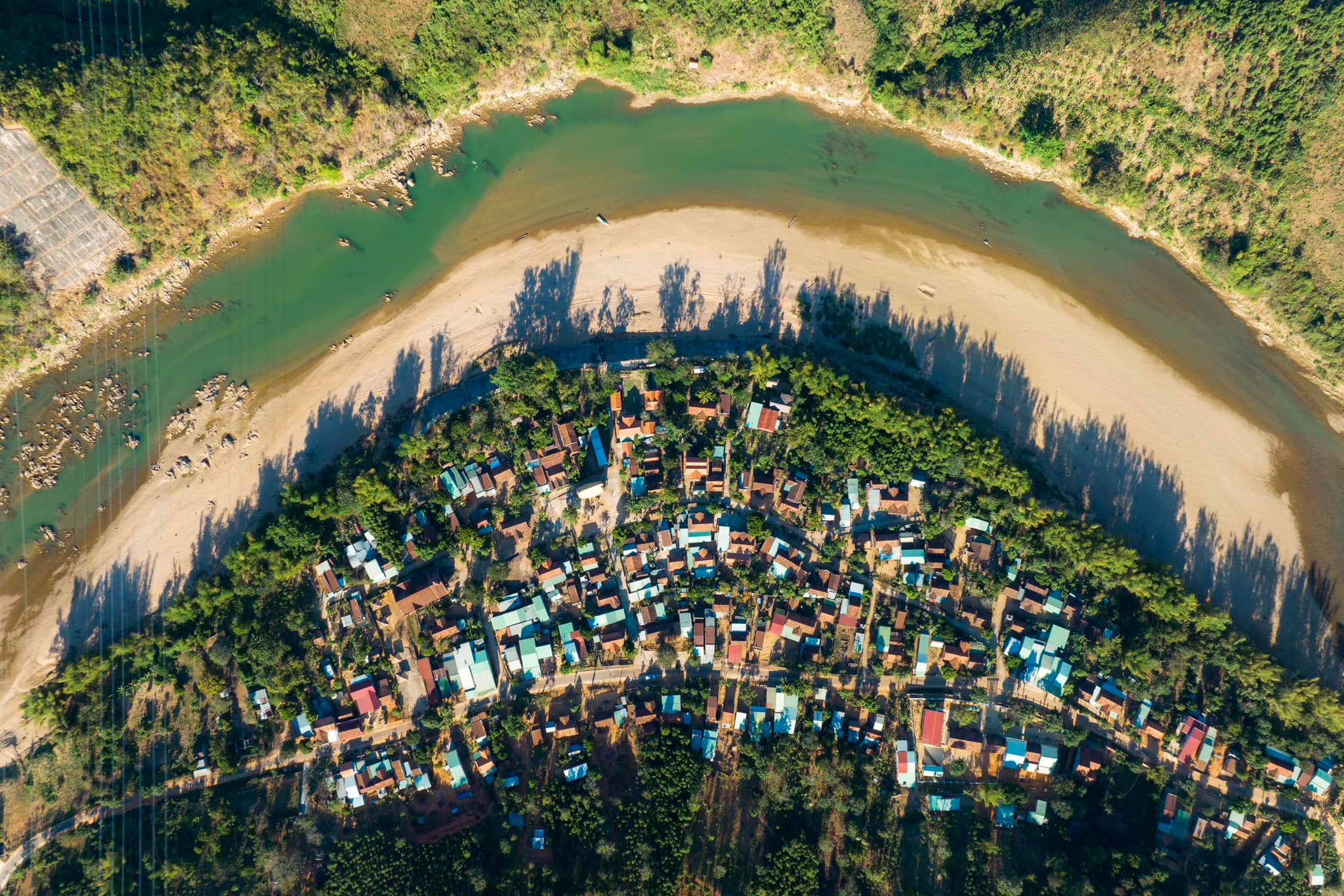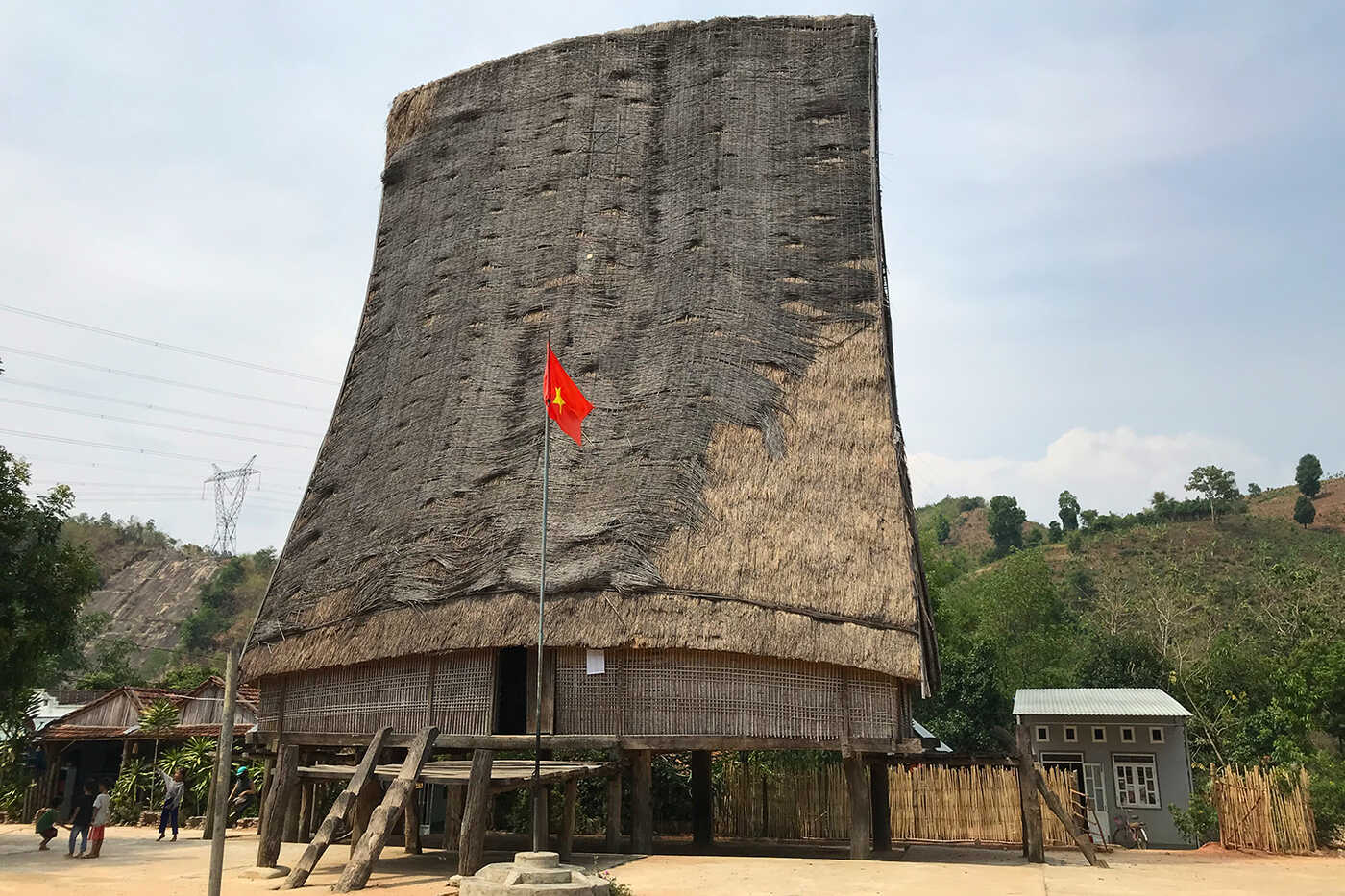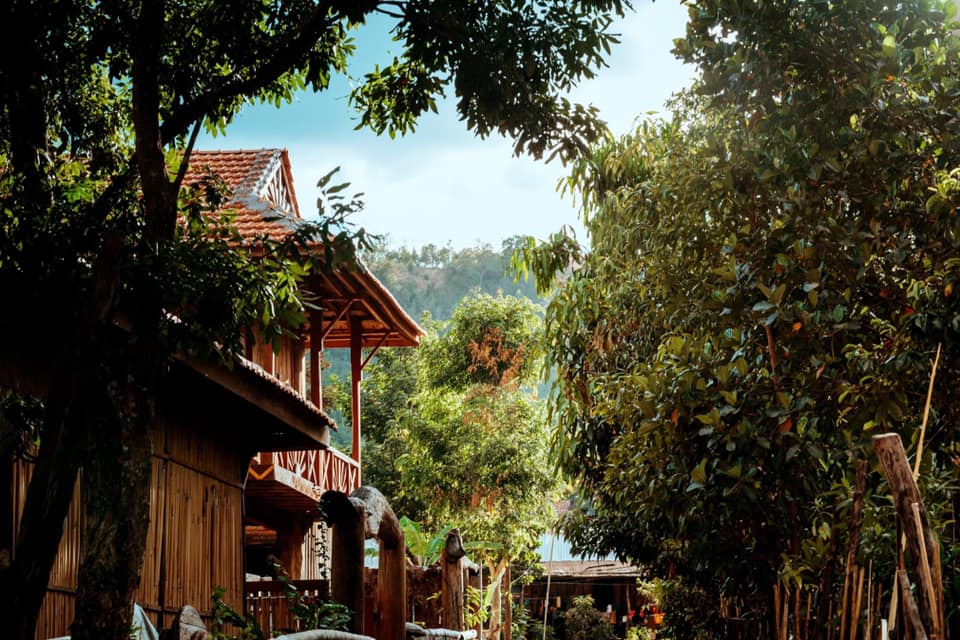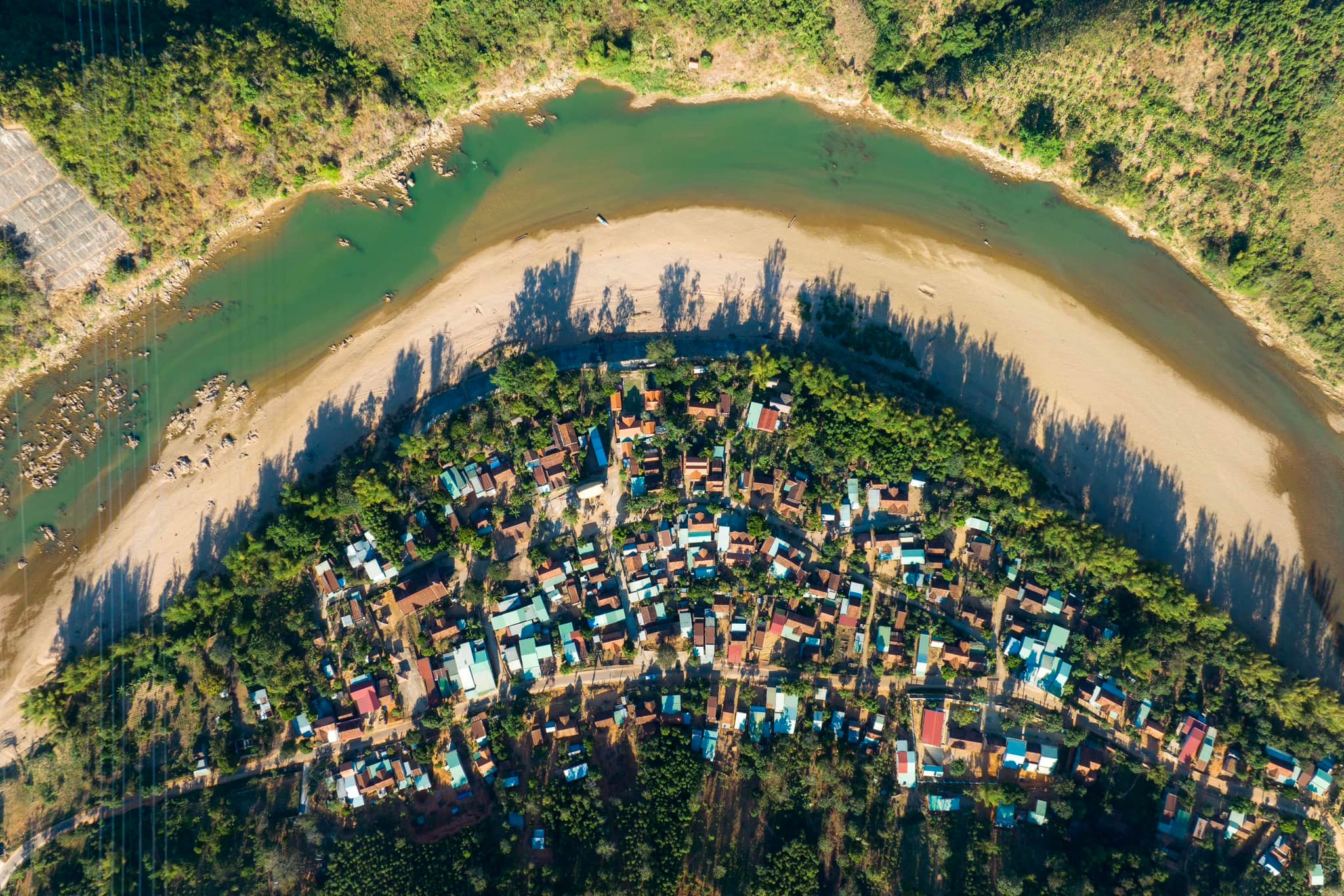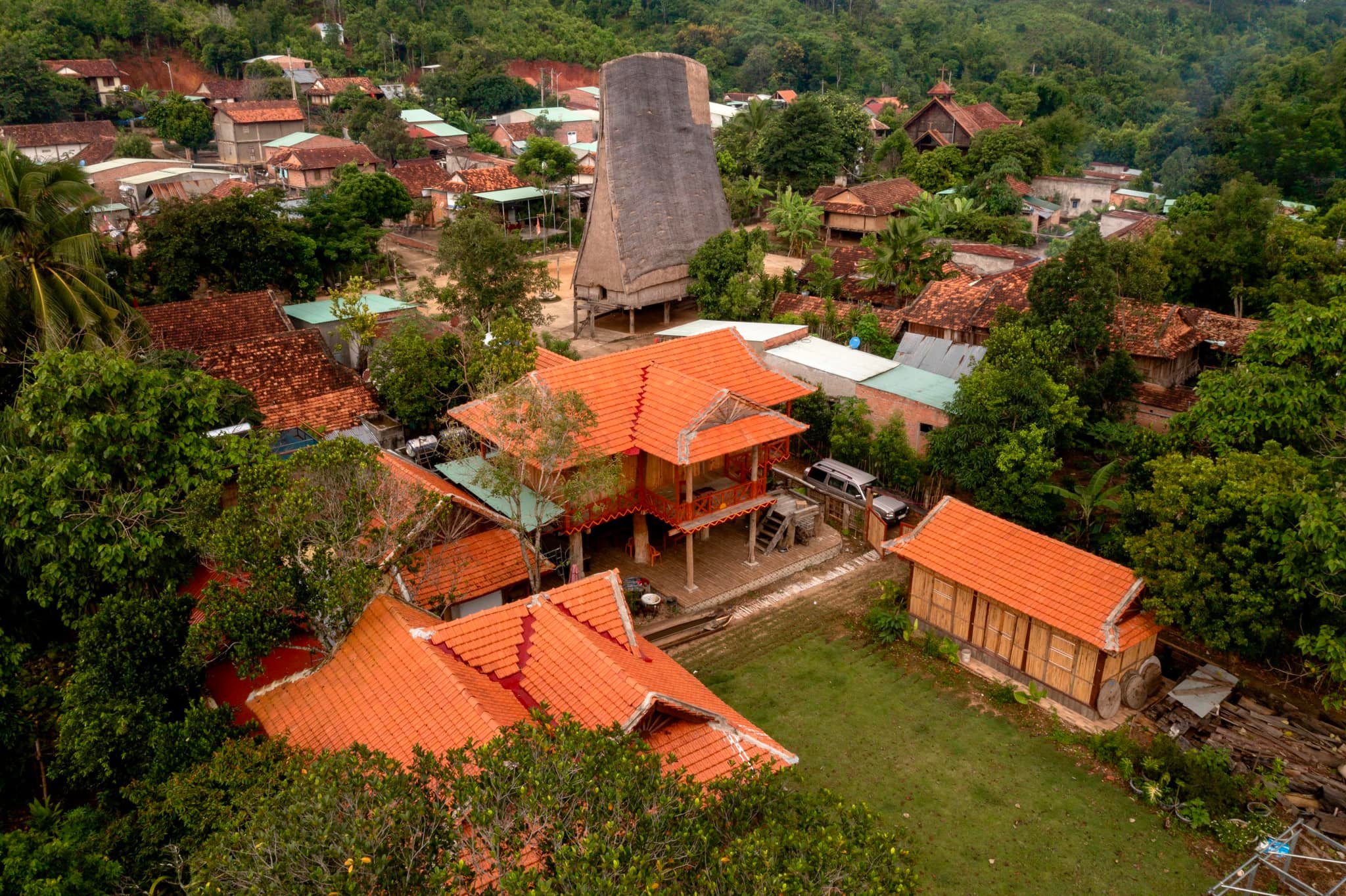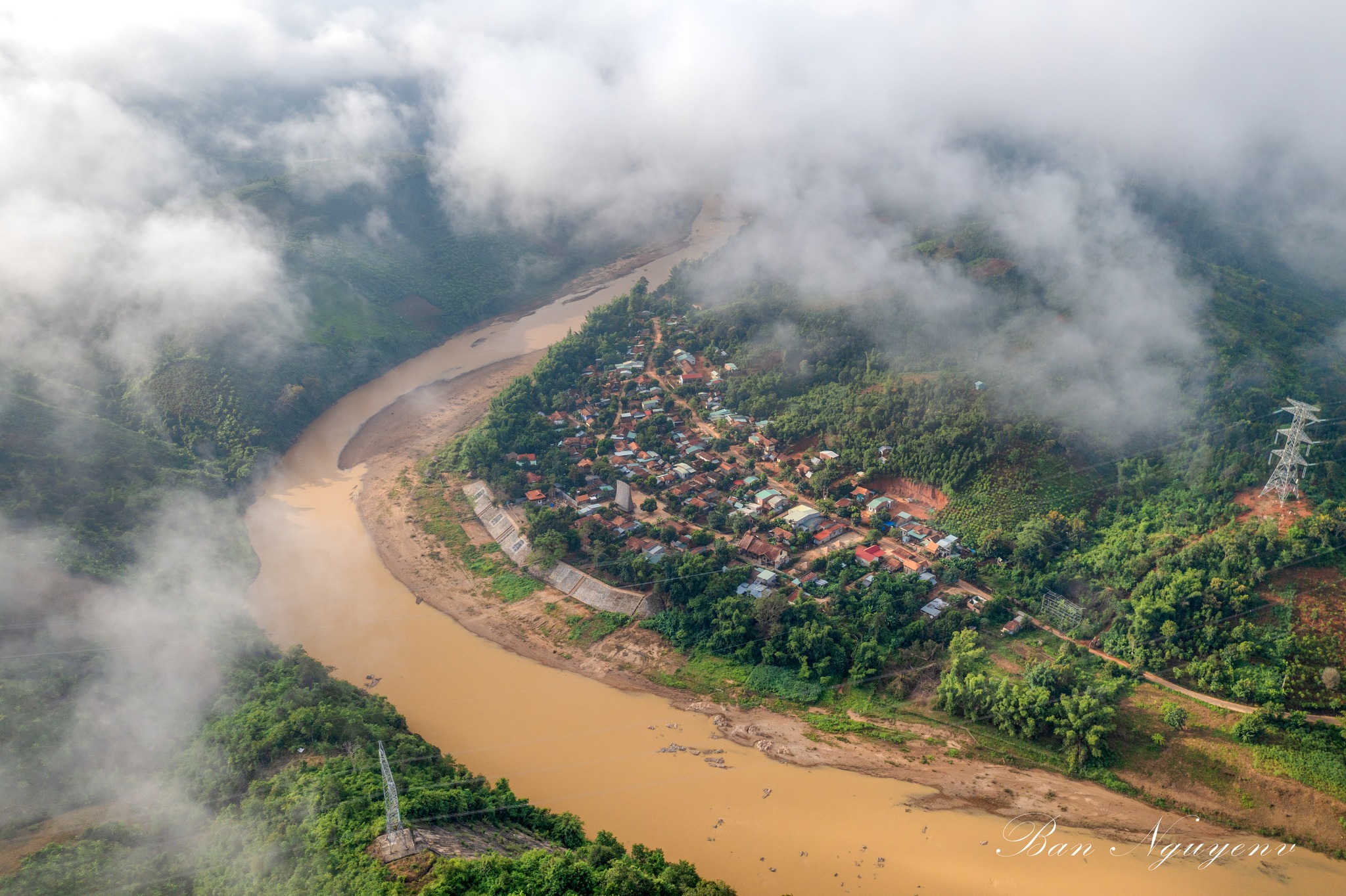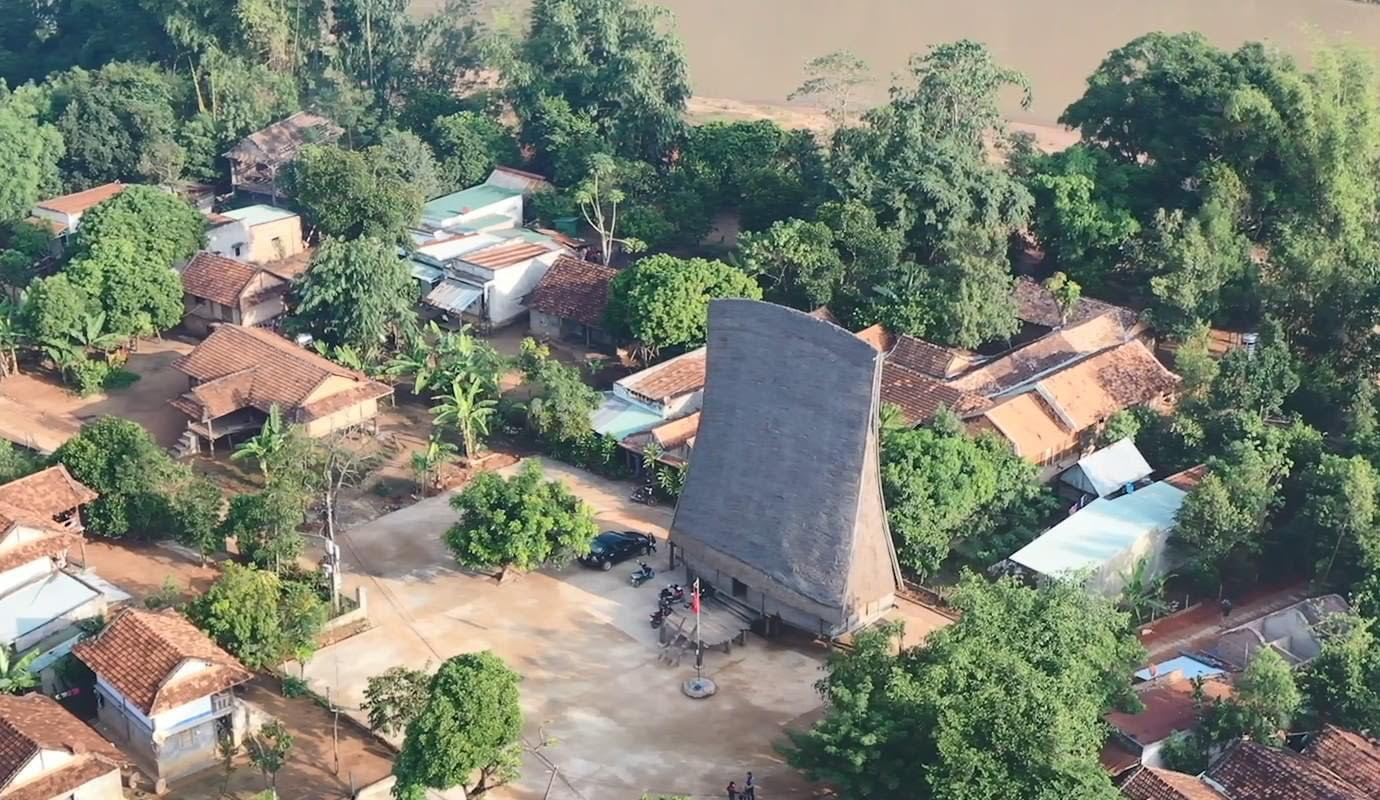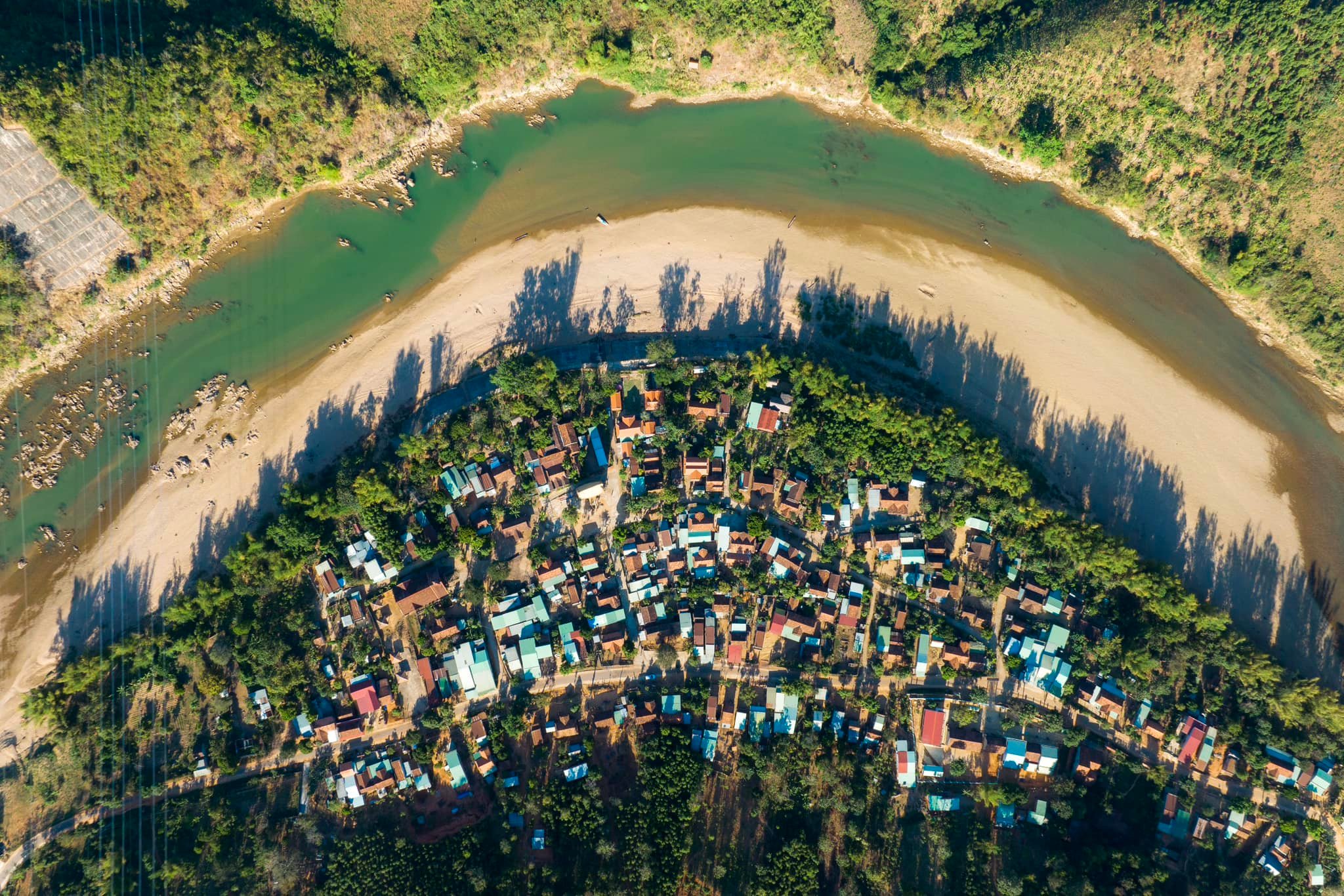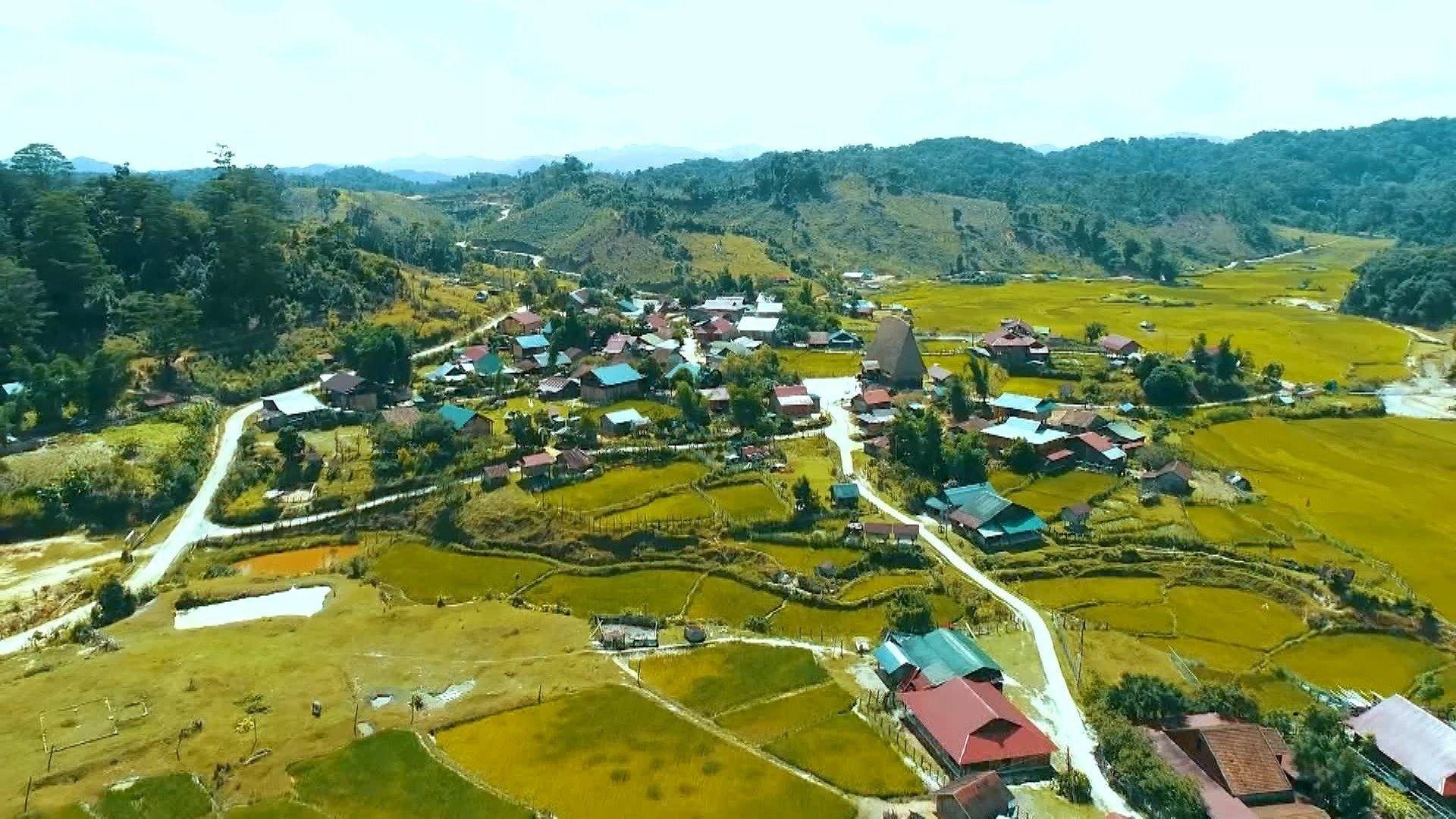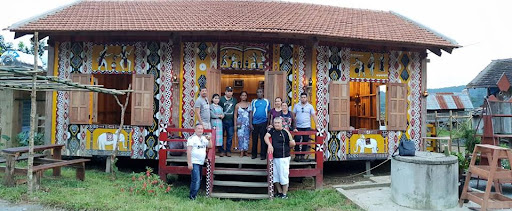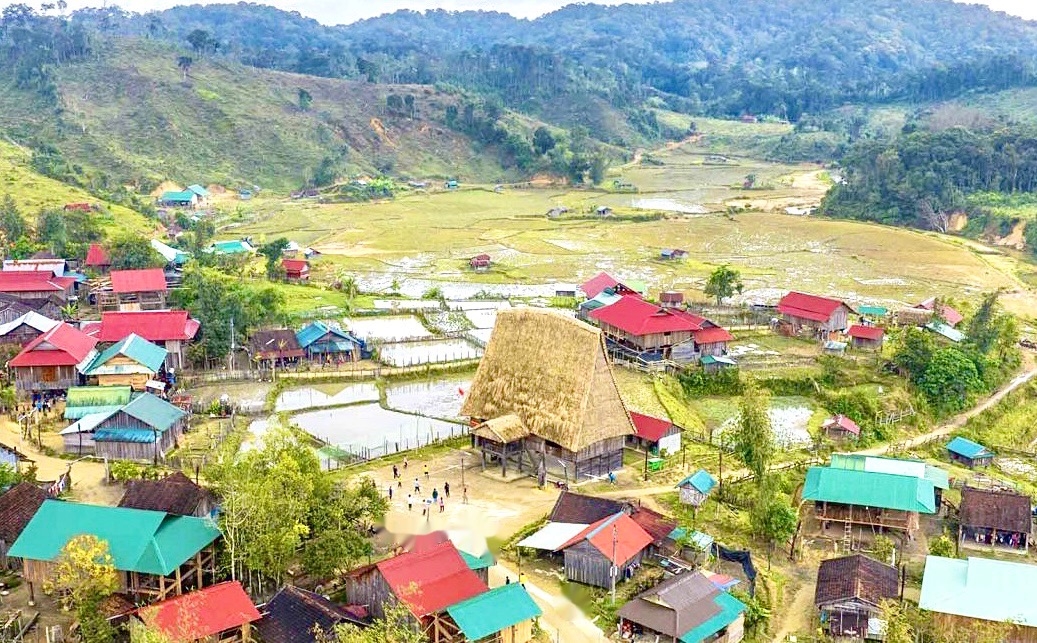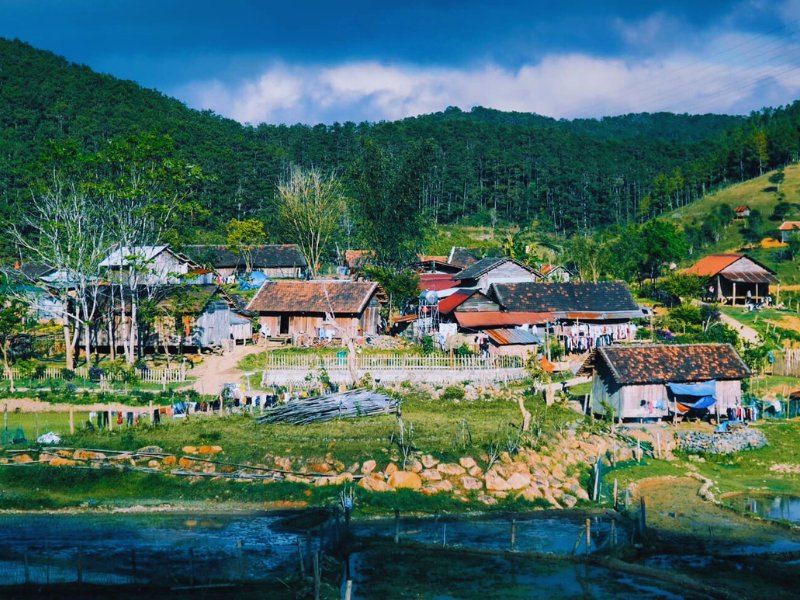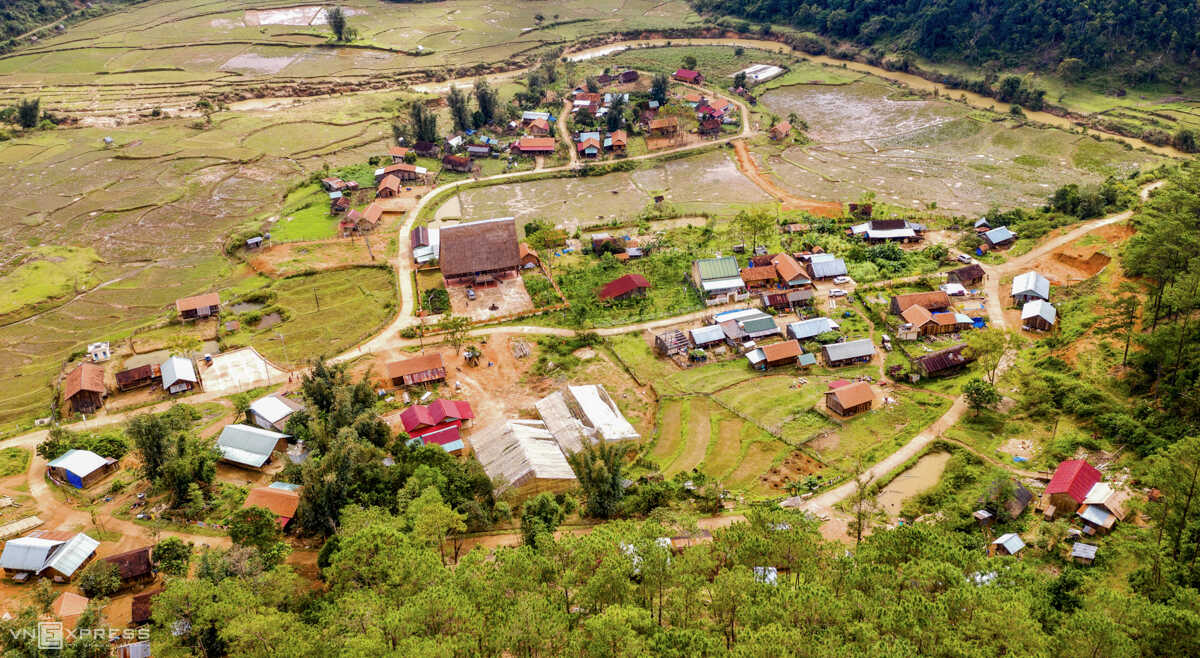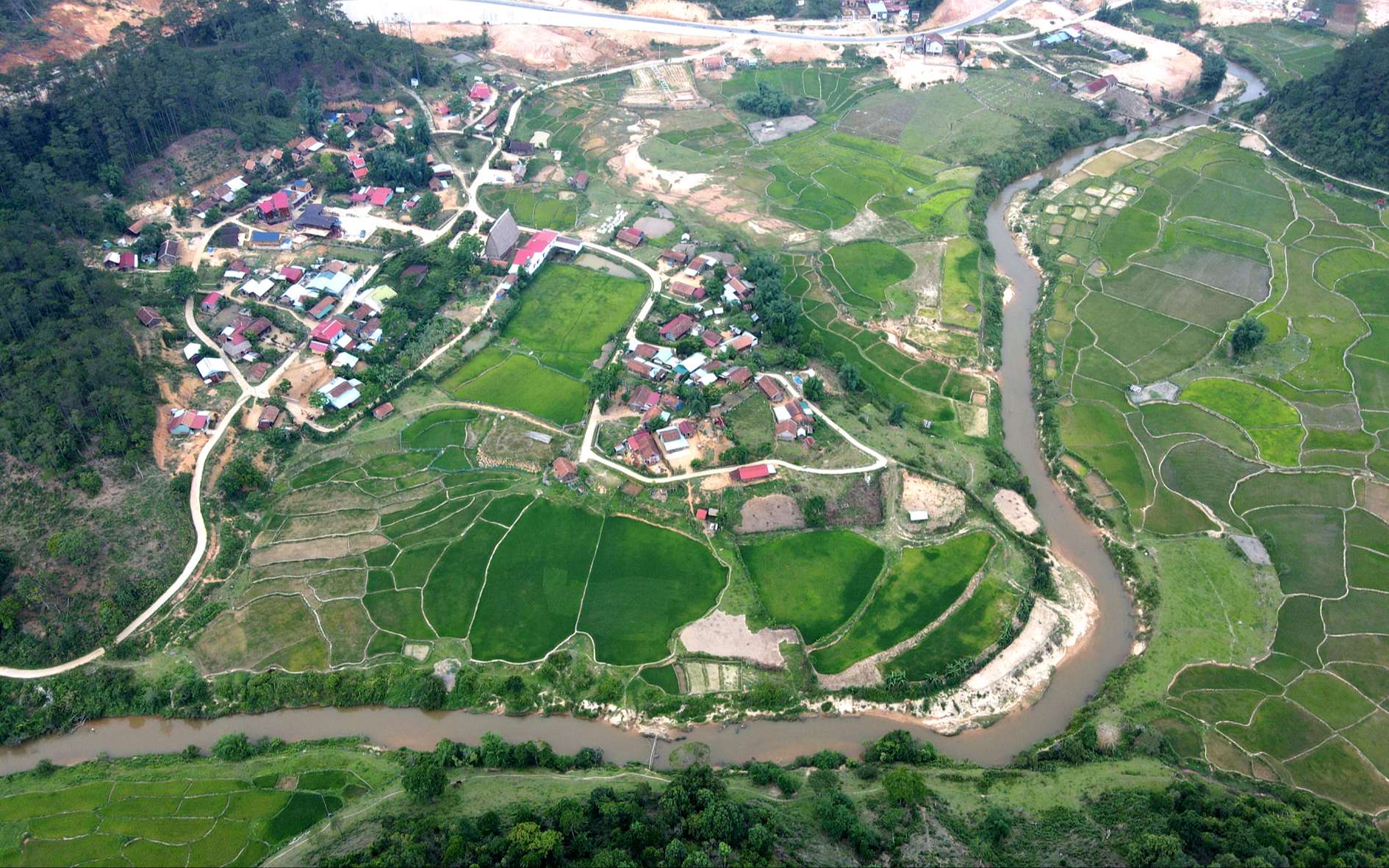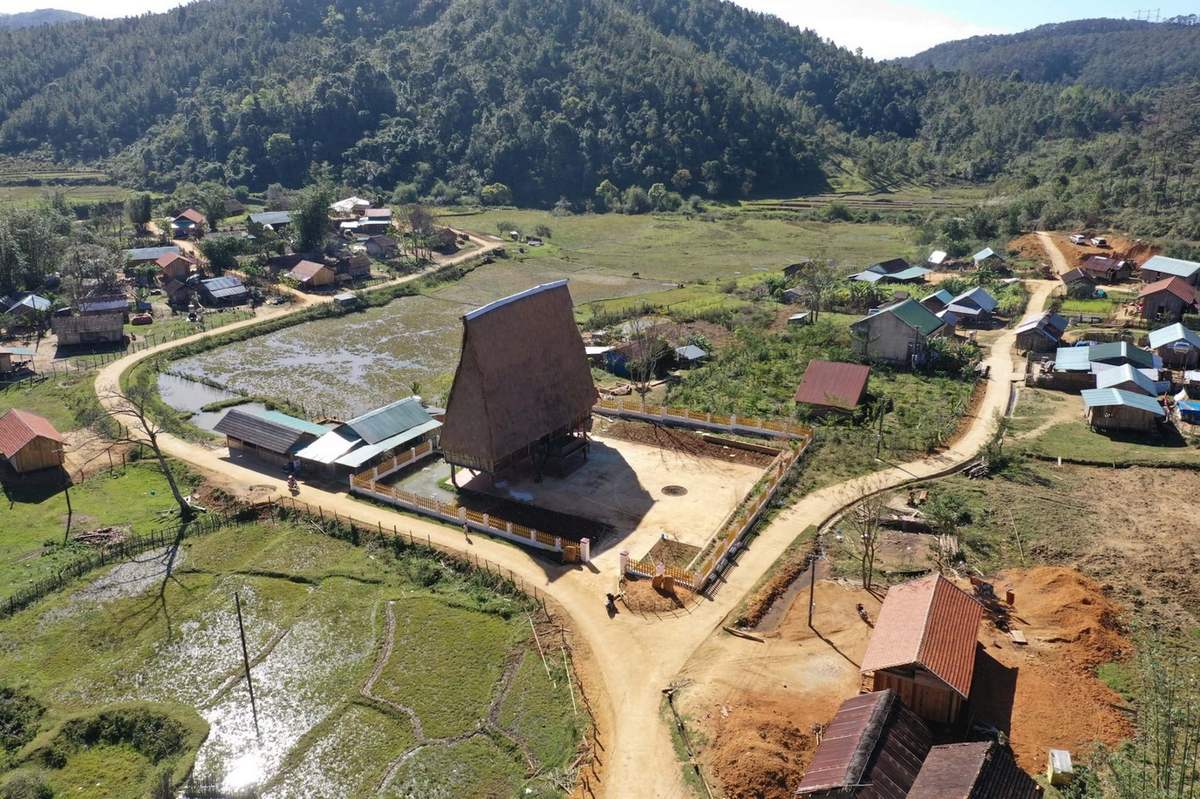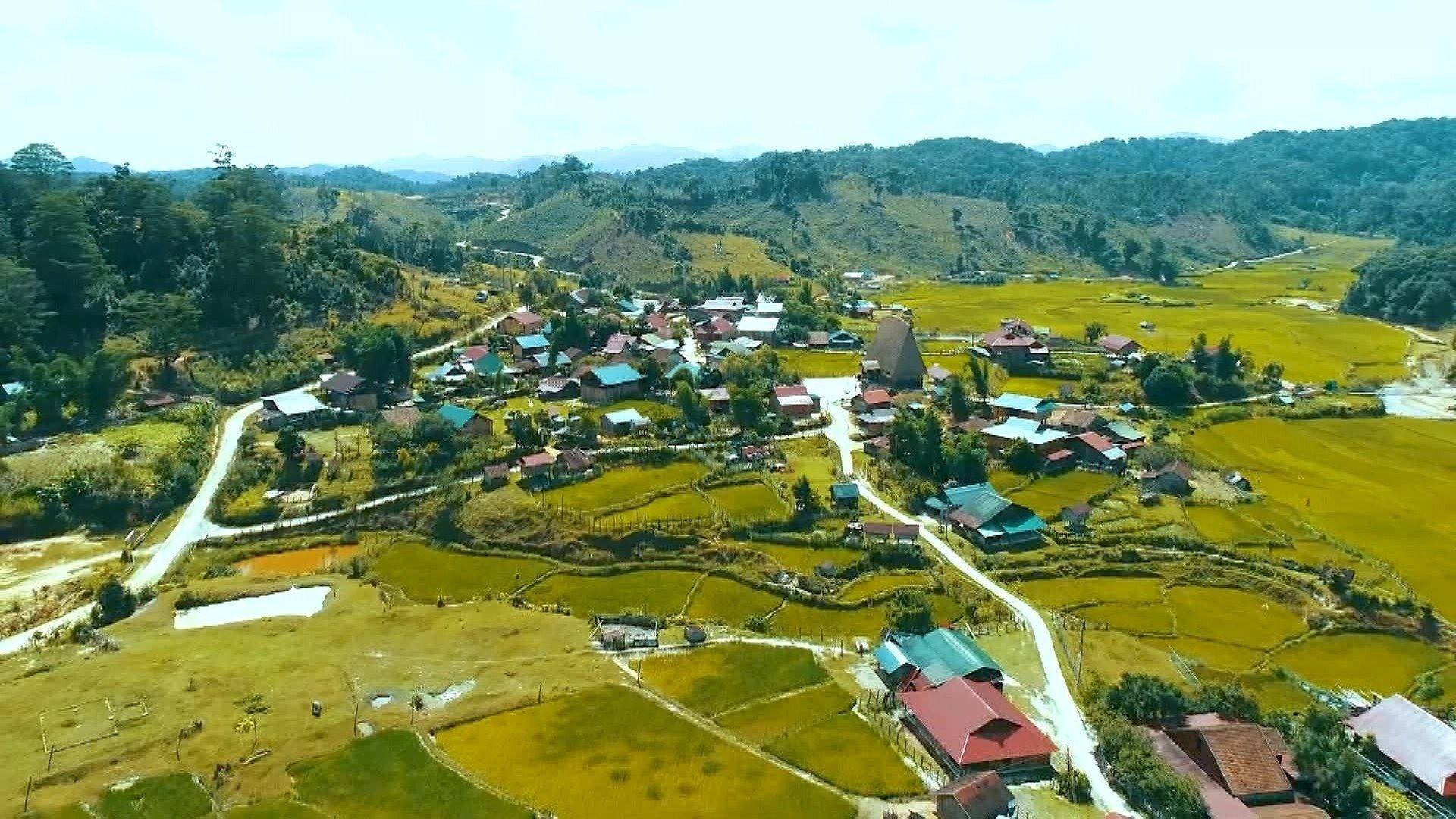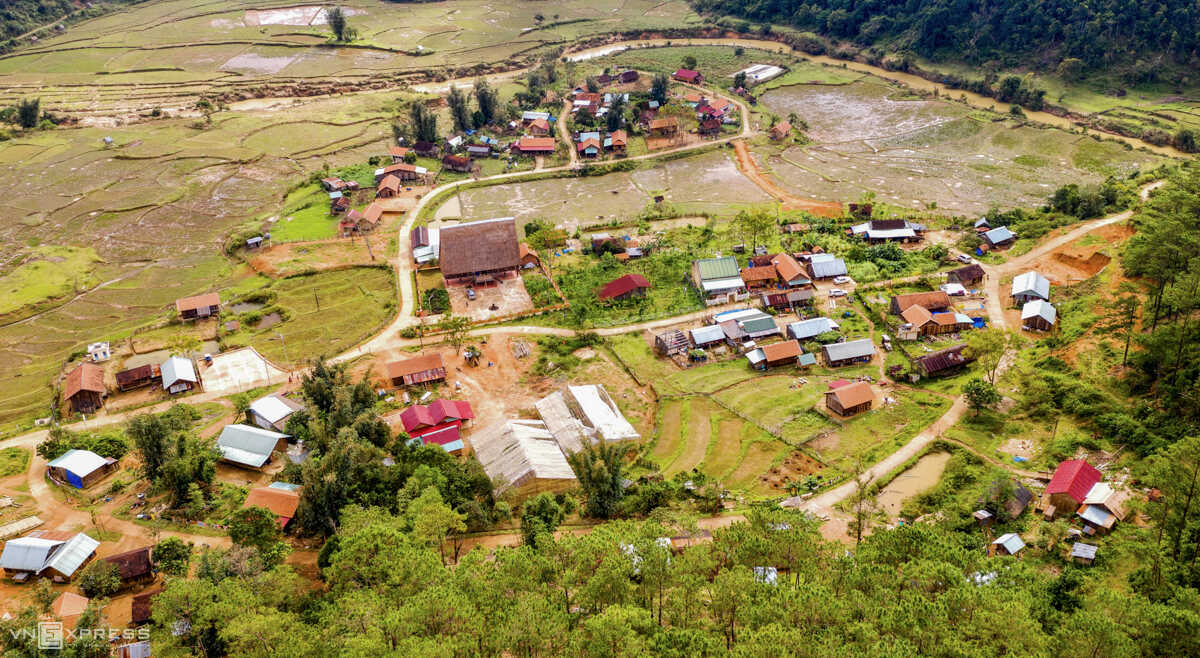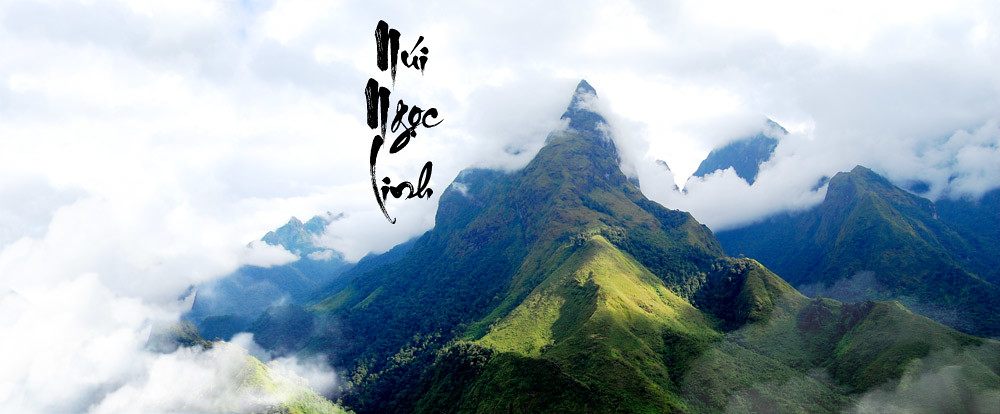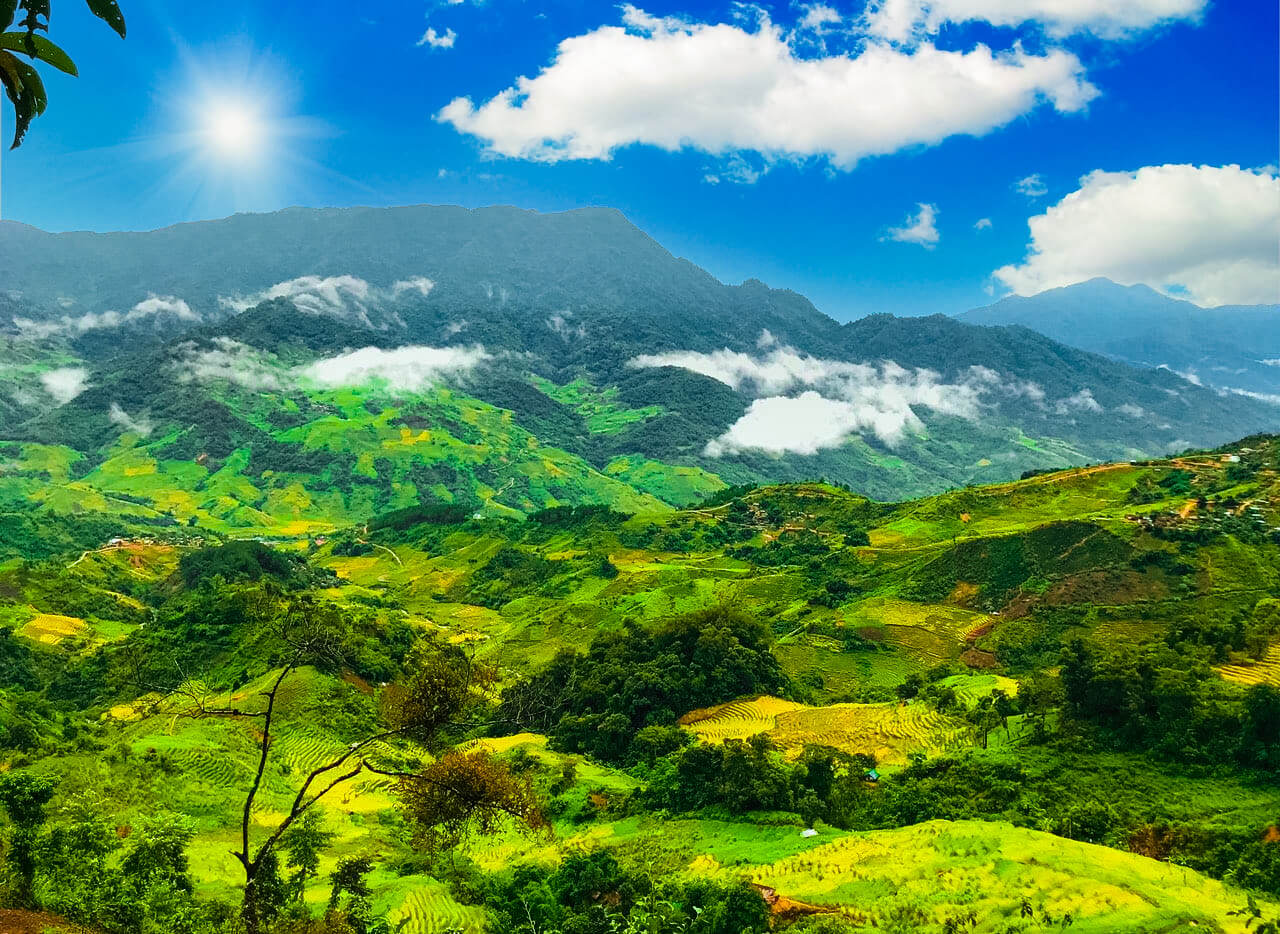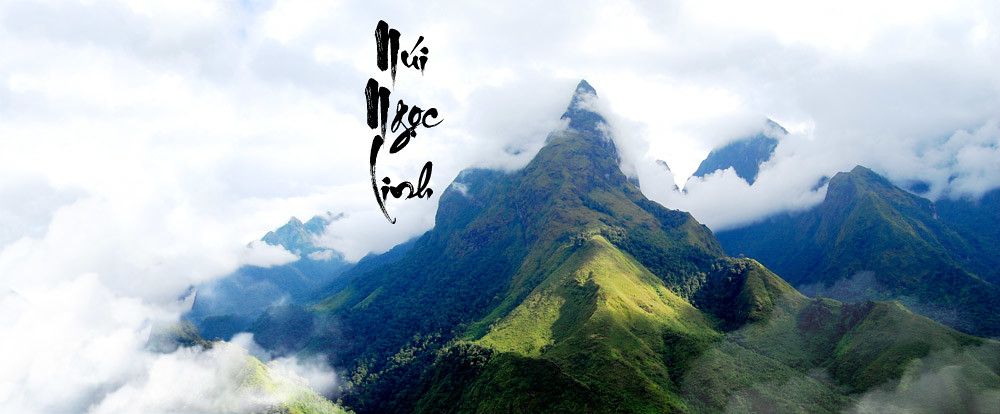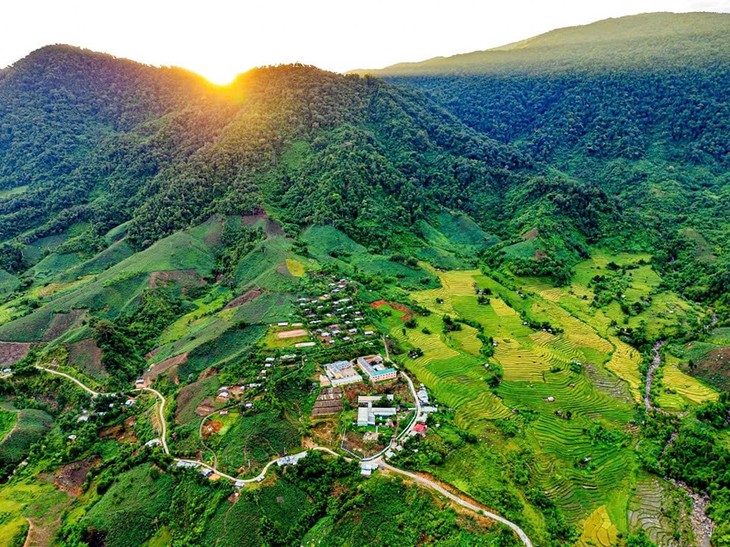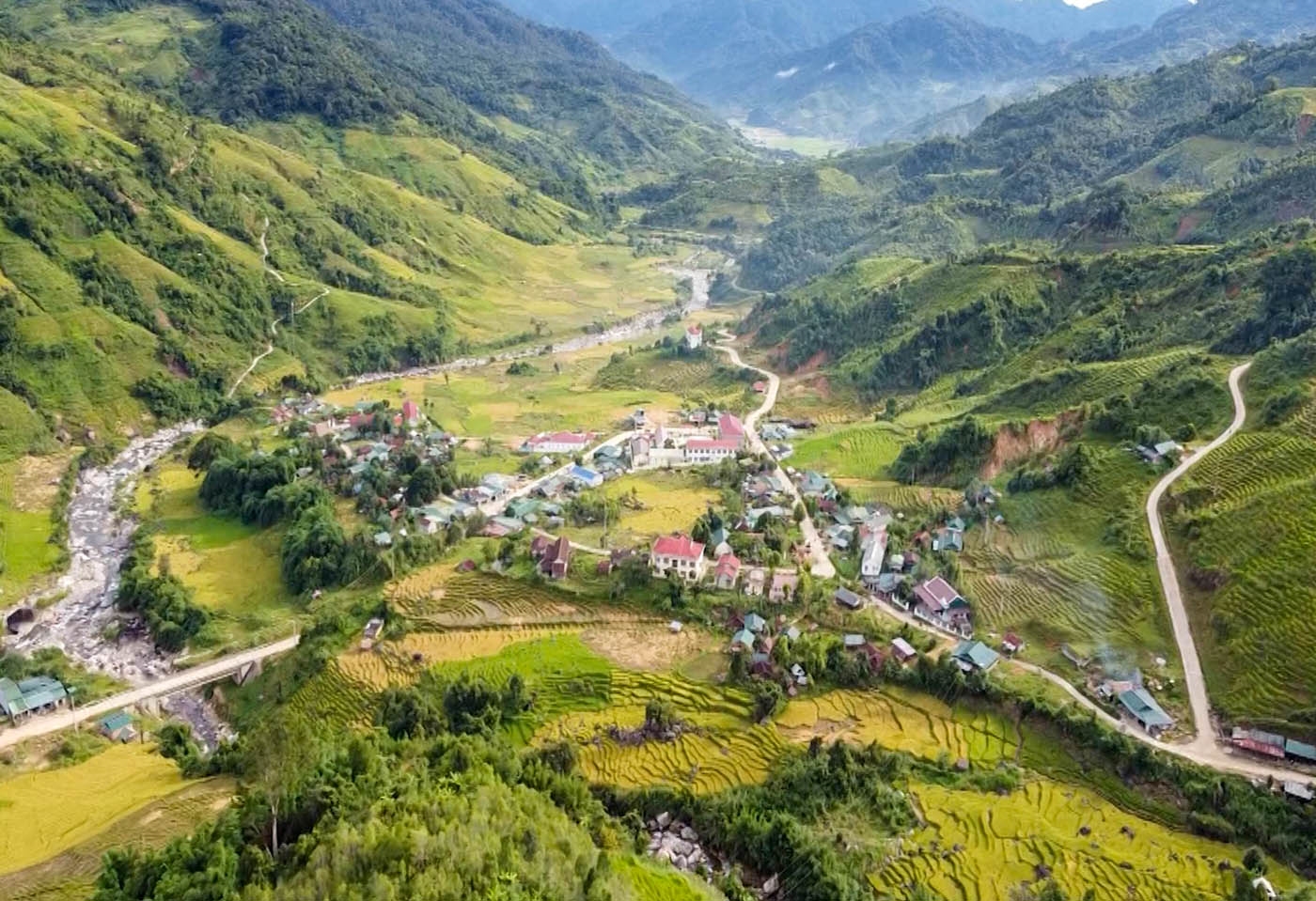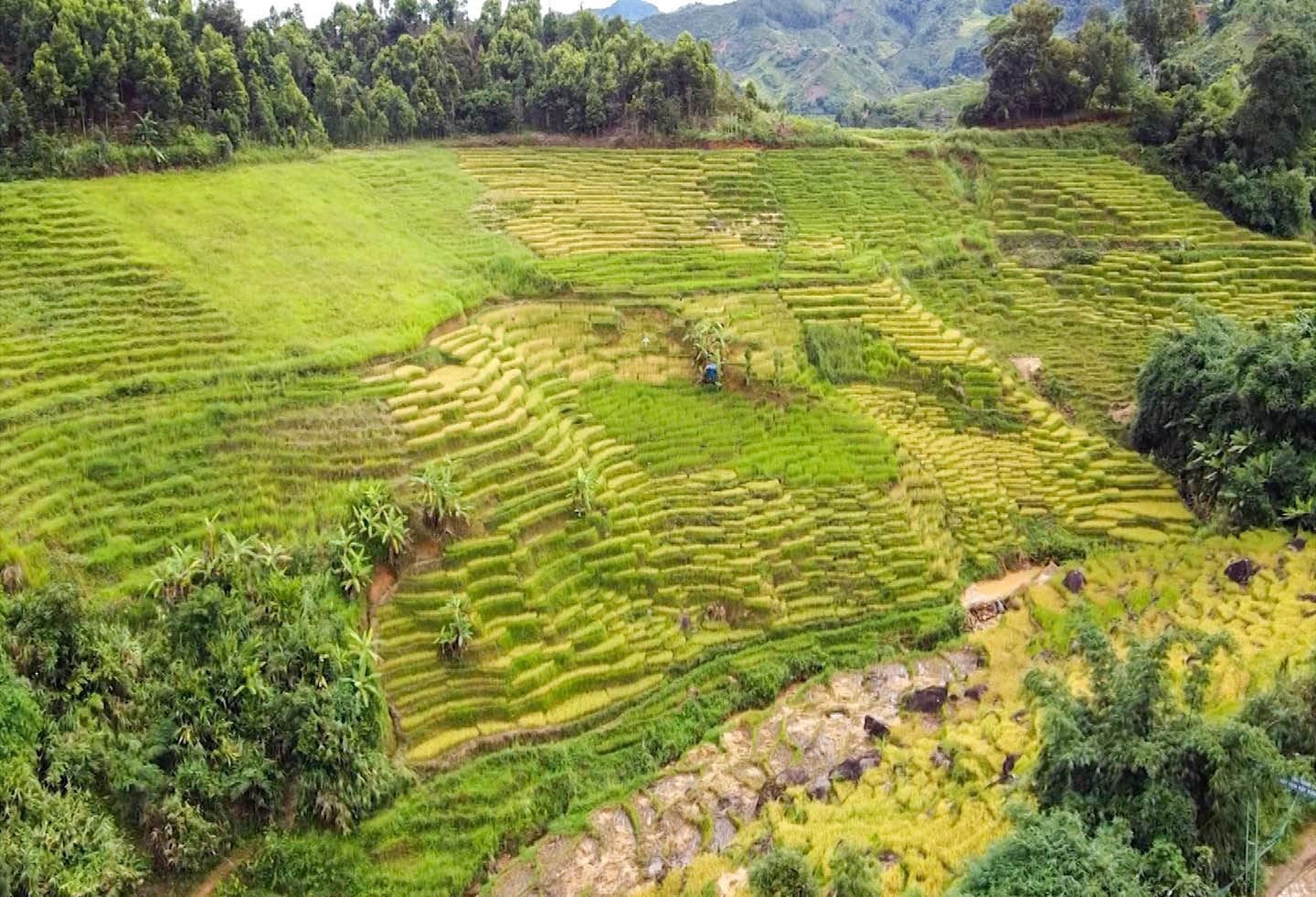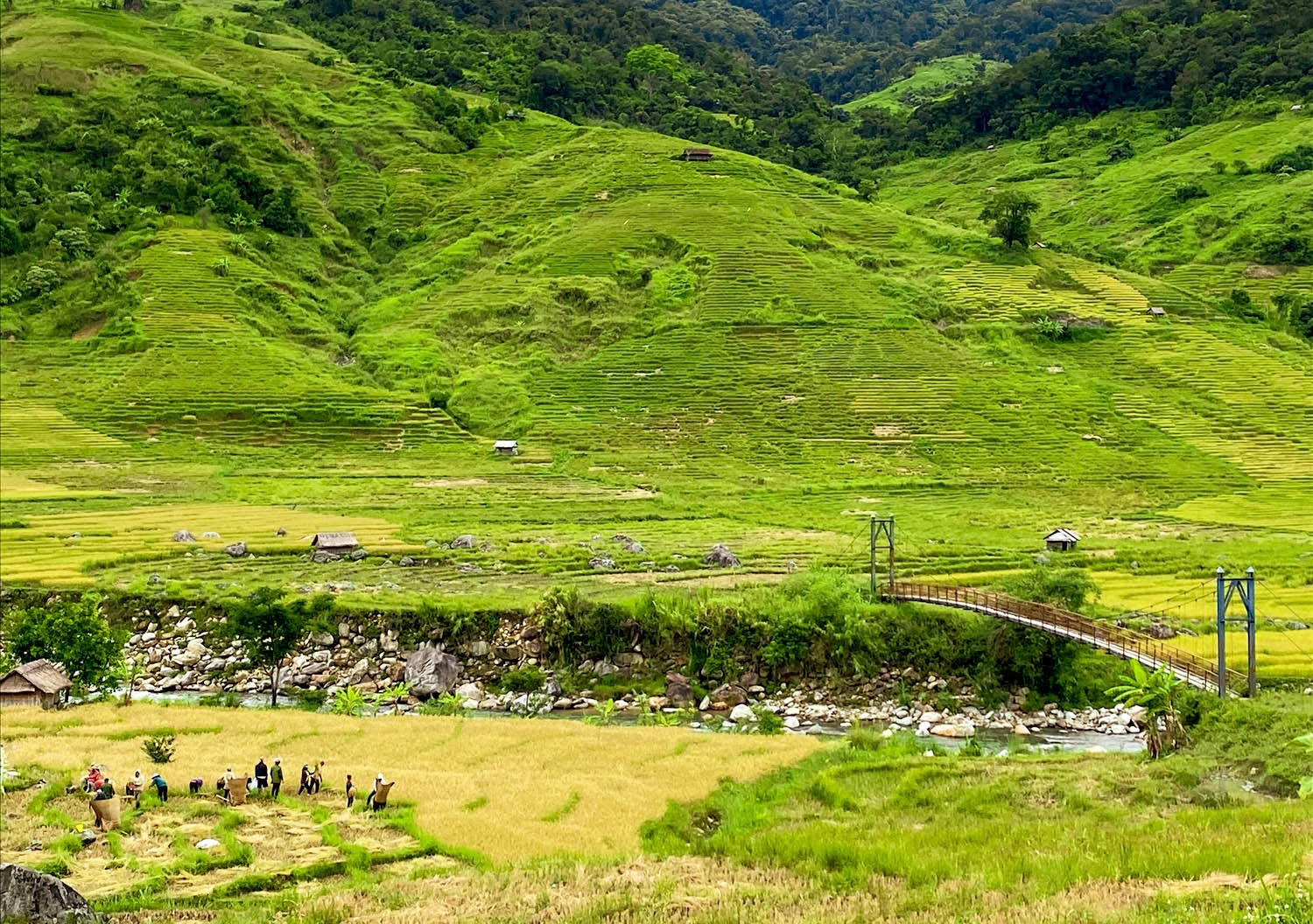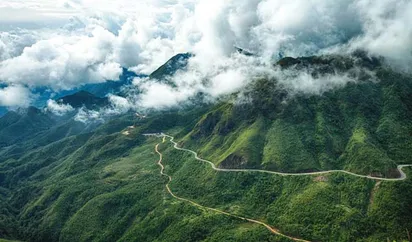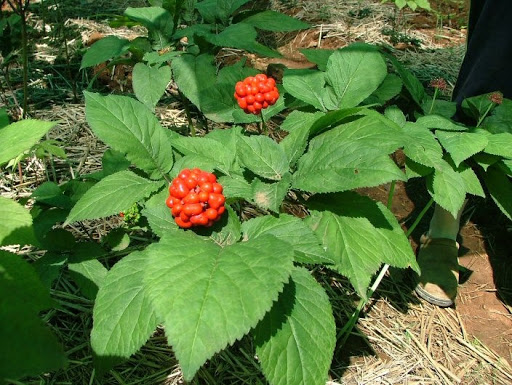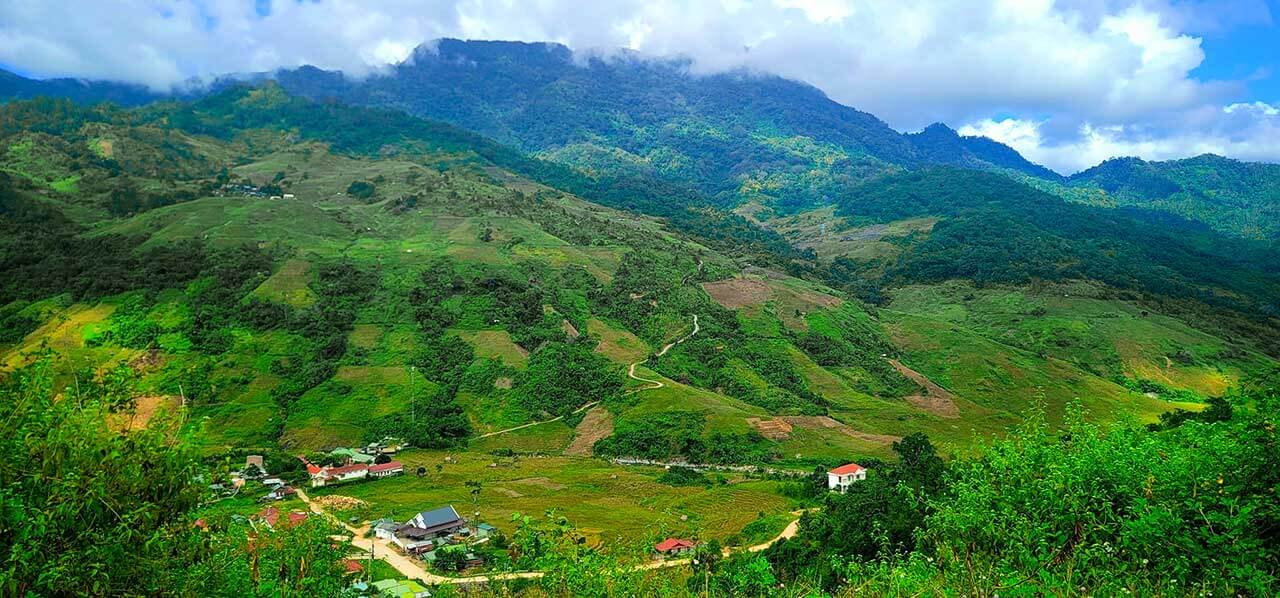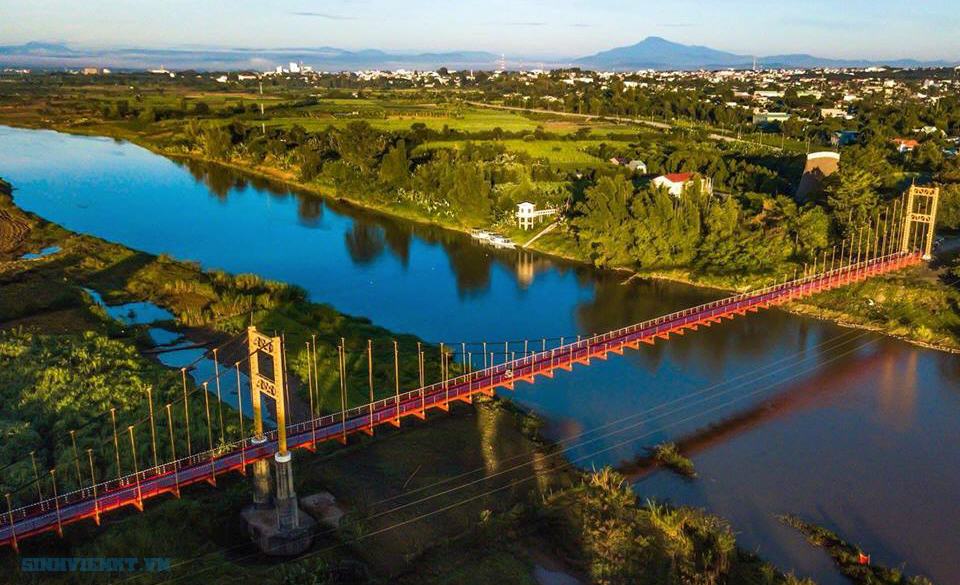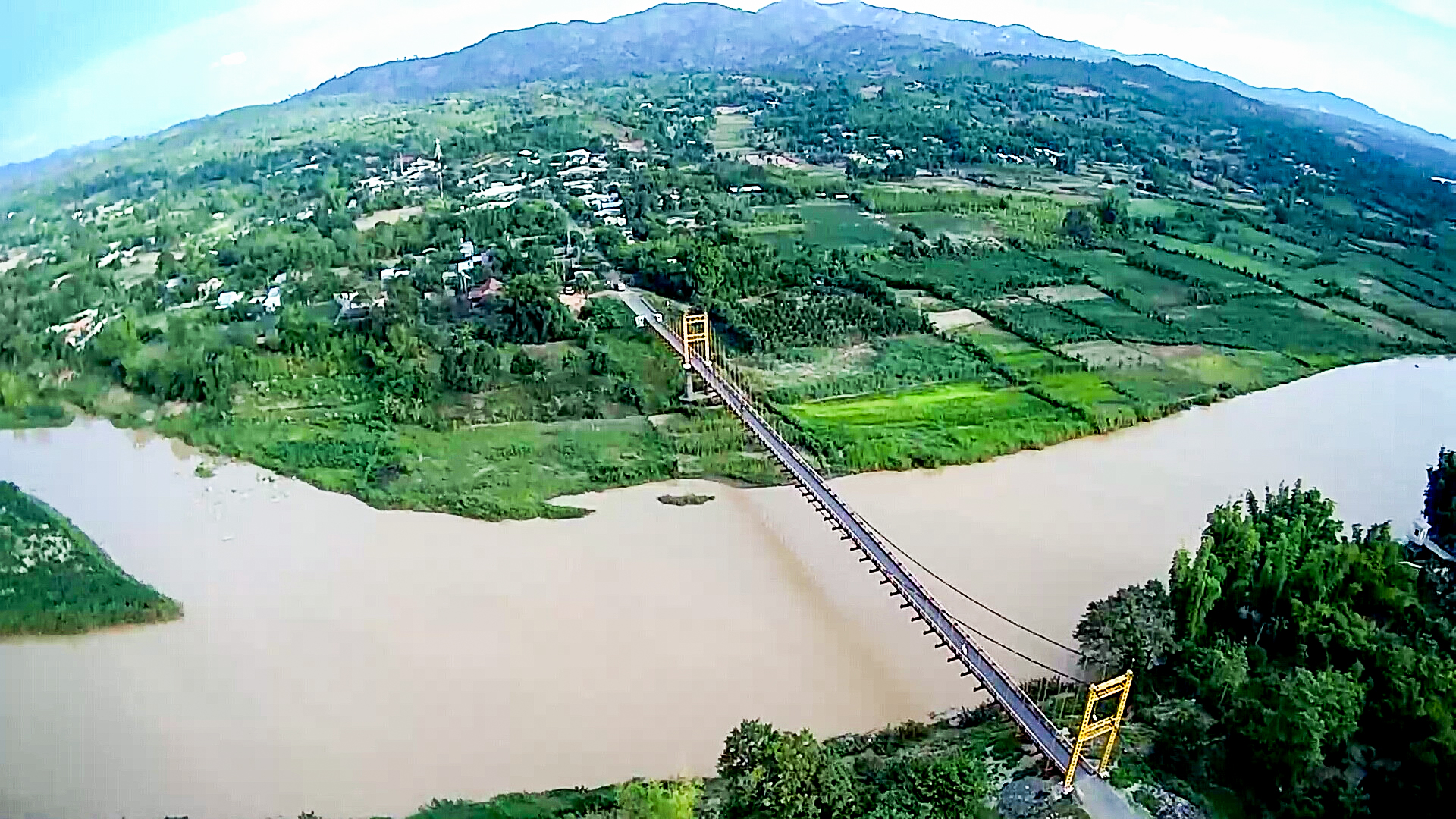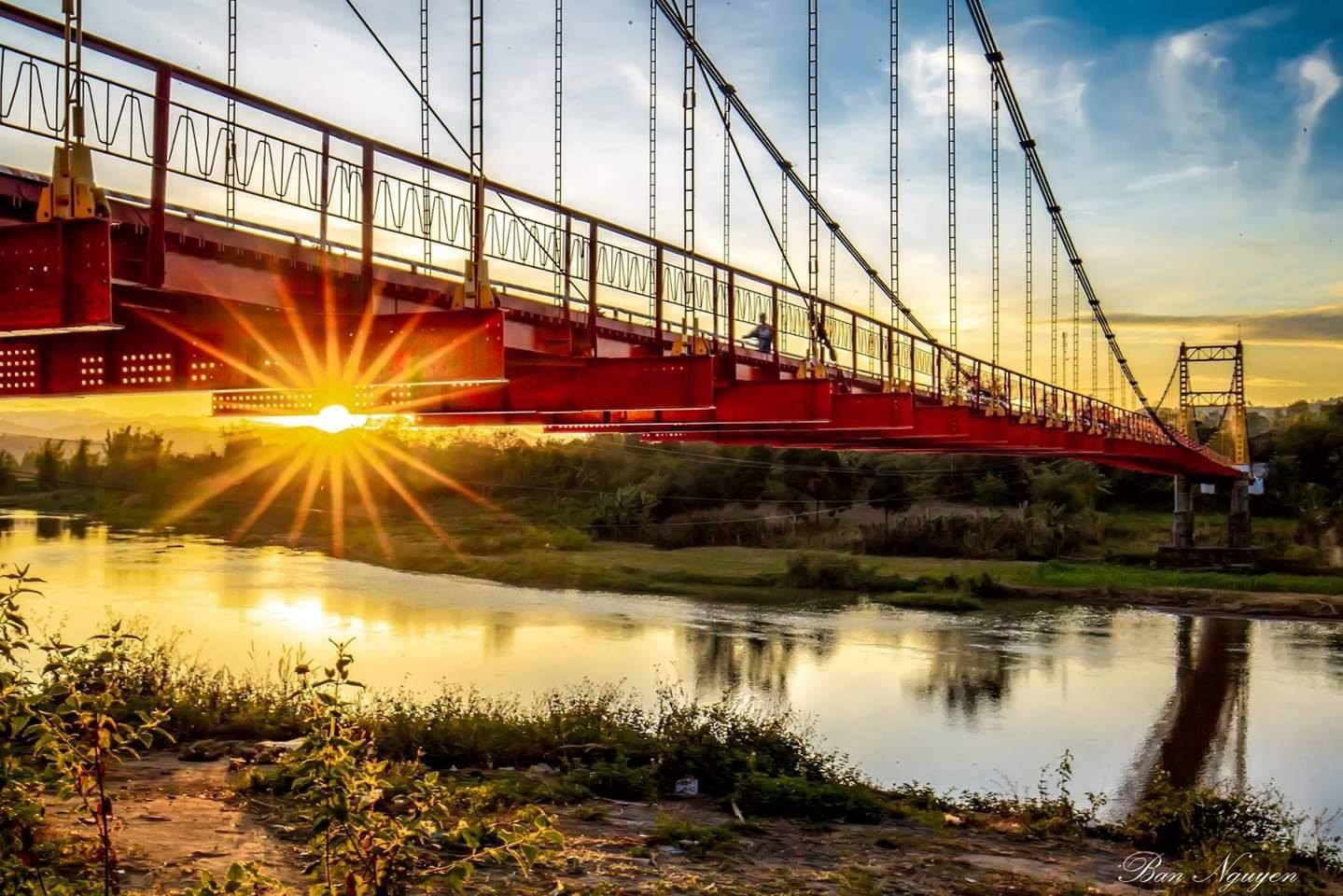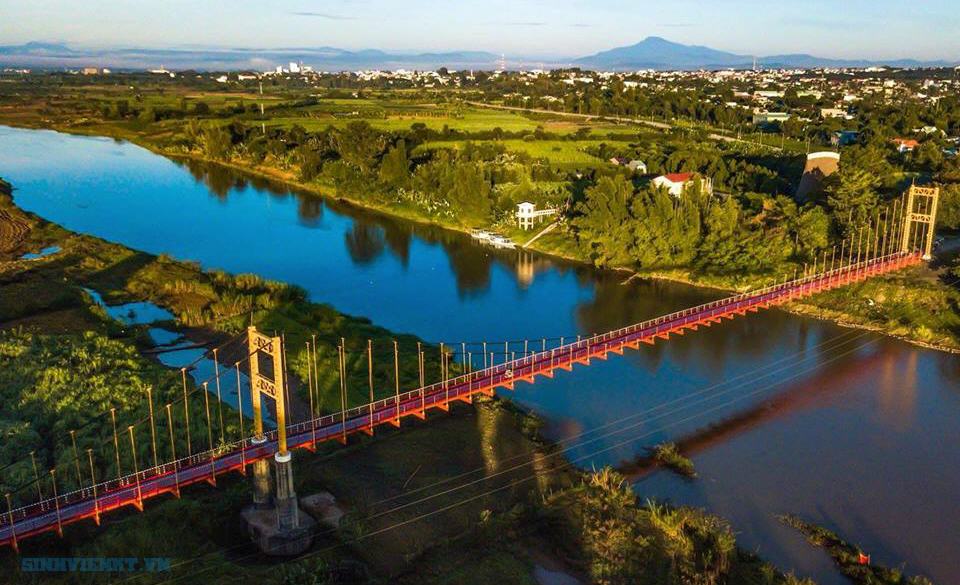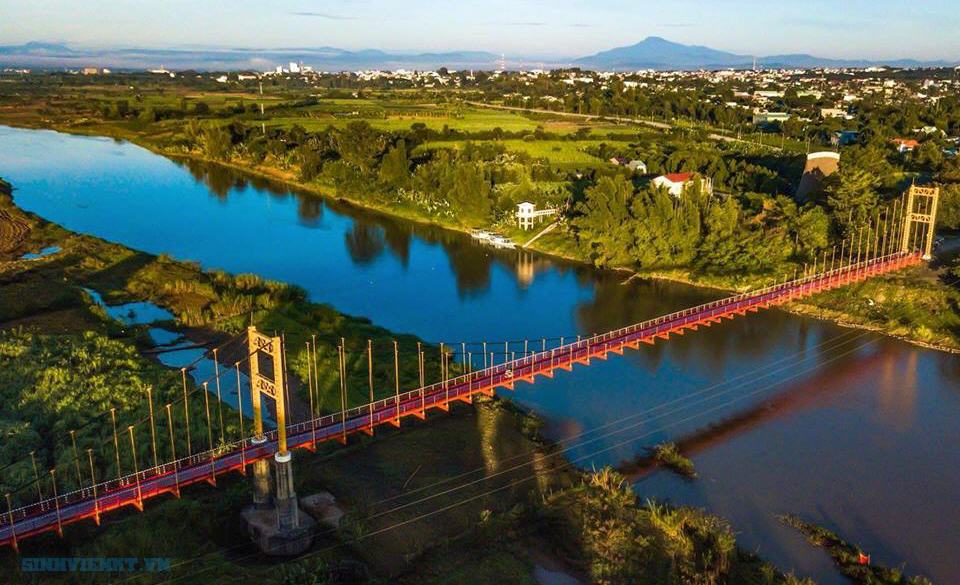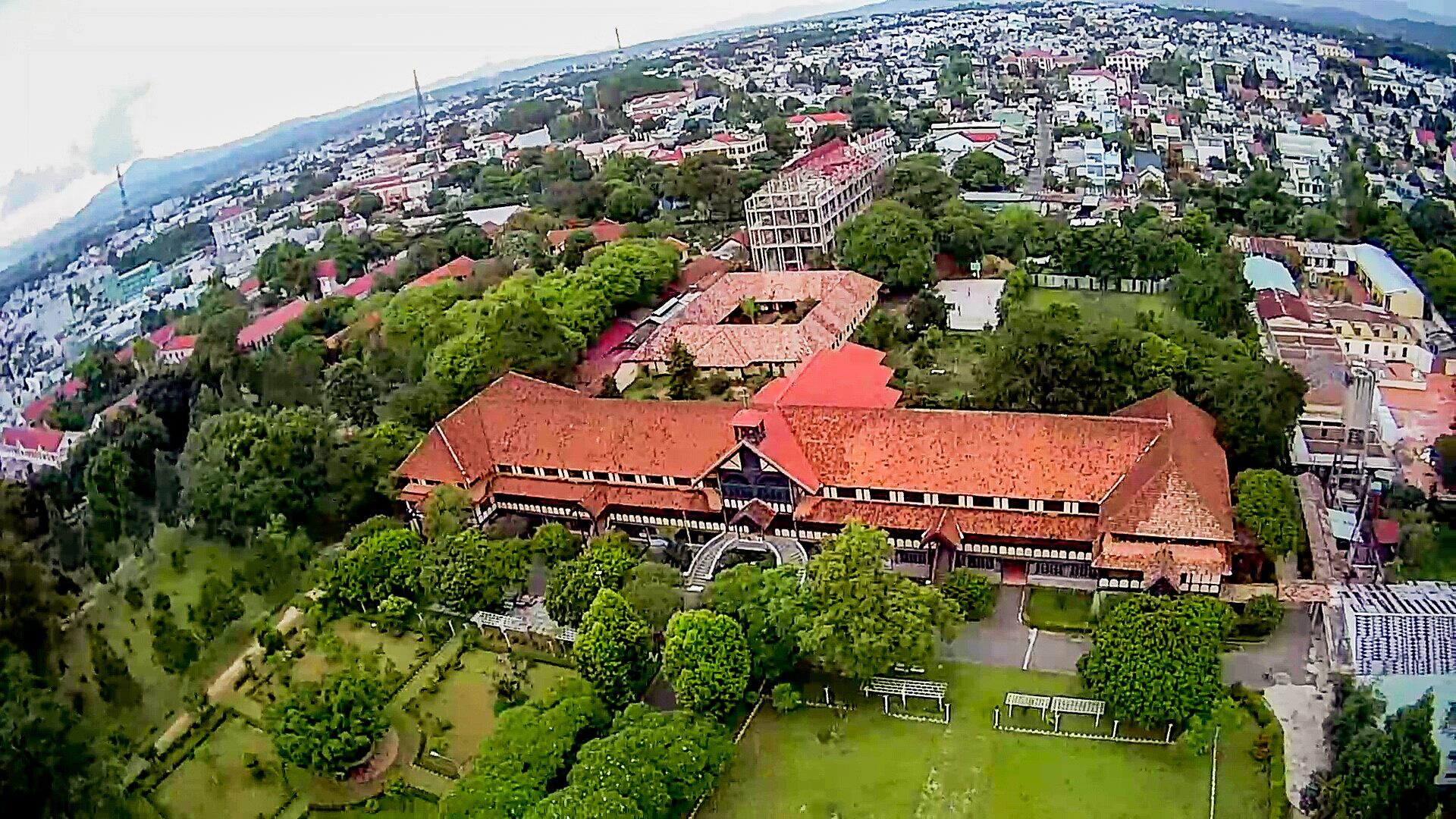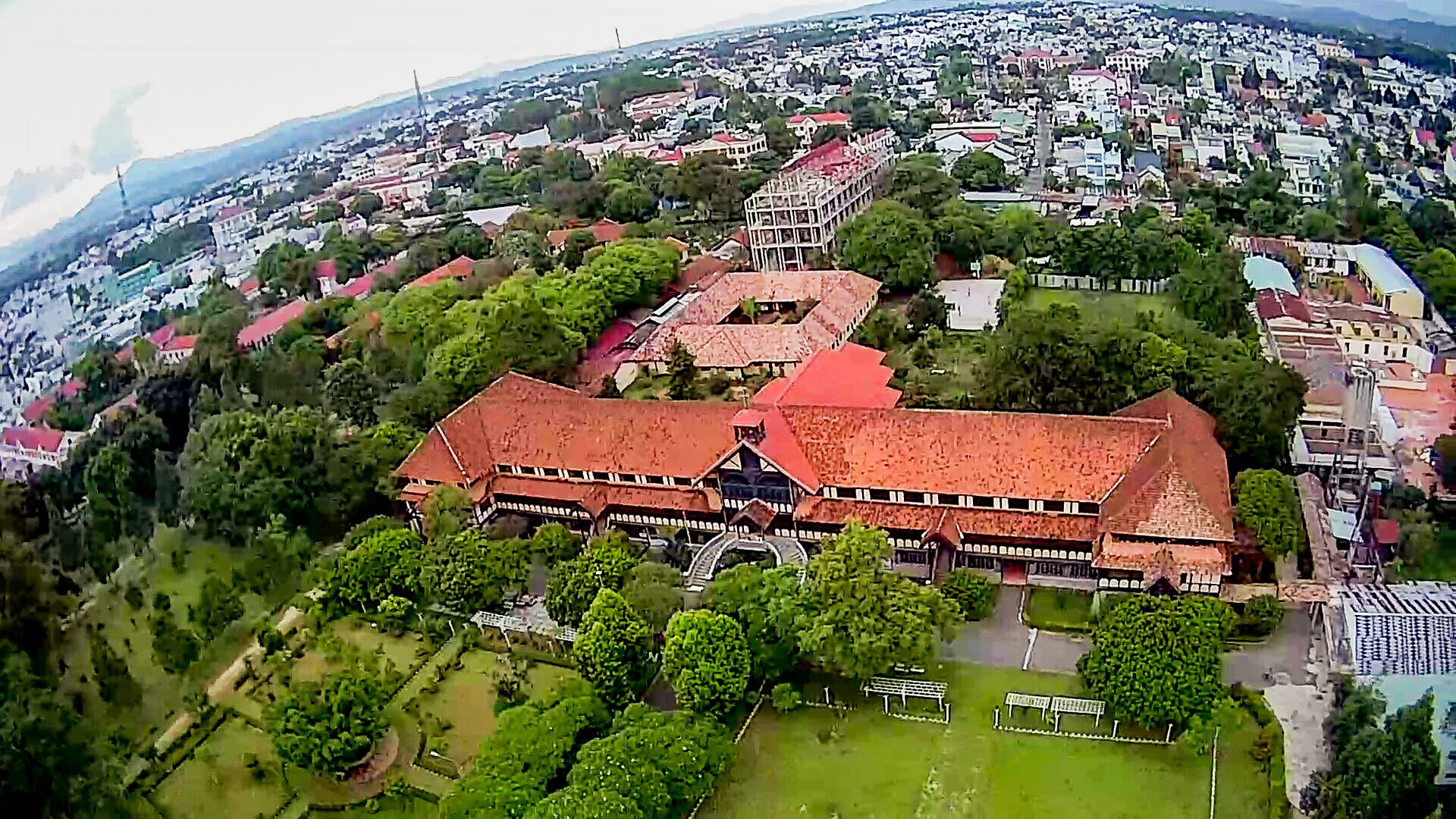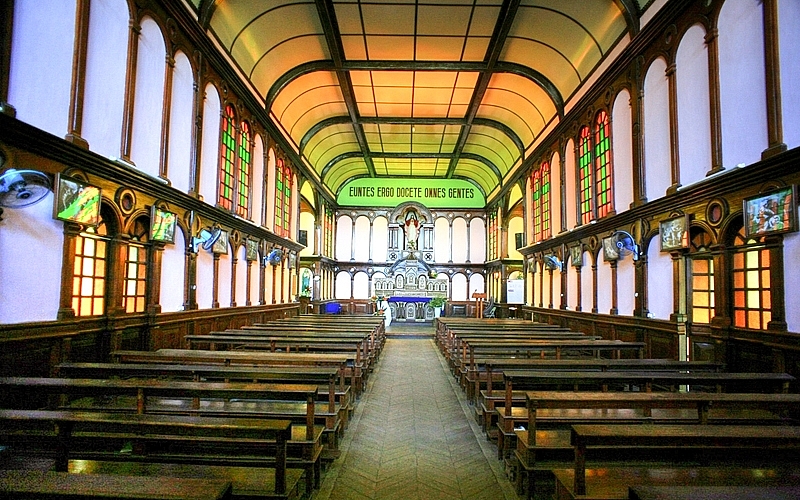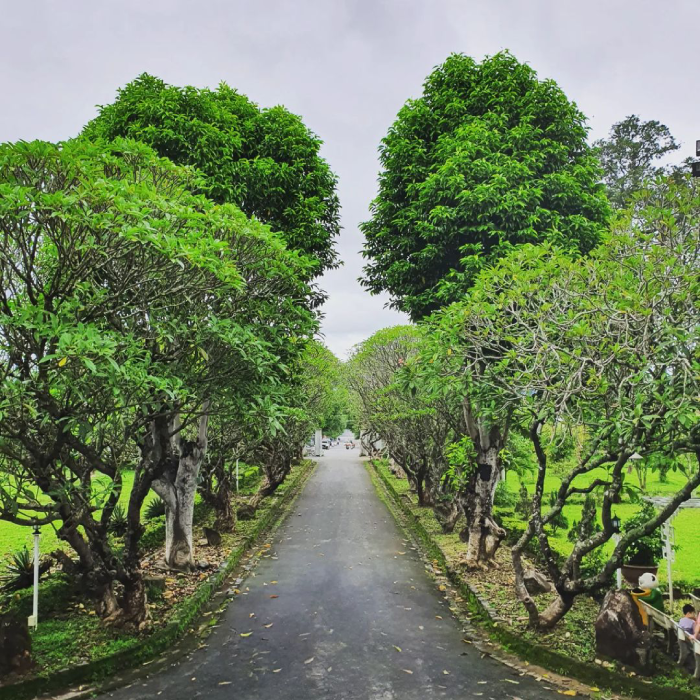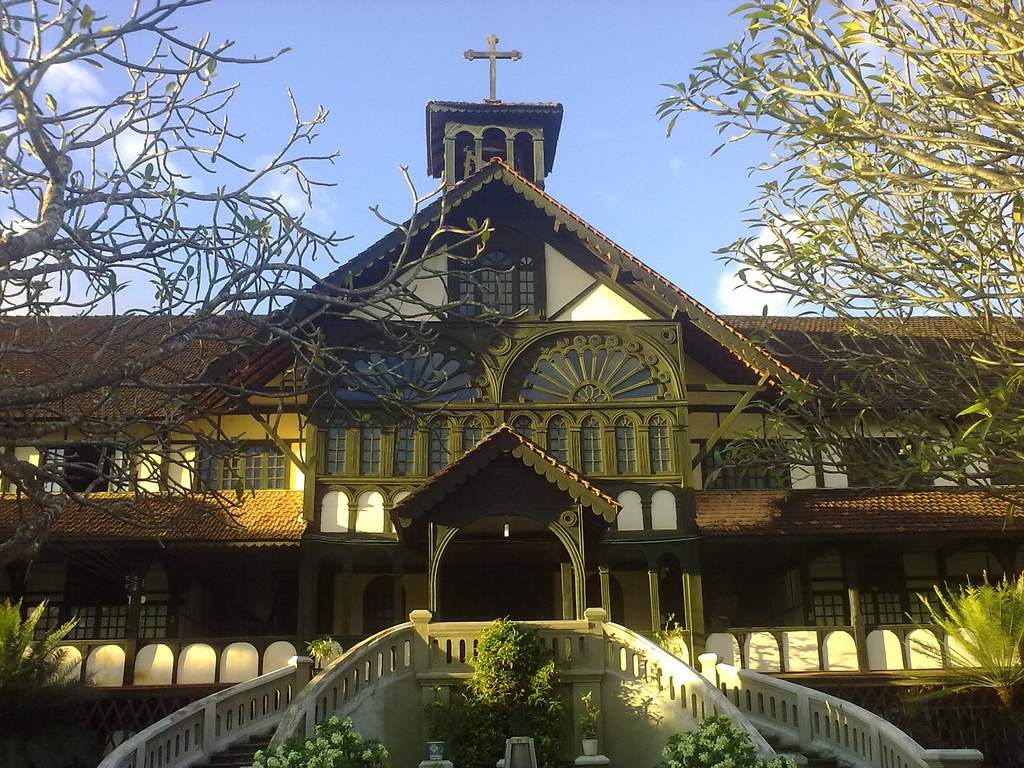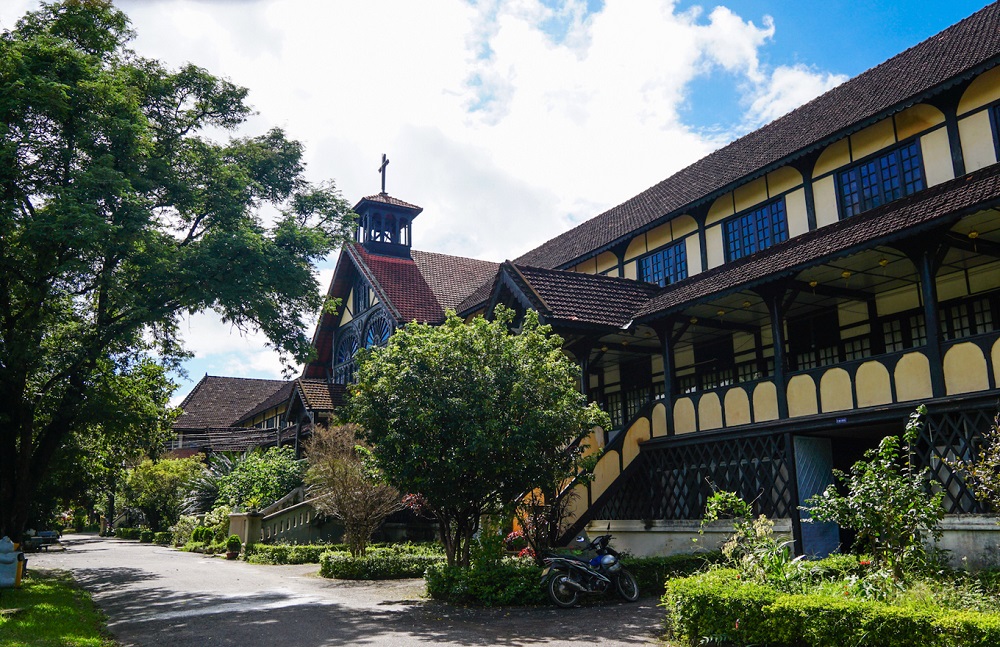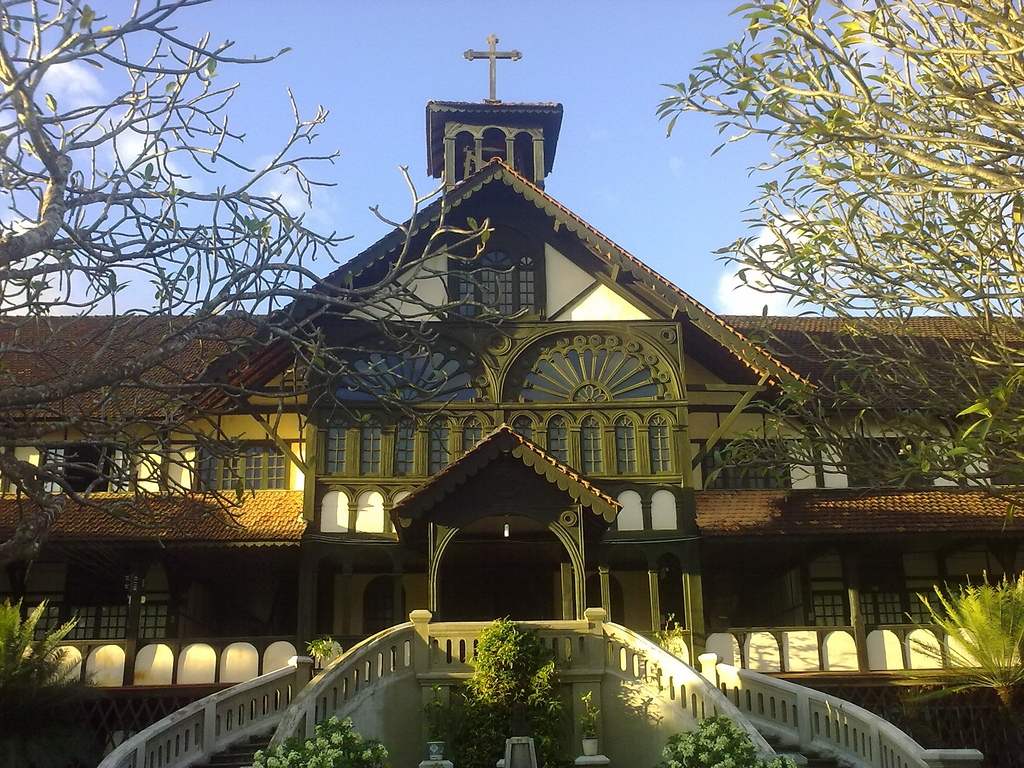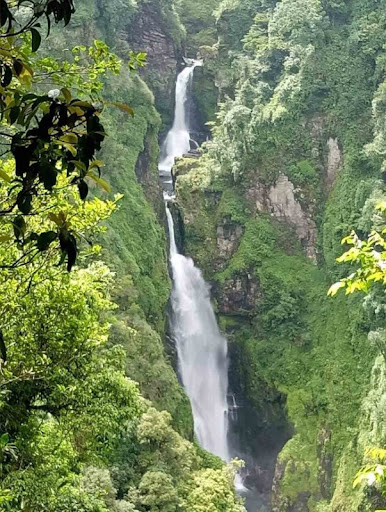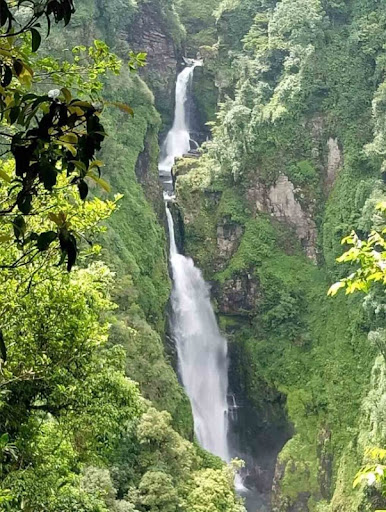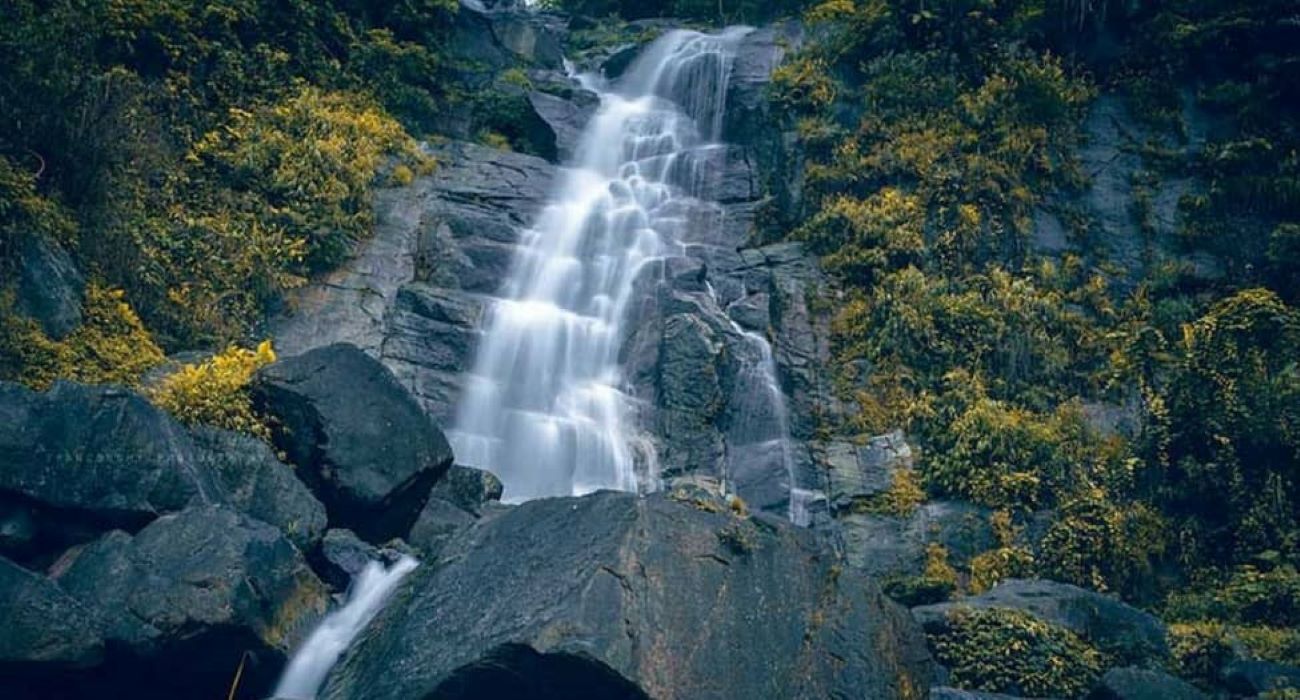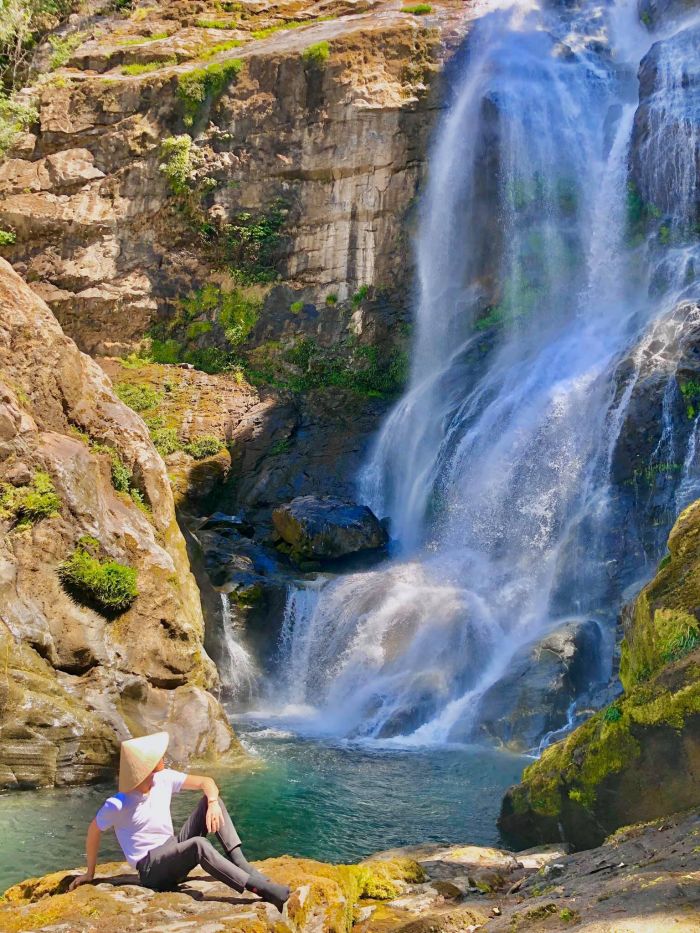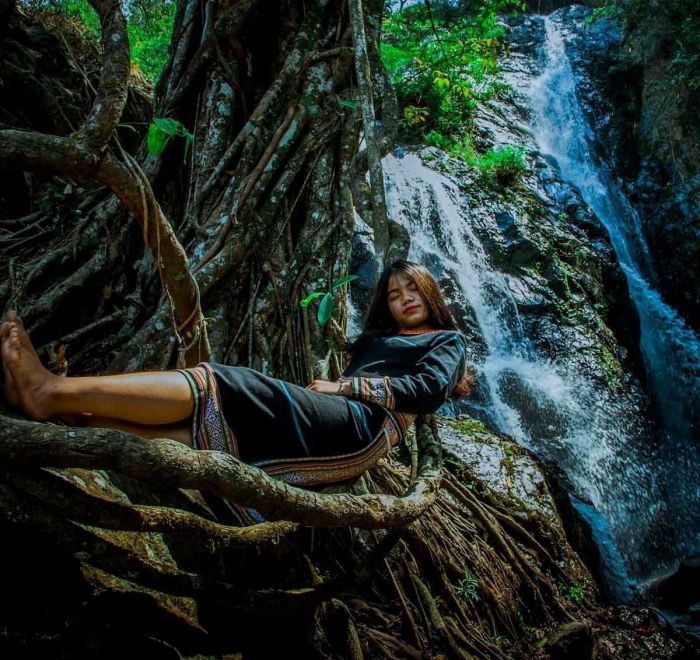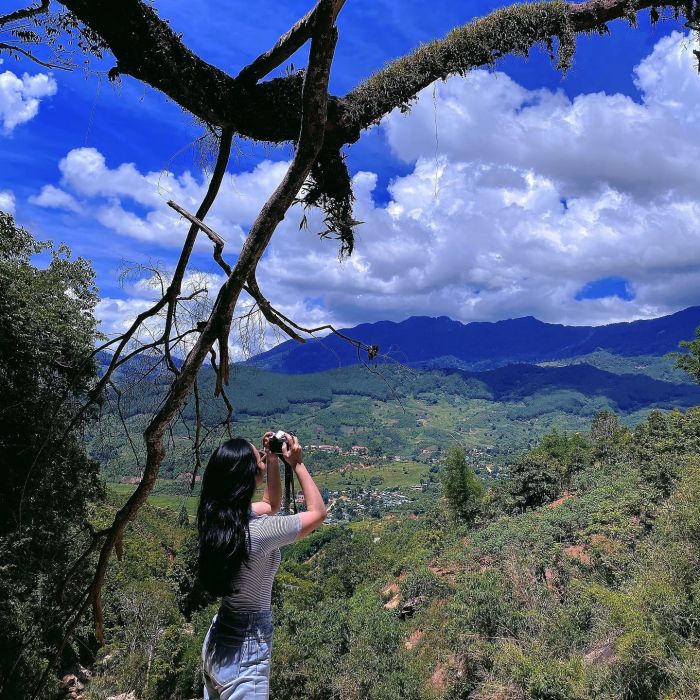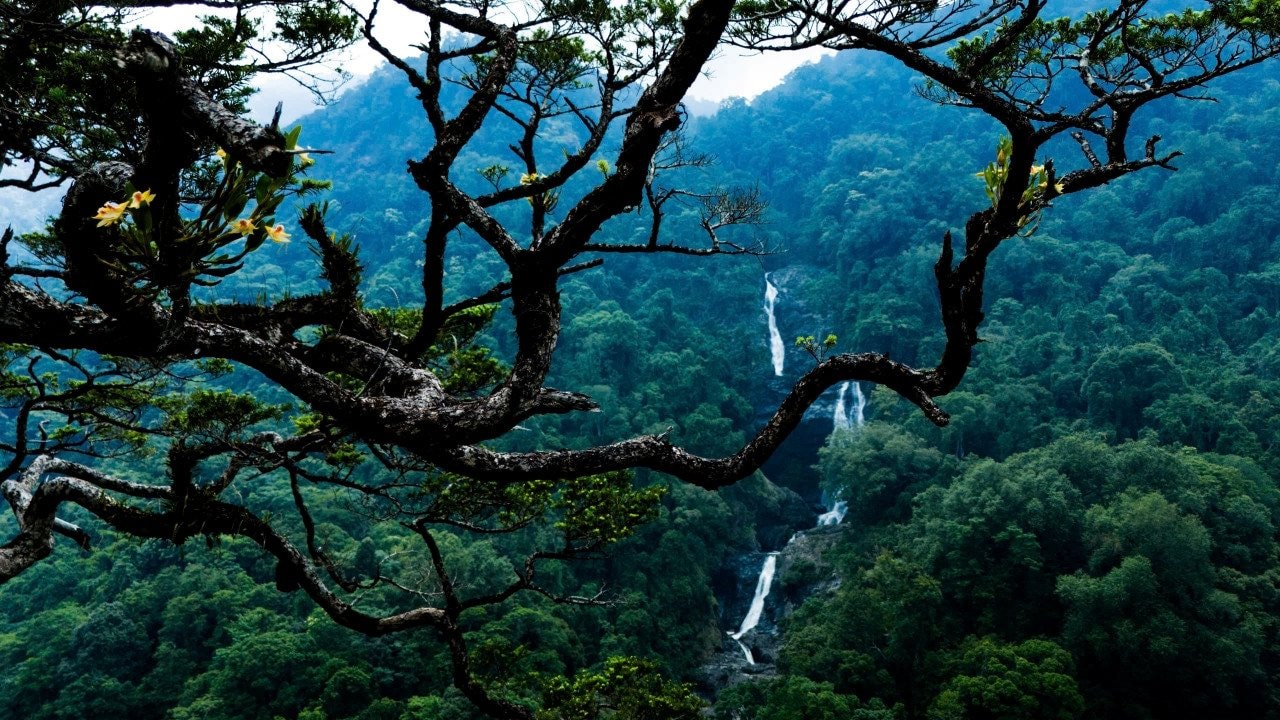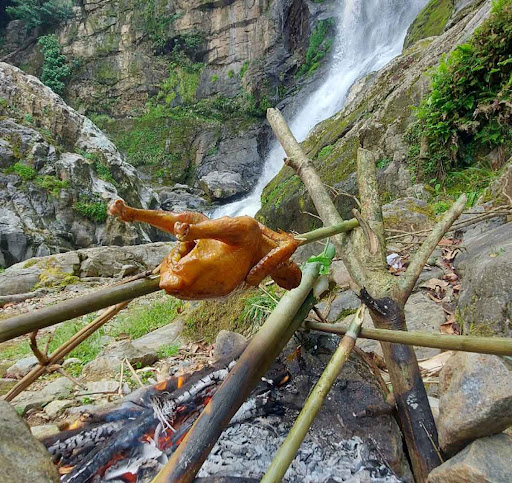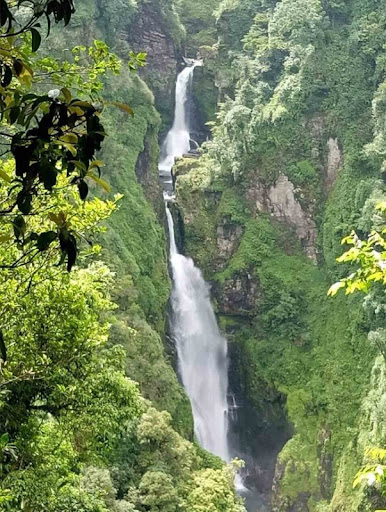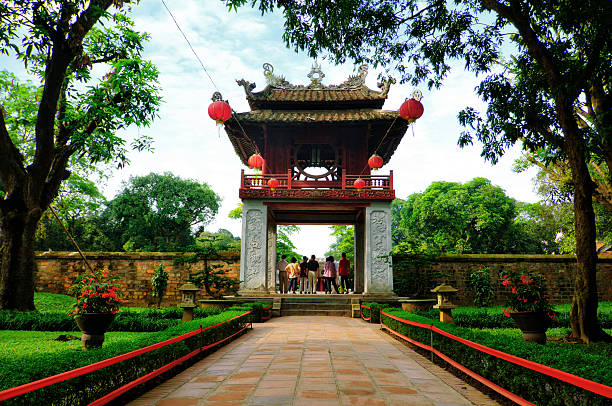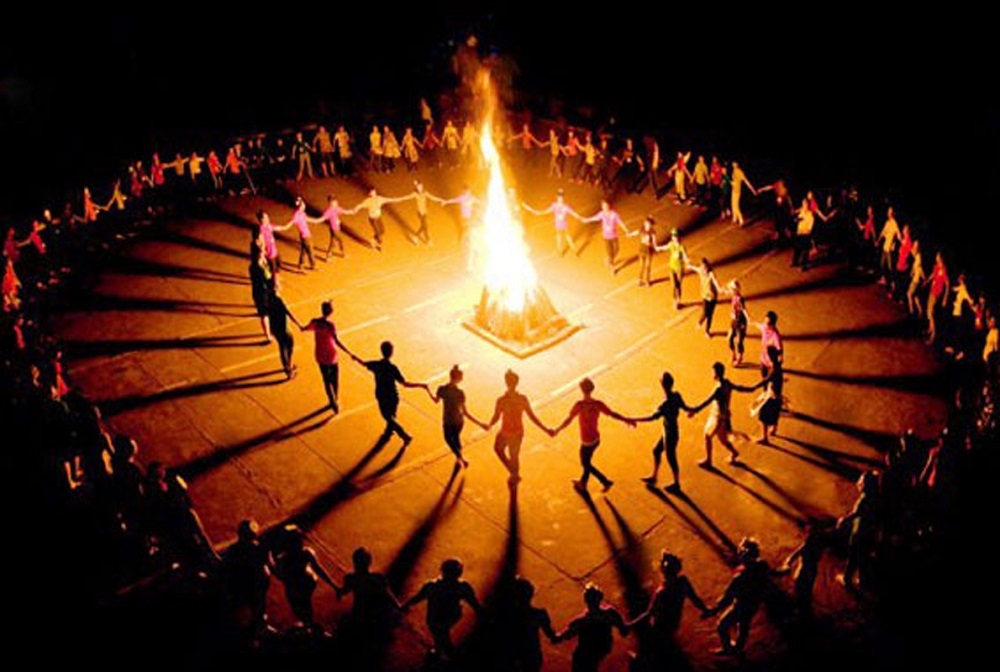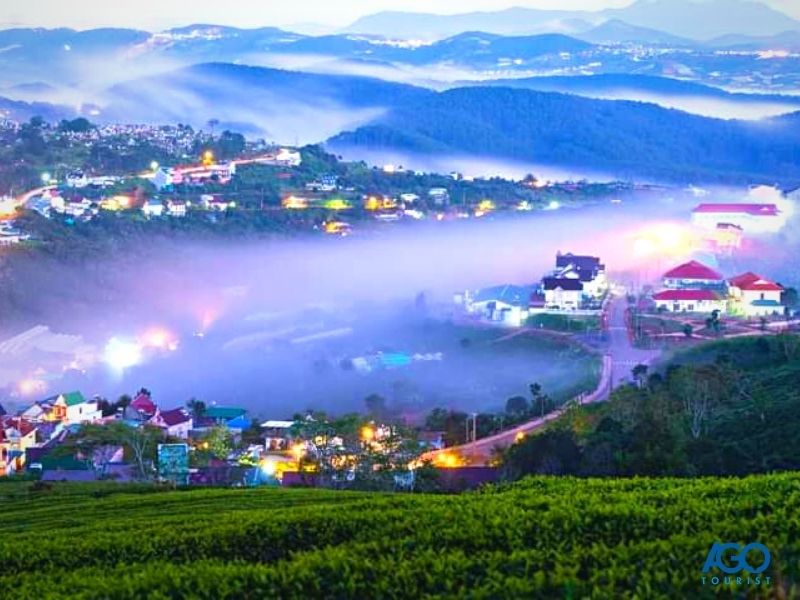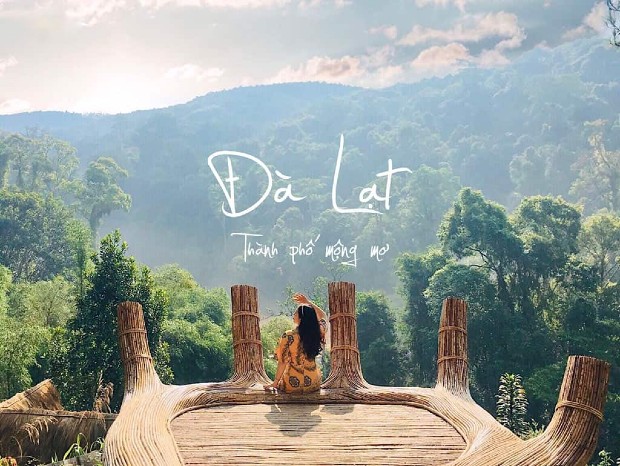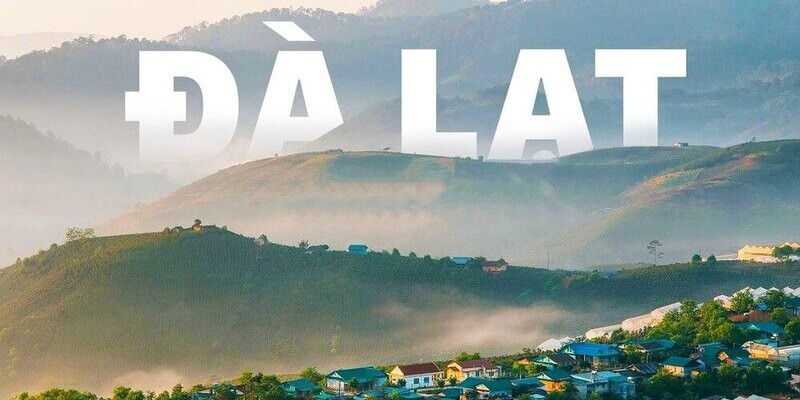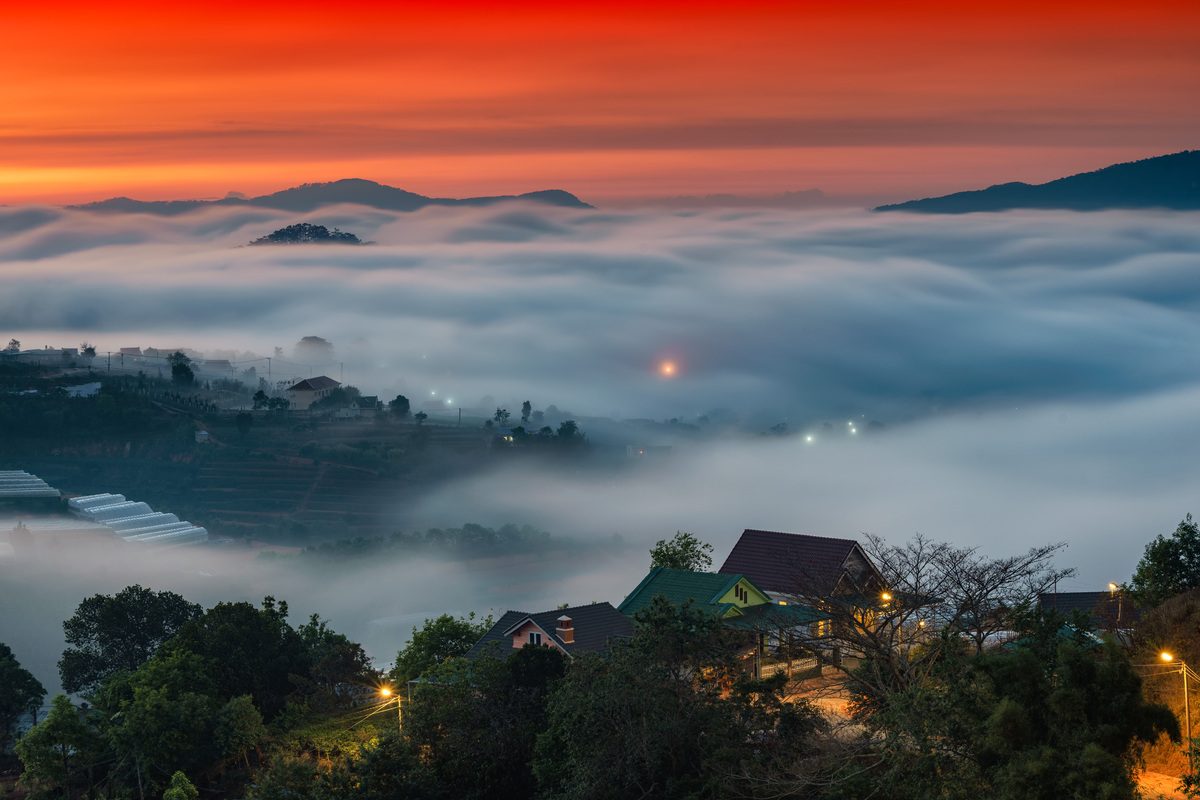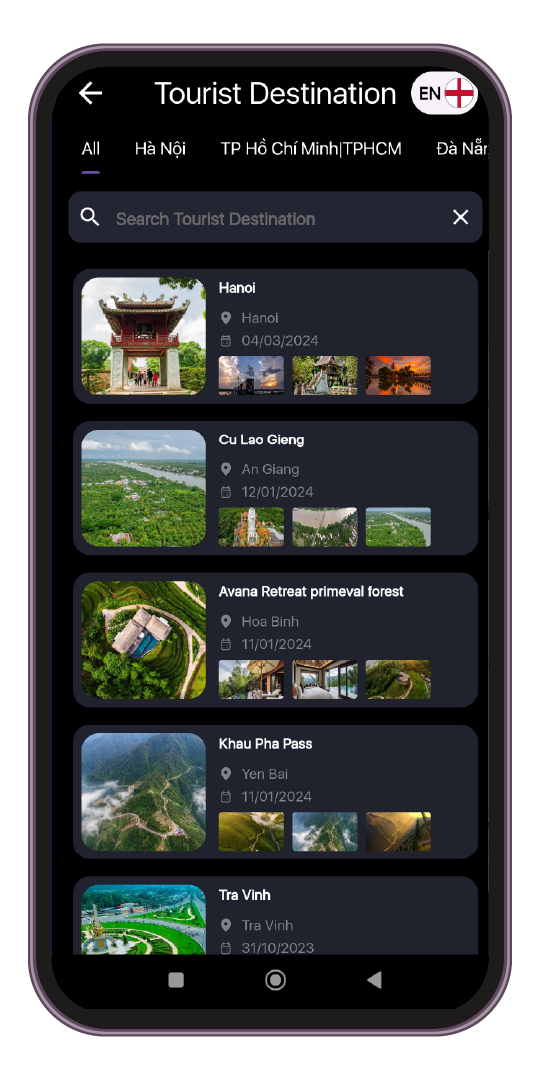Mang Ri terraced fields is one of the ideal attractions in the journey to explore Kon Tum. This place carries the rich beauty, simple life and labor beauty of the highland people, promising to be a memorable mark on your trip to Kon Tum. Mang Ri terraced fields are located at an altitude of 1,200m to 1,500m above sea level. The terrain here is also very special in the form of a basin, all four sides are surrounded by Ngoc Linh range. Thanks to such unique terrain and topography, the Mang Ri Terraces area is suitable for developing wet rice and rare medicinal herbs, especially Ngoc Linh Ginseng. To fully admire the beauty of the golden season of Mang Ri Terraced Fields, you should come to Kon Tum in late May, early June and October. This is the season of ripe rice, not only that, there is also dew in the early mornings. Thick fog, dreamy beauty captivates many hearts. However, the period from when the rice is ripe to when people finish harvesting is very short, usually only about one to two weeks before the entire field is harvested. Besides, the harvest time is not fixed, depending on the year, it will change depending on the weather and people's planting conditions. Therefore, you should learn carefully about the golden season in Mang Ri Rice Terraces, follow articles about Kon Tum travel experiences, and know when the rice blooms so you can somewhat predict when the rice will be ripe. Plan your trip. In addition, if you do not go to Mang Ri Terraced Fields in the yellow season, the green season is also an ideal choice. After about 30 to 45 days of sowing, the young seedling has developed into a mature rice plant, preparing to flower. At this time, the rice stalks and rice leaves are large enough, creating a lush green color that covers the terraced fields. Unlike the rich beauty of the golden season, at this time the fields will be immersed in beautiful greenness, full of vitality. When the rice blooms, the scent of young rice wafting in the air makes you even more captivated. Since ancient times, people living in Mang Ri in particular and Kon Tum in general have known how to take advantage of underground water sources from within. flowing mountains. From there, they can conveniently farm and grow food. To adapt to the terrain here, people have built terraced fields and grown two crops a year, thanks to which they have had a prosperous life for many centuries. Mang Ri terraced fields have a terrain that gradually slopes along the hillside, so when you stand from above and look down, you will see small paths located symmetrically, forming a very beautiful, completely different leaf vein shape. compared to terraced fields in other places. When the rice season comes, people here will go to the fields together to harvest. Households harvest rice manually, using sickles and drying it with human power. The small bodies on the vast fields, the life of selling one's back to the earth and selling one's face to the sky, drops of sweat pouring down on terraced fields in the sweltering midday sun. Following the people to the village, you will enter simple houses and explore the ancient architecture of the Xo Dang people. Although their lives are still very difficult and lack many things, the people here are always very friendly and enthusiastic with tourist groups. If you are unlucky enough to come to Mang Ri Rice Terraces when people have just finished harvesting, and there is no longer a golden season for you to check-in and admire, there are still many interesting things waiting for you to experience. One of them is the Kon Tum New Rice Celebration Festival of the Xo Dang community. After finishing the harvest, the people in the village will organize a festival together, offering newly harvested rice grains with sincerity and gratitude to heaven, earth, and gods for giving them favorable weather and wind in the village. warm and full. You can immerse yourself in the jubilant festival atmosphere, learn about unique cultural features, listen to soothing folk melodies, watch Xo Dang girls dance the traditional sinus dance, etc. These experiences will certainly be unforgettable memories in your journey to explore the land of Kon Tum. Mang Ri terraced fields attract travel enthusiasts because of their unique, brilliant, and rich beauty. ecstatic people. When you come here during the time when the rice is ripe, you will admire the golden terraced fields glowing in the sunlight, stretching to the horizon. The yellow color of ripe rice stands out against the green background of the mountains and forests, making this land even more poetic.
Kon Tum 501 view From April to October
Ngày cập nhật : 20/12/2024


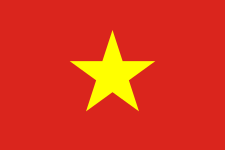 vn
vn en
en ja
ja ko
ko zh
zh


















